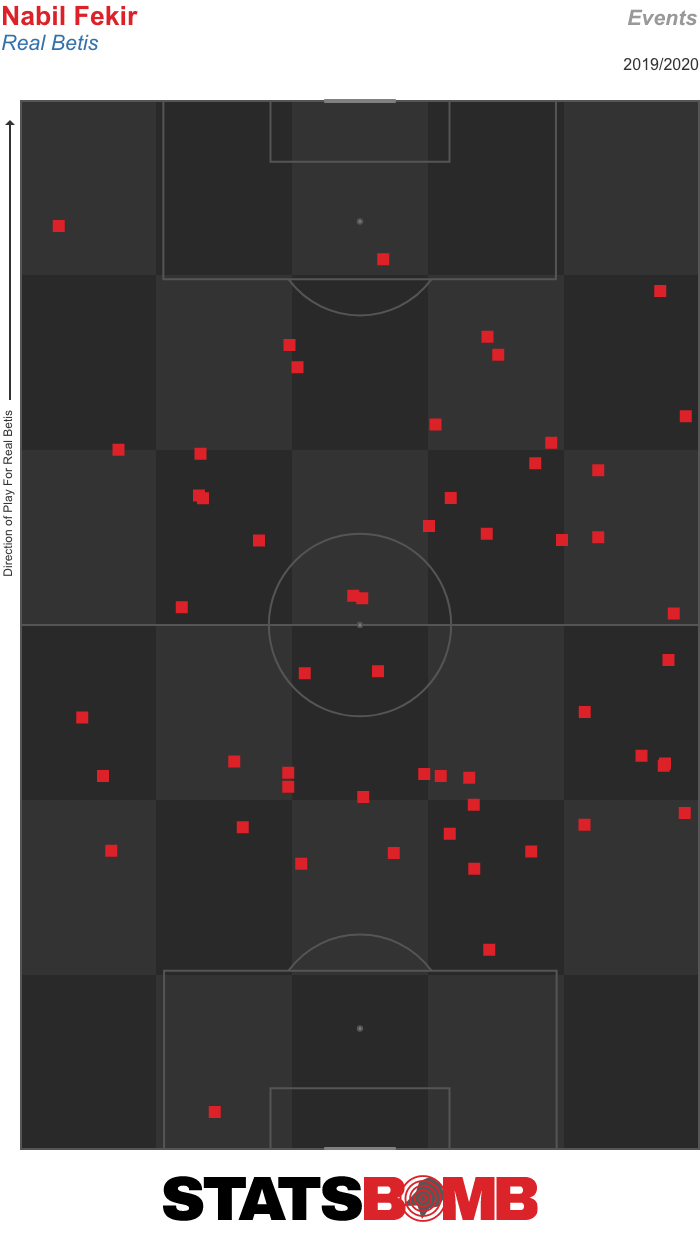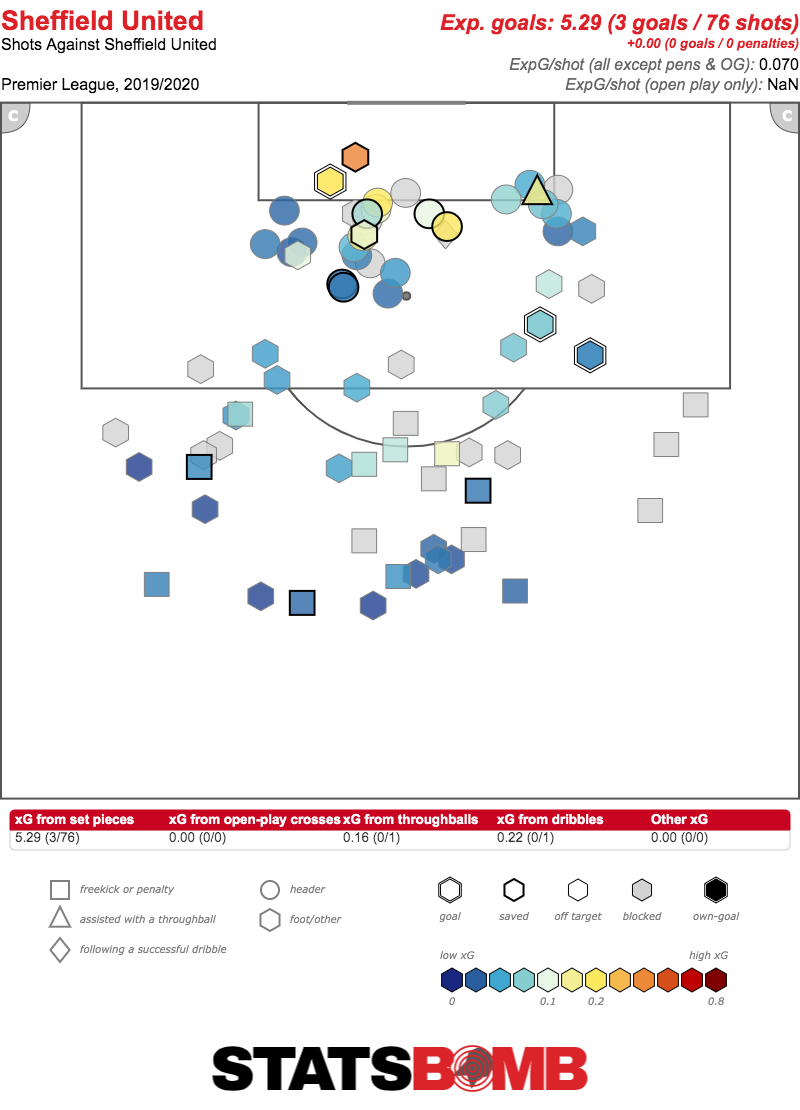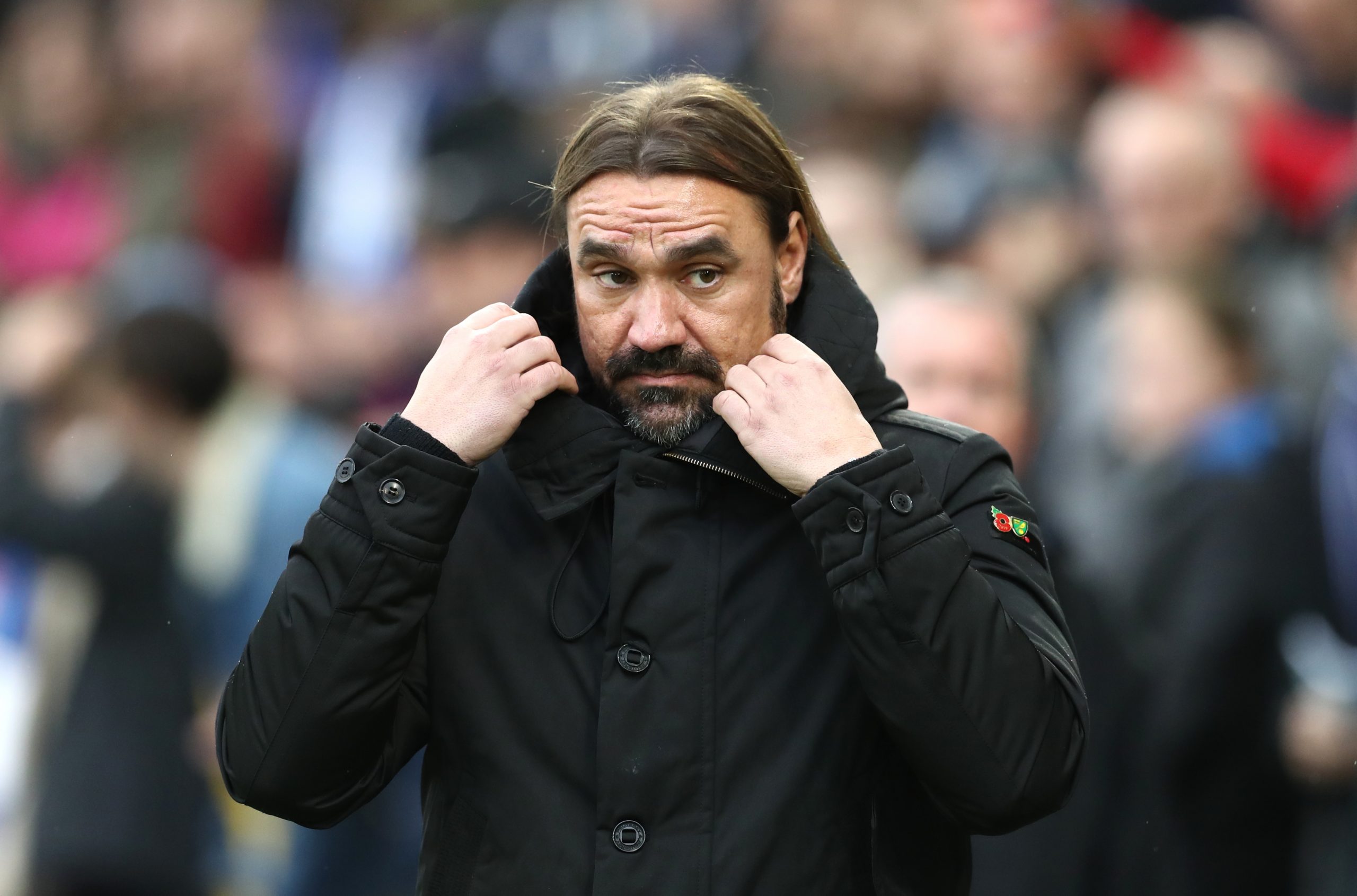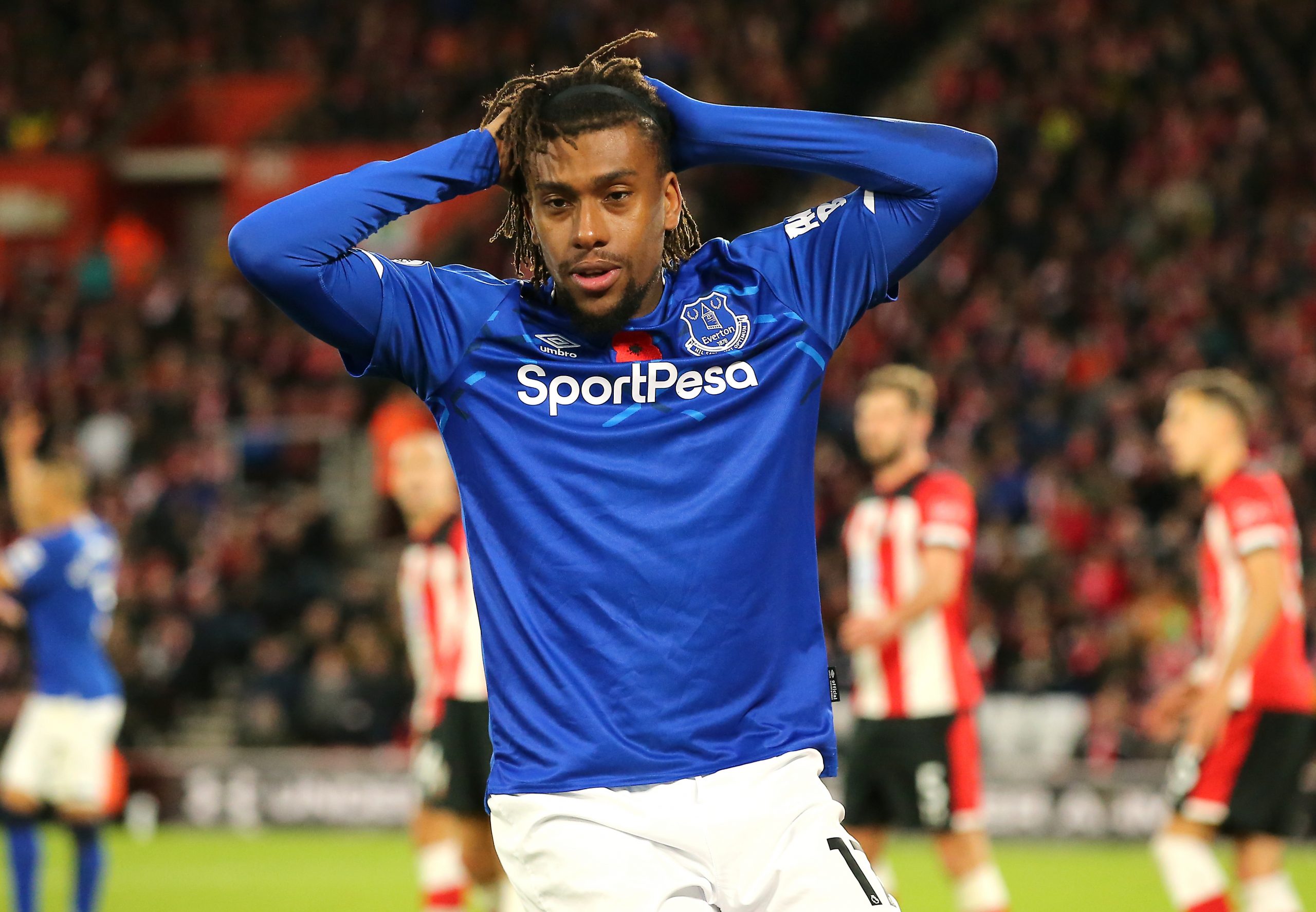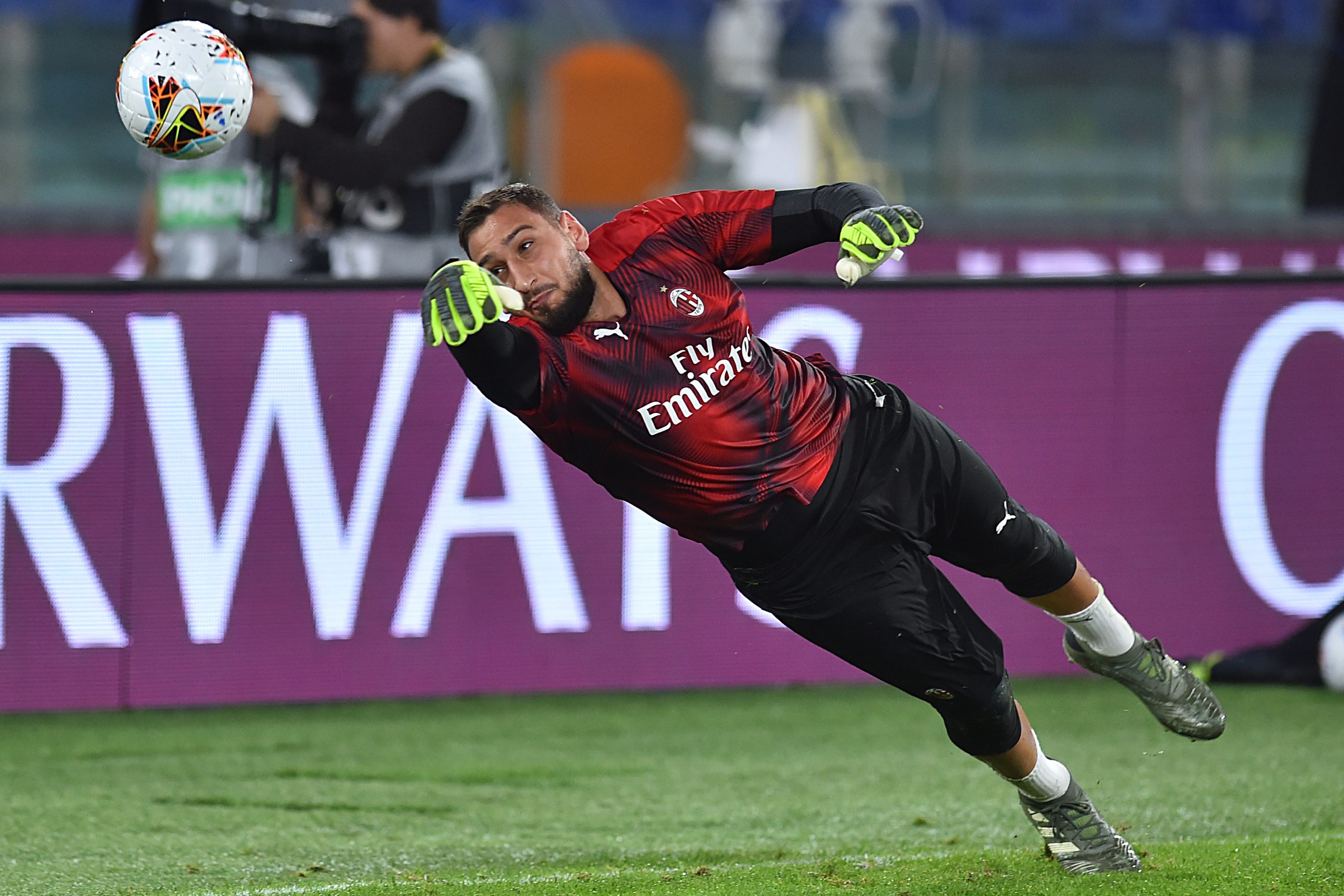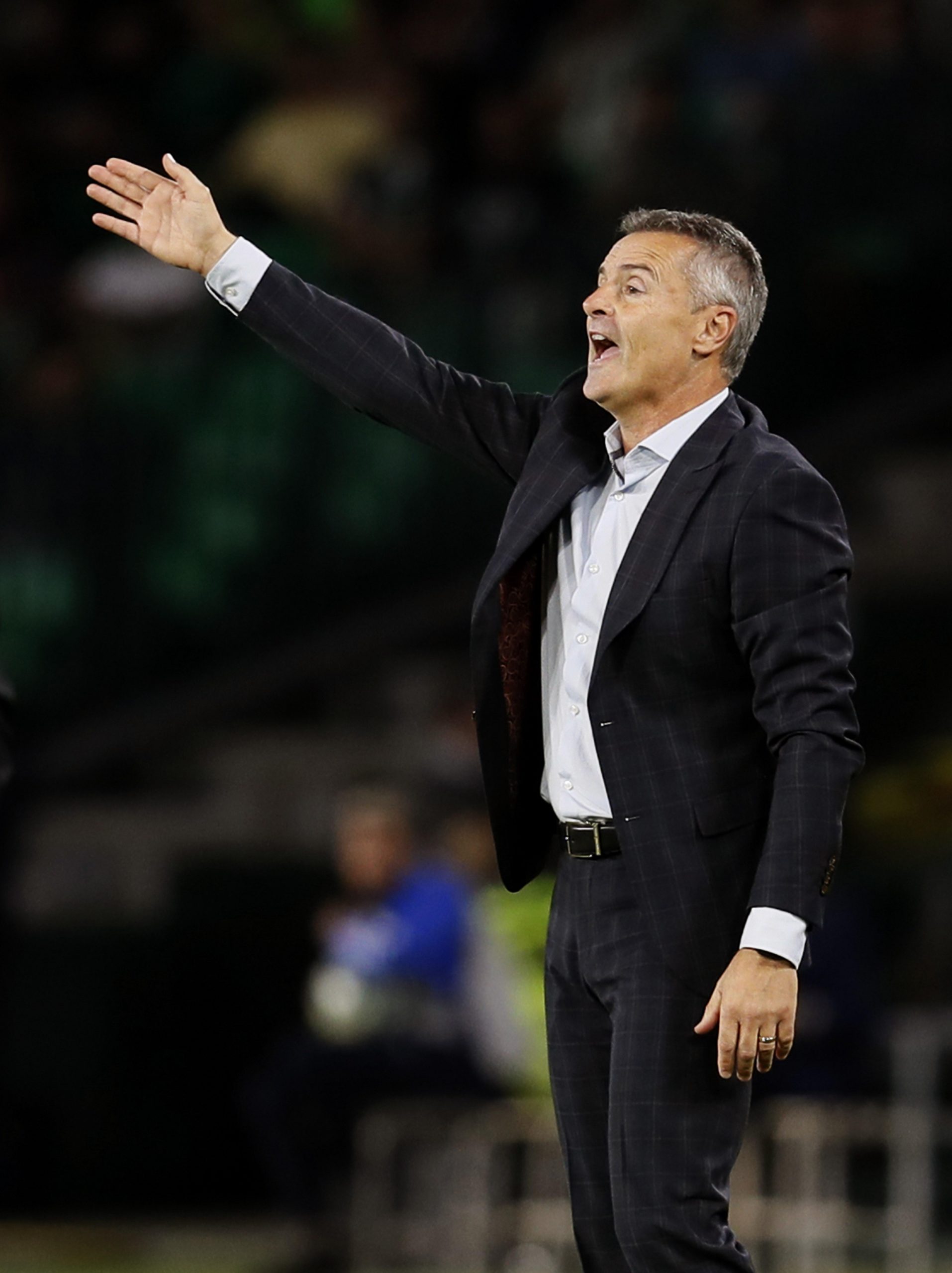“We haven’t covered Sheffield United in a while,” Goodman intoned from atop his editorial cathedra. “Find me an interesting Sheffield player to profile!” So, like one of the precogs in Minority Report, he lowered me into the viscous ooze of data. It was a trying experience. Everyone was . . . well, fine. There was a midfielder who led the team in progressive passing while only being mildly above average. There was a striker doing good work without any finishing luck to show for it. The centre backs were decent in the air. Nobody was bad in a way that could sustain 500 words of comedy or weird enough to justify a closer examination. The collective just worked. If you’re a fan of the Blades and not a mercenary, ink-stained wretch, this is good news. Sheffield United are fifth in the table and have the underlying numbers of a team above the relegation fray. Chris Wilder is doing a great job with a side that is largely the same as last year’s Championship runner-up. How wonderful. Defeated — a state this Gooner knows well — I returned to Goodman and grovelled. You can’t tell the story of Sheffield through the prism of a single player, I argued. You have to account for this entire, strange team. Here goes. The Blades achieved promotion by taking high-quality shots from close range and restricting their opponents to speculative shots. They were slow, but engineered overloads and mismatches in open play (overlapping centre-backs, anyone?) and on set pieces. Something would have to give when transposing much of the same ageing squad to the Premier League, the assumption went, but what? The Premier League version of Sheffield United have retained the focus on shot quality. In fact, only Manchester City’s shots are of a higher average quality. 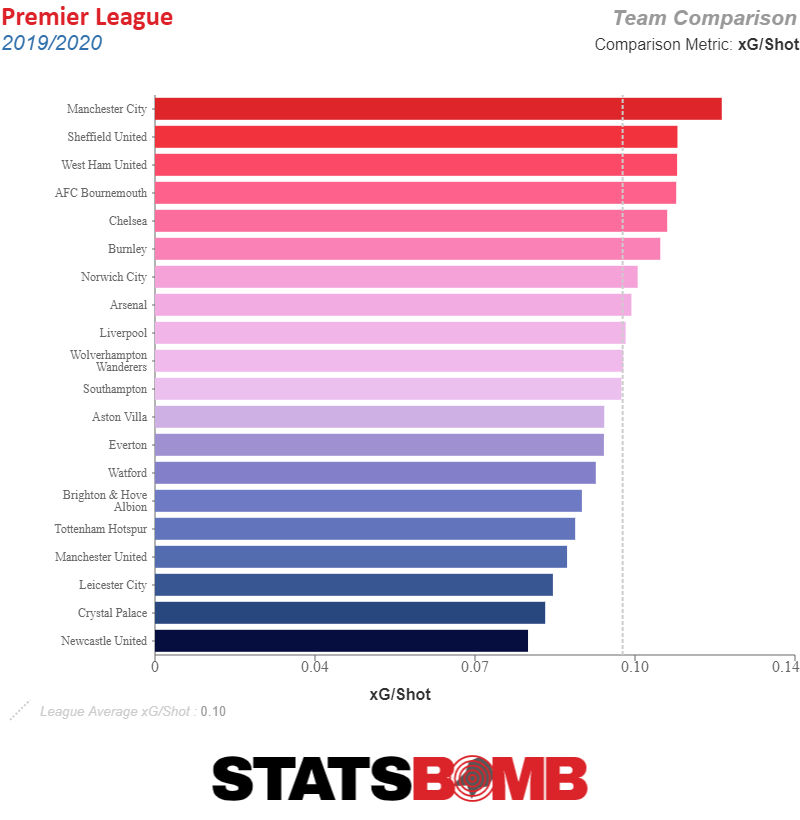 The Blades shoot from closer than league average and take the third-fewest shots from outside the box. While they try shots of a quality that rivals Man City, they’re taking them almost as rarely as Crystal Palace. They’ve gone from taking a middling number of shots in the Championship to the second-fewest in the Premier League.
The Blades shoot from closer than league average and take the third-fewest shots from outside the box. While they try shots of a quality that rivals Man City, they’re taking them almost as rarely as Crystal Palace. They’ve gone from taking a middling number of shots in the Championship to the second-fewest in the Premier League. 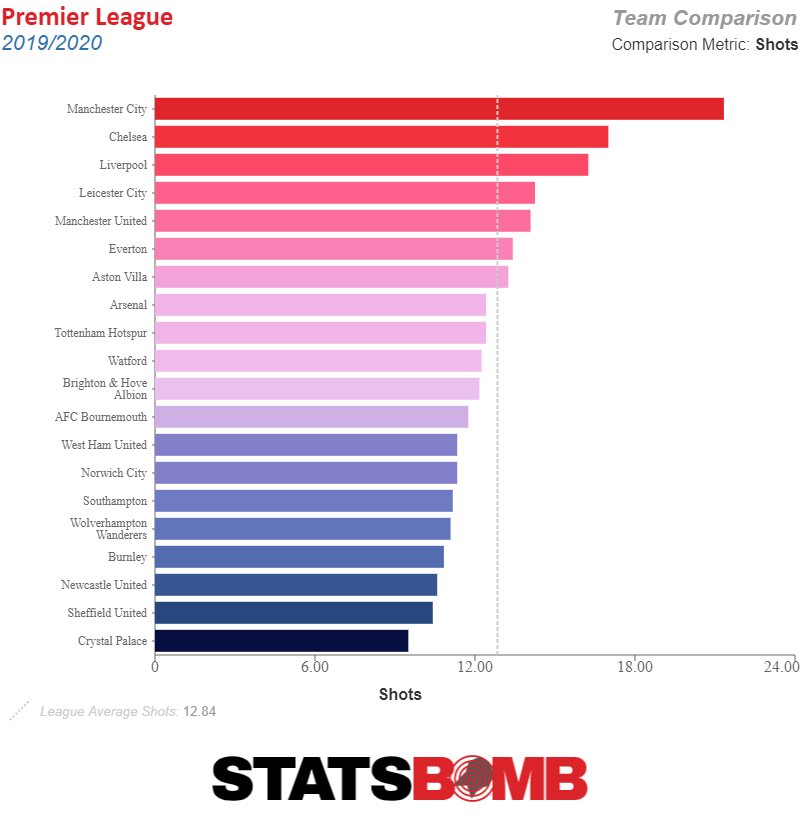 This Polian-esque approach to scoring — take shots; not many; mainly from close-range — has thus far worked out to a serviceable thirteenth-best expected goals total in the league. Sheffield United’s parsimonious approach to shot creation is viable so long as the team finishes those chances at a normal rate. The Blades have largely accomplished that, turning 14.6 expected goals into 13 goals. Striker David McGoldrick, who leads the team in xG per 90 minutes by a healthy margin, has yet to score. (Despite missing three matches, he nearly leads the team in xG.) His rough start to the season has been mitigated by new signing Lys Mousset doubling his 1.49 xG. These may not be elite players, but one can reasonably expect them to fall in line with their underlying numbers. If Sheffield United players ever finish normally, they’ll reveal this to be a classic Chris Wilder team. He is once again sharpening an edge to his side through set play design. The Blades are producing as many set play xG per match as in the Championship, which is good enough for fourth in the Premier League. Thus far, they’ve turned four expected goals off set pieces into two goals. This follows from the Blades’ other issues: You’d expect a team that sets out to cash in on set pieces yet has a misfiring striker to have a noticeable underperformance on set pieces. (Indeed, McGoldrick has generated 1.18 of his 2.87 xGs on set pieces.) Finishing luck notwithstanding, this is still a Chris Wilder attack. While Sheffield United has doubled down on offensive shot quality this season, effectively becoming a more extreme version of Wilder’s Championship side, it has become more typical in defence. Last year, the Blades forced opponents to take the worst and longest shots while conceding the third-fewest shots. This season, the shot they're most likely to concede is from closer range and of a higher quality than league average. They have, however, managed to concede the seventh-fewest shots in the league. Being fine in most defensive metrics averages out the Premier League’s tenth-best defence in terms of xG. The Blades’ are less quirky in defence, but they’re more effective. Yet not as effective as the league-second-best nine goals they’ve conceded suggests. The Blades have wildly overperformed their 15.32 xG conceded to be tied for the best defensive record in the league after 12 matches. Goalkeeper Dean Henderson has conceded 3.75 fewer goals than the average goalkeeper faced with the same set of shots.
This Polian-esque approach to scoring — take shots; not many; mainly from close-range — has thus far worked out to a serviceable thirteenth-best expected goals total in the league. Sheffield United’s parsimonious approach to shot creation is viable so long as the team finishes those chances at a normal rate. The Blades have largely accomplished that, turning 14.6 expected goals into 13 goals. Striker David McGoldrick, who leads the team in xG per 90 minutes by a healthy margin, has yet to score. (Despite missing three matches, he nearly leads the team in xG.) His rough start to the season has been mitigated by new signing Lys Mousset doubling his 1.49 xG. These may not be elite players, but one can reasonably expect them to fall in line with their underlying numbers. If Sheffield United players ever finish normally, they’ll reveal this to be a classic Chris Wilder team. He is once again sharpening an edge to his side through set play design. The Blades are producing as many set play xG per match as in the Championship, which is good enough for fourth in the Premier League. Thus far, they’ve turned four expected goals off set pieces into two goals. This follows from the Blades’ other issues: You’d expect a team that sets out to cash in on set pieces yet has a misfiring striker to have a noticeable underperformance on set pieces. (Indeed, McGoldrick has generated 1.18 of his 2.87 xGs on set pieces.) Finishing luck notwithstanding, this is still a Chris Wilder attack. While Sheffield United has doubled down on offensive shot quality this season, effectively becoming a more extreme version of Wilder’s Championship side, it has become more typical in defence. Last year, the Blades forced opponents to take the worst and longest shots while conceding the third-fewest shots. This season, the shot they're most likely to concede is from closer range and of a higher quality than league average. They have, however, managed to concede the seventh-fewest shots in the league. Being fine in most defensive metrics averages out the Premier League’s tenth-best defence in terms of xG. The Blades’ are less quirky in defence, but they’re more effective. Yet not as effective as the league-second-best nine goals they’ve conceded suggests. The Blades have wildly overperformed their 15.32 xG conceded to be tied for the best defensive record in the league after 12 matches. Goalkeeper Dean Henderson has conceded 3.75 fewer goals than the average goalkeeper faced with the same set of shots. 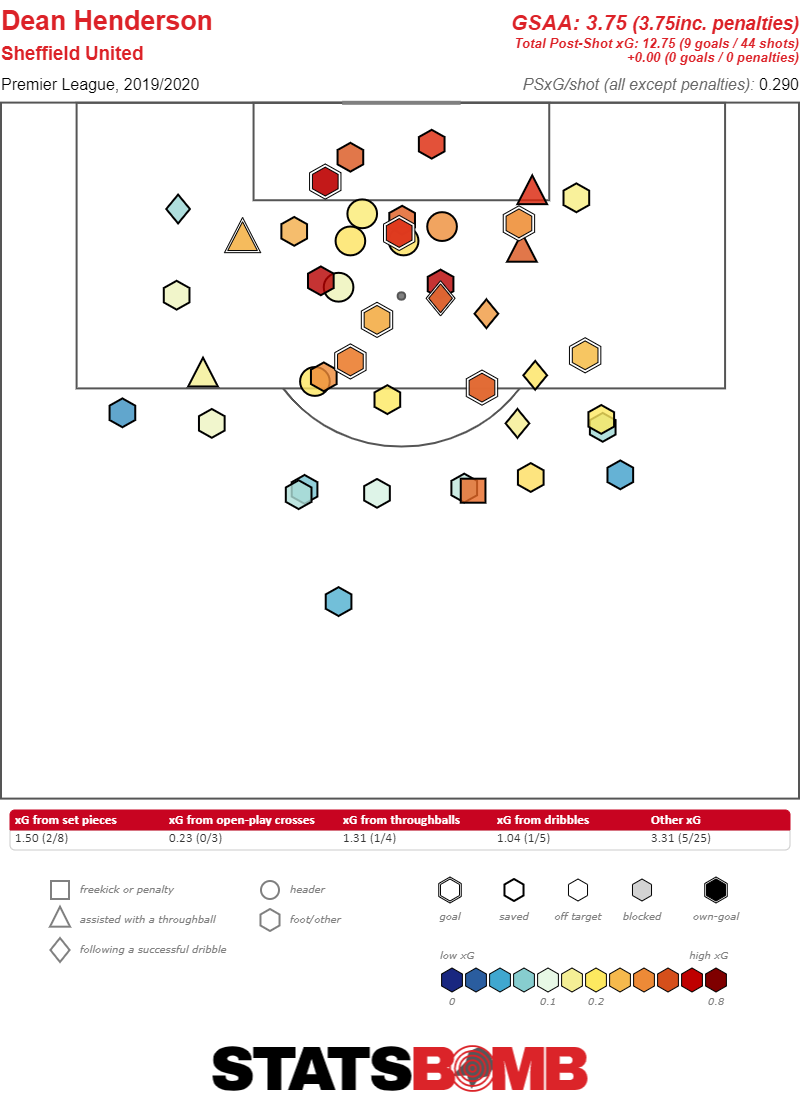 Even if the Manchester United loanee continues to add value, the Blades can’t expect opponents to finish so woefully going forward. Nobody should panic when Sheffield United’s defence comes back down to earth; everything’s going according to plan. At a very high level, Sheffield United has the hallmarks of a resolutely unfashionable Premier League side: an older, unheralded British squad; a manager who has paid his dues in the lower leagues; a solid defence; an attack that scores just enough goals. Is this team a Roy Hodgson fever dream? Is it Sean Dyche’s Burnley? (Wilder’s friendship with Dyche has encouraged the latter conclusion.) While well-intentioned, these comparisons mischaracterize Wilder’s managerial skills. His team may have a decent defence and adequate attack, but it’s doing a lot of interesting attacking work. To use a technical term: Chris Wilder is managing his ass off. Instead of accepting that his team will simply be less good in all aspects, or fully bunkering down, Wilder has recalibrated his shot efficiency machine from the Championship. Much of these changes are happening between the penalty boxes, where the Blades are defending deeper (10th in the league, between Chelsea and Arsenal) and pressing less than their figures in the Championship. Only Newcastle allows its opponents to complete more passes before performing a defensive action. Only Newcastle and Burnley have less of the ball. At the same time, Oliver Norwood, who helped pass Brighton and Fulham to promotion in successive seasons only to drop back down to the Championships both times, is providing serviceable progressive passing in midfield. Overlapping centre back Jack O’Connell is still moving all the way down the left flank to pass in open play. Wilder’s team has less of the ball this season, but they have a clear plan whenever they're in possession.
Even if the Manchester United loanee continues to add value, the Blades can’t expect opponents to finish so woefully going forward. Nobody should panic when Sheffield United’s defence comes back down to earth; everything’s going according to plan. At a very high level, Sheffield United has the hallmarks of a resolutely unfashionable Premier League side: an older, unheralded British squad; a manager who has paid his dues in the lower leagues; a solid defence; an attack that scores just enough goals. Is this team a Roy Hodgson fever dream? Is it Sean Dyche’s Burnley? (Wilder’s friendship with Dyche has encouraged the latter conclusion.) While well-intentioned, these comparisons mischaracterize Wilder’s managerial skills. His team may have a decent defence and adequate attack, but it’s doing a lot of interesting attacking work. To use a technical term: Chris Wilder is managing his ass off. Instead of accepting that his team will simply be less good in all aspects, or fully bunkering down, Wilder has recalibrated his shot efficiency machine from the Championship. Much of these changes are happening between the penalty boxes, where the Blades are defending deeper (10th in the league, between Chelsea and Arsenal) and pressing less than their figures in the Championship. Only Newcastle allows its opponents to complete more passes before performing a defensive action. Only Newcastle and Burnley have less of the ball. At the same time, Oliver Norwood, who helped pass Brighton and Fulham to promotion in successive seasons only to drop back down to the Championships both times, is providing serviceable progressive passing in midfield. Overlapping centre back Jack O’Connell is still moving all the way down the left flank to pass in open play. Wilder’s team has less of the ball this season, but they have a clear plan whenever they're in possession. 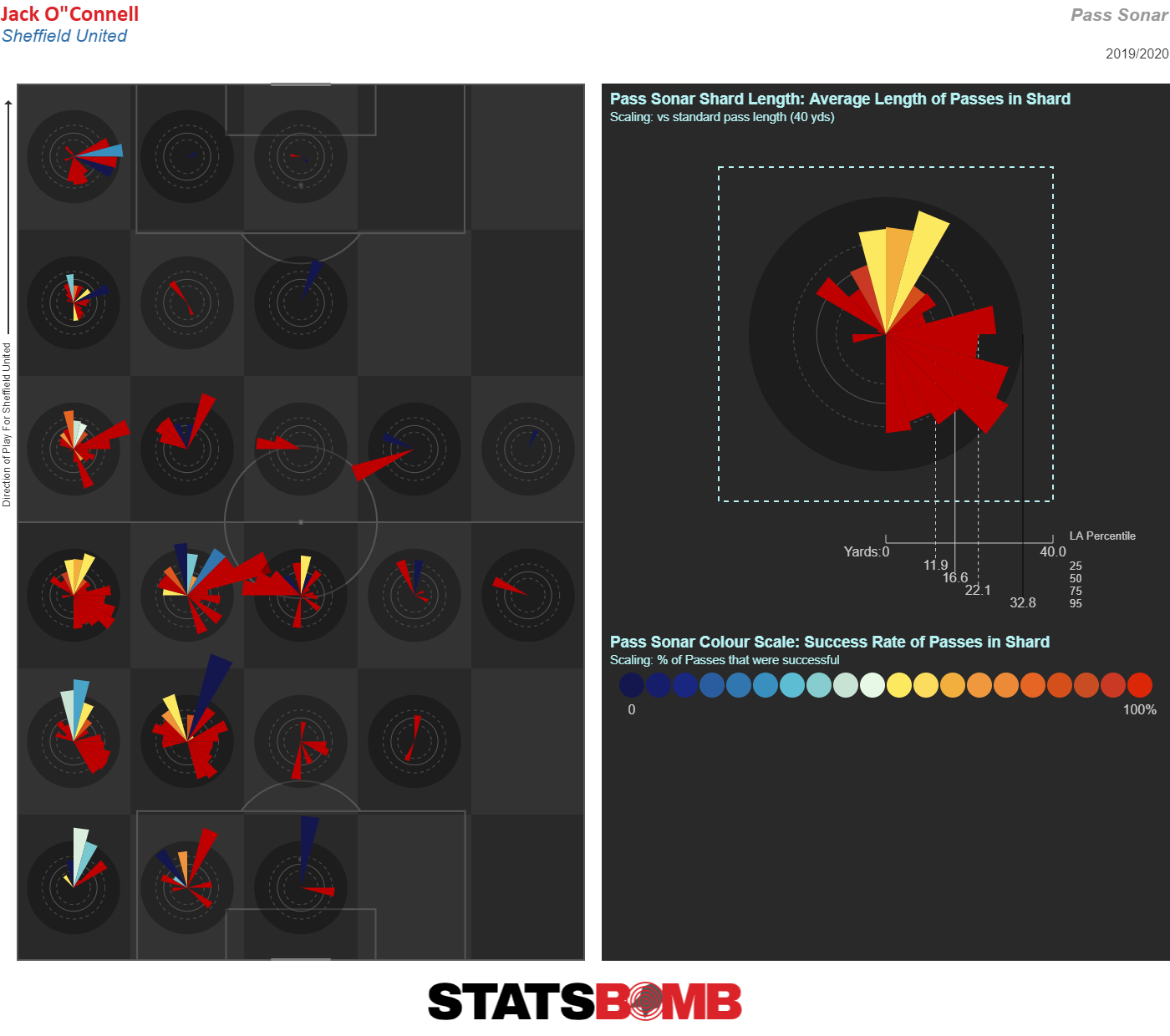 To the extent that the Blades are currently understood as an exciting team, it is because they are fifth in the table. That is not something promoted teams are wont to do. That is also not something a team with the ninth-best xG difference is likely to do going forward. Even when the Blades drop back to mid-table, though, they should remain an exciting team, one with an interesting vision of how to make the leap from the Championship to the Premier League. Chris Wilder’s players may not appear individually exciting, but what he’s doing with them sure is.
To the extent that the Blades are currently understood as an exciting team, it is because they are fifth in the table. That is not something promoted teams are wont to do. That is also not something a team with the ninth-best xG difference is likely to do going forward. Even when the Blades drop back to mid-table, though, they should remain an exciting team, one with an interesting vision of how to make the leap from the Championship to the Premier League. Chris Wilder’s players may not appear individually exciting, but what he’s doing with them sure is.
Month: November 2019
Scouting the next generation of young Eredivisie talent
Ah, the Eredivisie. Also known as the weirdest place in the European leagues to scour for talent.
One the one hand, last year the magical Champions League run of Ajax demonstrated the Dutch tradition of throwing young talent immediately in the mix can produce some of the most scintillating forms of football possible.
On the other hand, the all-attack, no-defense, super young Eredivisie provides us with a long list of (semi-) failed players whose sky-high production in Holland was more down to an utter lack of defensive solidity from Eredivisie clubs than a player's unique talent; at least, not one that would warrant a big transfer sum.
But given this is the international break and not much else is going on, the stoppage of (most) league play is an opportunity to run through the latest batch of young talent that's currently lighting up the Dutch domestic league.
The (next) USMNT 'chosen one' plays in Amsterdam
The Dutch national team is finding its groove under the guidance of Ronald Koeman, but is lacking decent options at right back. Many fans hoped that this 19-year-old fullback would prefer to don his national team caps for the Oranje, but Sergiño Dest, who grew up in the very Dutch suburb of Almere with an American father, chose to represent the United States. This means the U.S. national team can finally switch things up by giving minutes to a legitimately good player in defense.
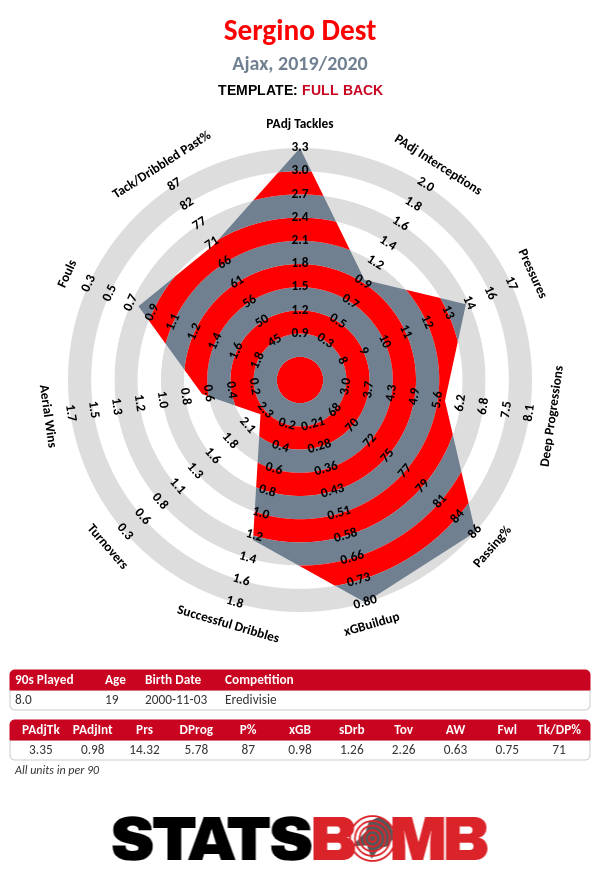
Dest wasn’t a regular at Ajax last season, when the club from Amsterdam surprised friend and foe with their Champions League run, but the teenage fullback has broken through in a major way since the summer. That's a feat in and of itself. It's much harder for a youth system talent to make the leap to the senior squad at Ajax now than it was five years ago, because the average talent level in the senior team has risen dramatically.
When you look at Dest’s game, the first thing that jumps out is his agility. The 19-year-old has lightning-quick footwork, and a lot of skill on the ball. It's too early to judge if Dest is capable of similar offensive output, but his skillset is reminiscent of that of Borussia Dortmund’s Achraf Hakimi. Ajax manager Erik ten Hag uses Dest as a very offensive-minded fullback on the right wing, who can overlap almost constantly, as the right-wingers in the squad, Hakim Ziyech and David Neres, are lefties who excel when they cut to the inside zones. Dest’s attacking role means he does a lot of his defending in the opposing half. As soon as the young USMNT player is forced into more ‘traditional’ defensive work around his own penalty area, he is at his most vulnerable.
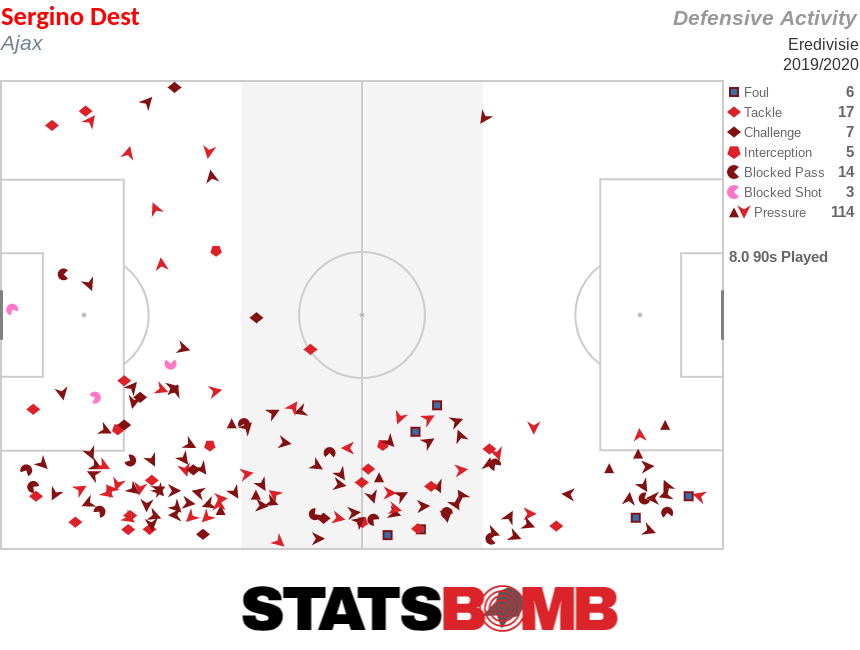
Everyone knows about Ajax's extremely potent attack (43 goals in 13 league games). Yet, beyond the young USMNT fullback, there's another defensive talent worth highlighting, one having a standout season. Twenty-one-year old Lisandro Martínez was originally brought in as a left-footed centreback / leftback, but has rapidly developed into the team’s crucial defensive counterweight in midfield. The feistiness of the small Argentinian has already made him one of the fan favorites in the Johan Cruijff Arena this year.
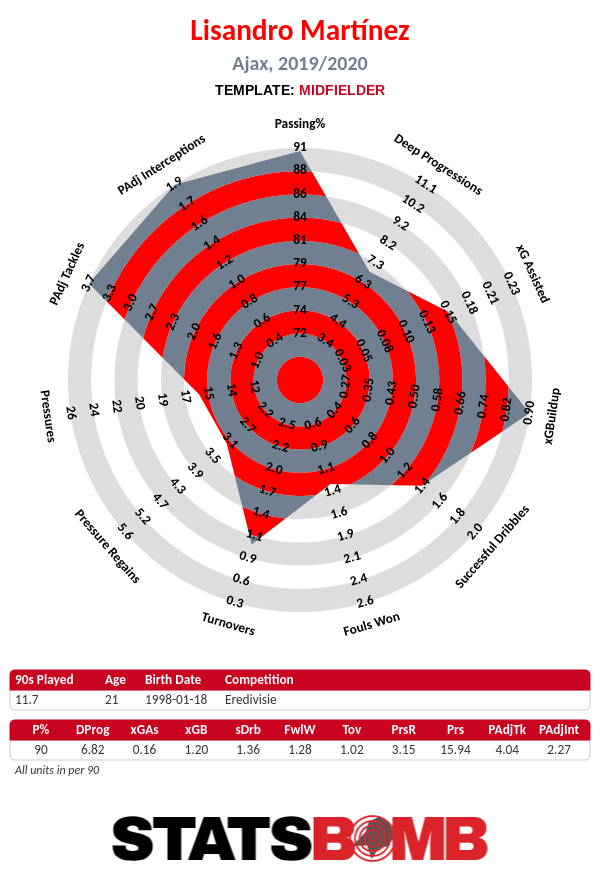
The future of the Dutch offense resides in Eindhoven and Alkmaar
While Ajax and their star players receive most of the international attention, the most exciting individual player development is happening elsewhere in the Eredivisie. PSV striker Donyell Malen (20)—who signed for Eindhoven last year after a few years in the Arsenal academy - hit the ten goal mark on October 6th (!), which is ridiculous early even by Eredivisie standards. But while the hype around Malen, who made his international debut during the last break, has cooled off since he picked up an injury, the other monster striking talent of Dutch football has exploded.
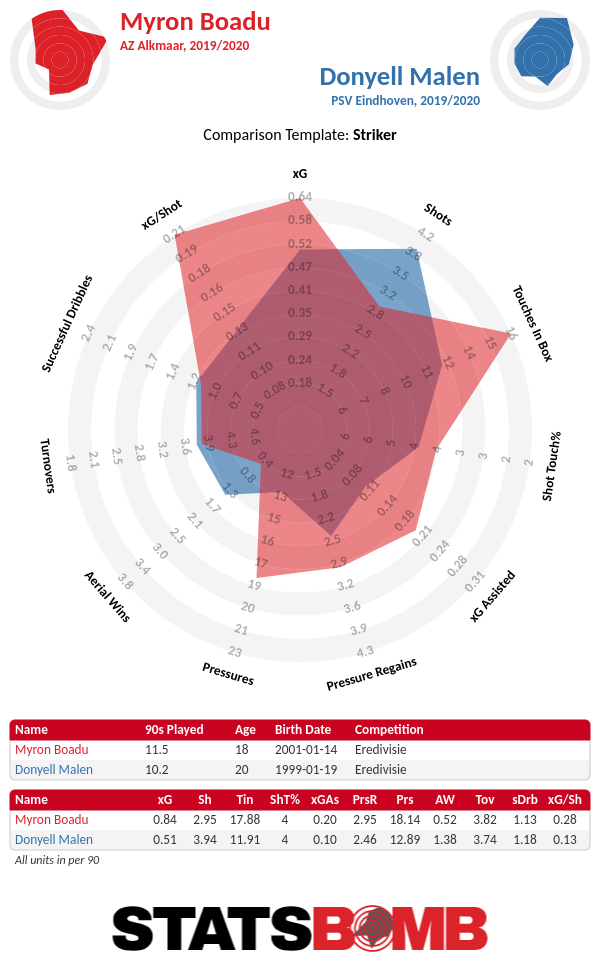
Myron Boadu, who plays up top in AZ Alkmaar's exciting young squad, has already scored 14 goals in all competitions this season. Which is incredible, considering he just returned from his second year-long injury. Oh, and . . . Boadu is still 18 years old. Like Malen, he combines elite acceleration with smart positioning and intuitive off-ball runs, and already seems fully aware of what smart shot selection entails. Which says a lot about him, but also about the analytically-driven playing style that his club AZ currently excels at.
Both Malen and Boadu also profit from playing together with an extremely promising playmaking talent. Boadu has an excellent rapport with twenty-year-old left-footed right-winger Calvin Stengs. Just like his teammate, Stengs also returned from a gruesome injury, and just like Boadu, the young playmaker was recently called up to the Dutch national team for the first time. Stengs, donning a Leroy Sané-like fro’, is not a natural goal-scorer or Speedy Gonzales-type winger, but his ball control, positional feel and in-game vision make him an intriguing prospect.
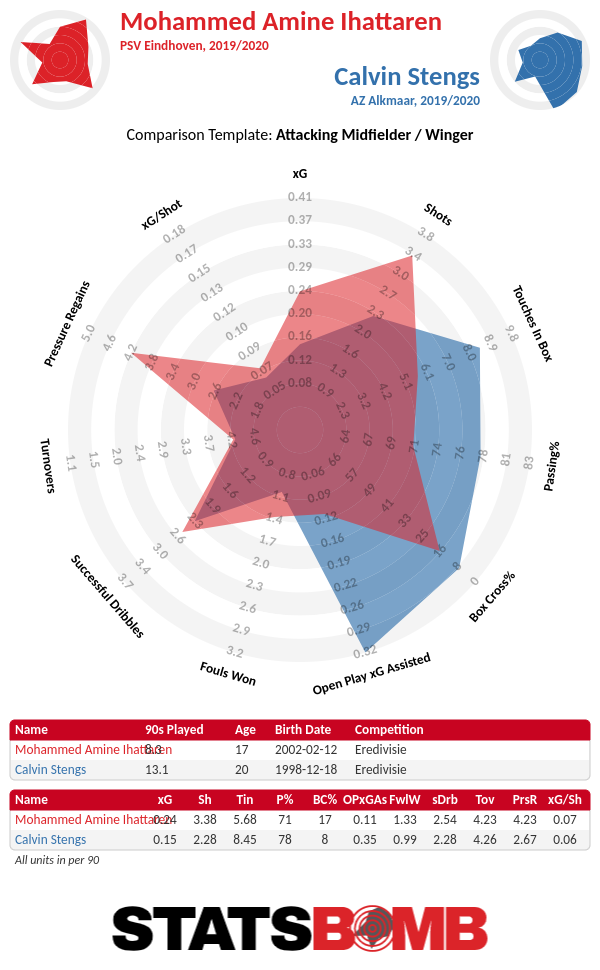
With PSV not winning their last six games—translation: they're in full-on crisis mode—Eredivisie fans are taking the rise of Mohammed ‘Mo’ Ihattaren for granted. Ihattaren is 17 years old, but his recent decision to commit to the Dutch national team instead of representing Morocco was greeted as a big win for the footballing future of Holland.
With reason: in the first league meeting between powerhouses Ajax and PSV, the diminutive teen playmaker was the best individual on the field. His team collapsing result-wise in recent weeks might be a blessing in disguise for Ihattaren. The young leftie was surrounded with almost Pulisic-esque hype—with the first of critical newspaper columns about him ‘losing the ball too much’ already being drafted—but now the focus has shifted more to his team’s situation. Ihattaren is a silky-smooth dribbler who’s good for two to three ‘wait, what?’ touch-passes per game. It will be interesting to see if over the next twenty to thirty games he can to keep transforming his immense on-ball talent into tangible productive output in the final third.
The low-key ‘can’t miss’ prospect
While the skillsets of Malen, Boadu, Stengs and Ihattaren cause mouths to drop open, the most solid young star attracts national attention for his prowess as a penalty-taker. And while, yeah, it is impressive that Teun Koopmeiners has dispatched all ten of his spot-kicks for AZ this season, the 21-year-old midfielder should warrant much more attention due to his impressive development as an all-around player.
The left-footed defensive midfielder is crucial to the build-up phase of AZ’s pretty ball-playing style; his solid distribution as a passer is evident and his ability as a ball-winner in defense is just as crucial. While the four offensive talents mentioned above are going to compete for the two attacking spots in the national team alongside Memphis Depay and Georginio Wijnaldum, Koopmeiners might be able to silently slide in as the number one choice to accompany Frenkie de Jong in holding midfield.
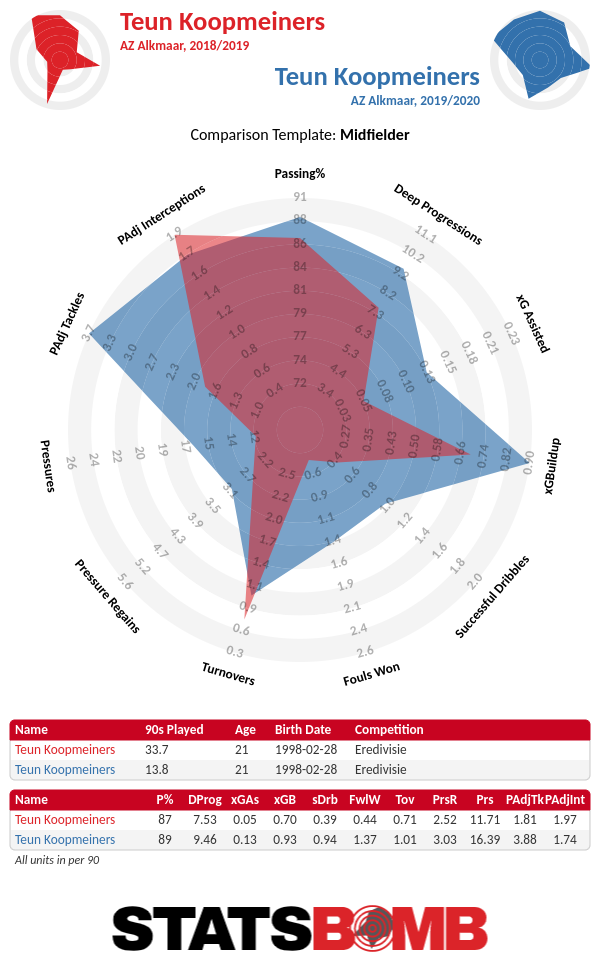
Brentford are getting a fun-fun-fun player
Brentford completed the signing of Halil Dervisoglu before the 2019-20 season began, but the agreement states the Dutch-Turkish striker from Sparta Rotterdam will join the Championship side in January 2020. But even Brentford, who paid three million Euros for the 19-year-old attacker, might be surprised at the season Dervisoglu is having. The young striker clearly excels at two things: dribbling and pressing. It’ll be fun to see if these qualities translate from the mid-tier Eredivisie to the upper-mid-tier of the Championship. Which is, in all honesty, quite the leap in the level of competition.
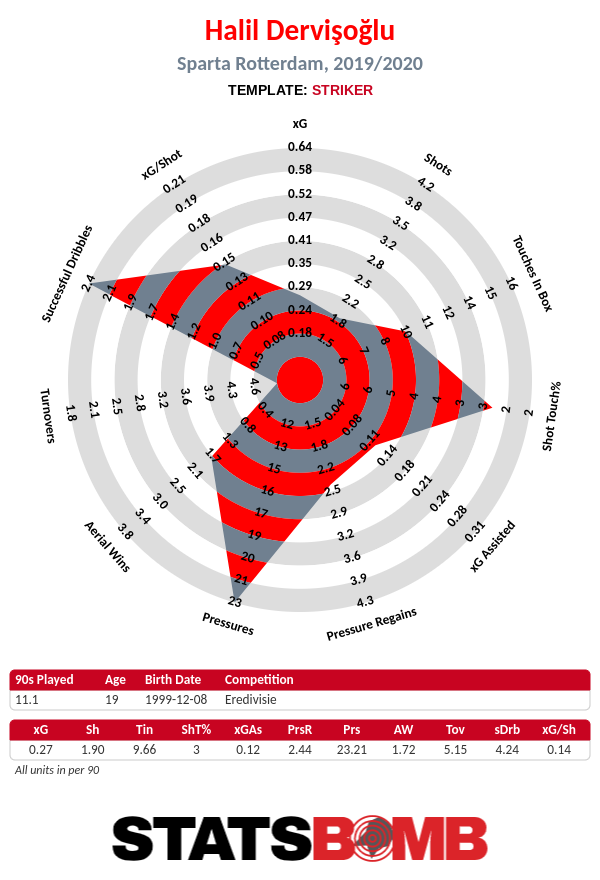
Everton look to dominate at Anfield in a historic WSL Merseyside derby
Last Sunday, Liverpool Men drove Reds wild at Anfield when they beat Manchester City 3-1, extending their lead at the top of the Premier League table. This Sunday will be the first women’s Merseyside derby at Anfield since 1997 but the Red Women will enter it on the opposite end of the table as their male counterparts. After a winless start of the season, they are currently in the relegation zone. Liverpool Women are struggling so much that they have even lost to two second-tier teams in the Continental Cup. Liverpool may be a football-mad city with a strong rivalry, but it has not kept up with the likes of Manchester City or Chelsea in terms of resources and devotion to their women's team. When Liverpool Women visited the United States over the summer for a preseason tour, playing non-league teams at universities like Harvard and Notre Dame, Reds manager Vicky Jepson was impressed with the facilities there. “They really looked after us, she said. “It was a breath of fresh air to get that support. In England we get pushed to one side. We are not a priority. In the US, they were in awe of what we were doing but I guess that's just their opinion of women's soccer.” This is shocking, coming from a club that provides Jürgen Klopp’s team with anything he wants; for instance, a throw-in coach or a head of nutrition who provides the men’s team with locally sourced organic menus like roast venison loin with an herb and nut crust and roasted plums. Jepson had taken the preseason trip to the United States to be a sign that the club was starting to invest more in the women’s side. "This time last year we didn't have the best reputation as a women's set-up," she said. "There was a period where the game probably outgrew our club. We have managed to put ourselves in a very good position." Unfortunately, the results have yet to come. The team have only scored one goal in five games and will be going into this derby as the underdogs. So, why are Liverpool Women so surprisingly bad this season? Well, for one thing, their most prolific striker, Courtney Sweetman-Kirk, has been absolutely stymied on the pitch and has yet to score a single goal. Here’s a comparison of Sweetman-Kirk’s current season vs last season: 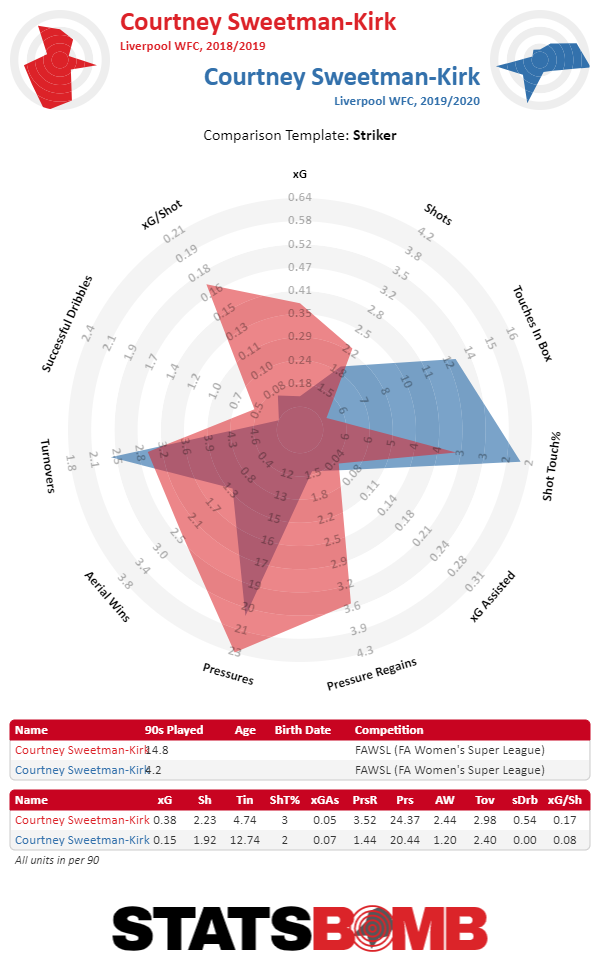 Sweetman-Kirk entered the WSL three seasons ago as a Blue. Before Everton signed her, she had consistently been a top goalscorer in the second tier of the WSL and then went on to become a top goalscorer for the Toffees and earned WSL Player of the Month in November 2017. She then did the unthinkable and signed with Liverpool in 2018, where she went on to score 10 goals. Finishing was her claim to fame something she spoke about focusing on in training: “I work a lot on my finishing and I find that’s the thing that helps the most. You can’t always replicate the same pressure in training as in a match but the more you do it, the more I find it becomes a bit of an automatic thing. I watch analysis on opposition keepers too to see what their habits are, if they normally stay on their line or rush out for example.” She chose her scoring opportunities wisely as is evidenced by this shot map from last season:
Sweetman-Kirk entered the WSL three seasons ago as a Blue. Before Everton signed her, she had consistently been a top goalscorer in the second tier of the WSL and then went on to become a top goalscorer for the Toffees and earned WSL Player of the Month in November 2017. She then did the unthinkable and signed with Liverpool in 2018, where she went on to score 10 goals. Finishing was her claim to fame something she spoke about focusing on in training: “I work a lot on my finishing and I find that’s the thing that helps the most. You can’t always replicate the same pressure in training as in a match but the more you do it, the more I find it becomes a bit of an automatic thing. I watch analysis on opposition keepers too to see what their habits are, if they normally stay on their line or rush out for example.” She chose her scoring opportunities wisely as is evidenced by this shot map from last season: 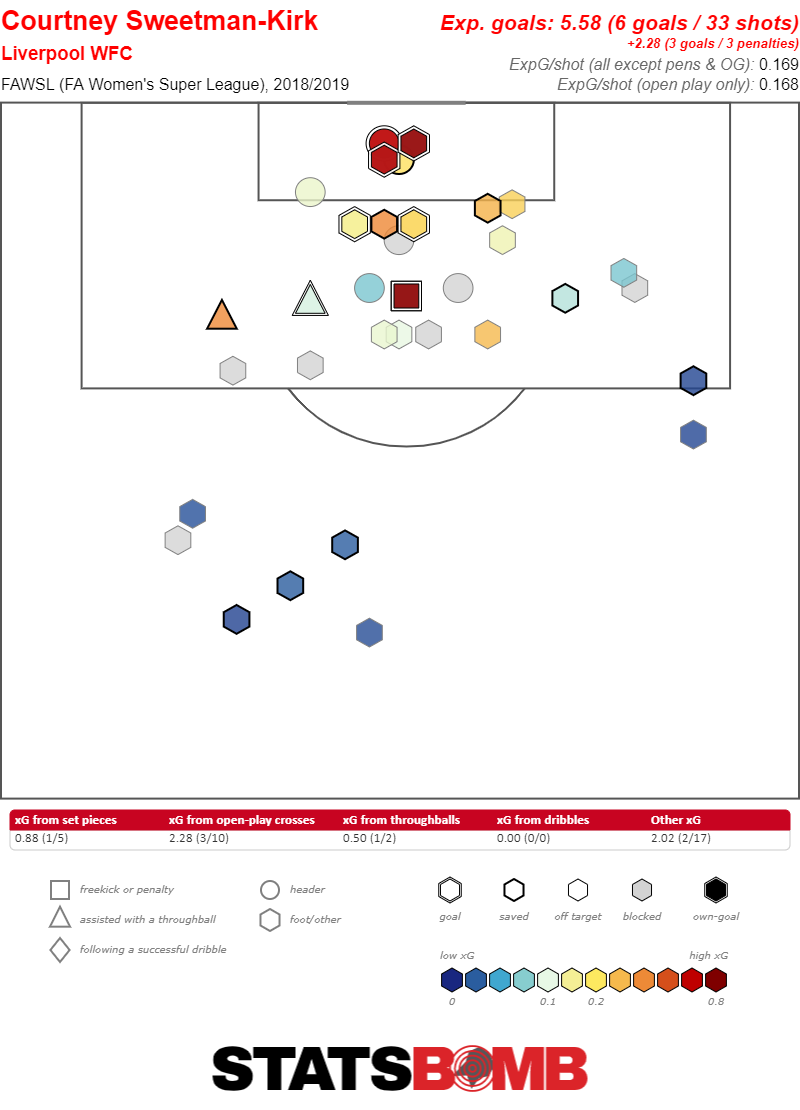 Compare that to this season’s shot map, which suggests that she's either forgotten where the goal is, or is struggling with a lack of service.
Compare that to this season’s shot map, which suggests that she's either forgotten where the goal is, or is struggling with a lack of service. 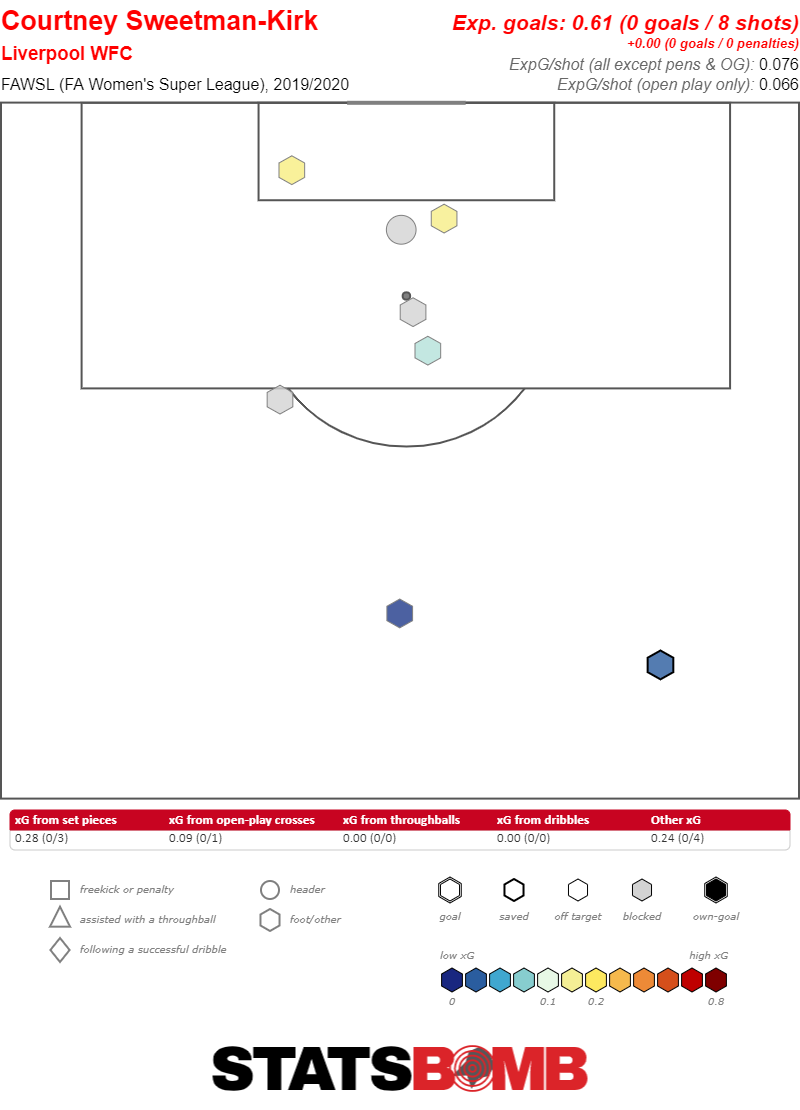 In a rapidly changing league, Liverpool may not have been ambitious enough during the offseason to keep up with clubs like Chelsea who, adding strength to strength, have just announced the signing of one of the best players in the world, Sam Kerr. Everton, on the other hand, have escaped what had seemed like a predetermined fate to come in second to last place every season by exceeding expectations, and are currently in 5th place. So why are Everton so surprisingly good this season? While the Reds’ striker has been coming up empty, the Blues have one of the most in-form attackers in the WSL in Chloe Kelly. After only scoring once in 11 appearances last season before undergoing ankle surgery in February, Kelly has since rehabbed into the Bionic Woman. Playing mainly from the left wing she's scoring worldlies from way downtown and is currently the top goalscorer of the league, with four goals out of five games, beating out even Arsenal wunderkind Vivianne Miedema.
In a rapidly changing league, Liverpool may not have been ambitious enough during the offseason to keep up with clubs like Chelsea who, adding strength to strength, have just announced the signing of one of the best players in the world, Sam Kerr. Everton, on the other hand, have escaped what had seemed like a predetermined fate to come in second to last place every season by exceeding expectations, and are currently in 5th place. So why are Everton so surprisingly good this season? While the Reds’ striker has been coming up empty, the Blues have one of the most in-form attackers in the WSL in Chloe Kelly. After only scoring once in 11 appearances last season before undergoing ankle surgery in February, Kelly has since rehabbed into the Bionic Woman. Playing mainly from the left wing she's scoring worldlies from way downtown and is currently the top goalscorer of the league, with four goals out of five games, beating out even Arsenal wunderkind Vivianne Miedema. 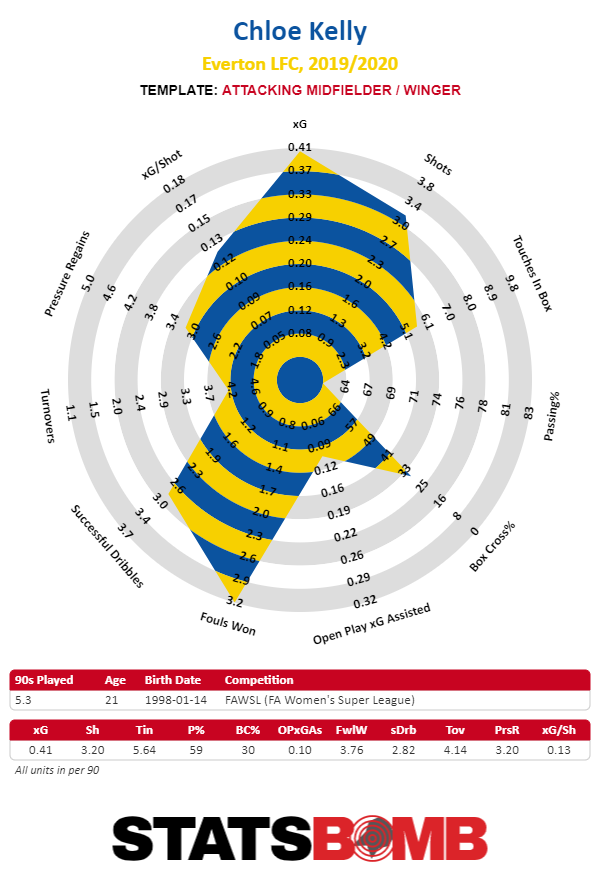 Unfortunately for Everton, however, Kelly will miss the match due to a red card suspension, nullifying one of their most surprisingly successful weapons of the season. Everton also had a much busier offseason than Liverpool, with manager Willie Kirk bringing in six new players, one of whom was a new starting goalkeeper, Finland international Tinja-Riikka Korpela, who has kept three clean sheets and is currently tied with Mary Earps for the second-best goalkeeping record in the WSL.
Unfortunately for Everton, however, Kelly will miss the match due to a red card suspension, nullifying one of their most surprisingly successful weapons of the season. Everton also had a much busier offseason than Liverpool, with manager Willie Kirk bringing in six new players, one of whom was a new starting goalkeeper, Finland international Tinja-Riikka Korpela, who has kept three clean sheets and is currently tied with Mary Earps for the second-best goalkeeping record in the WSL. 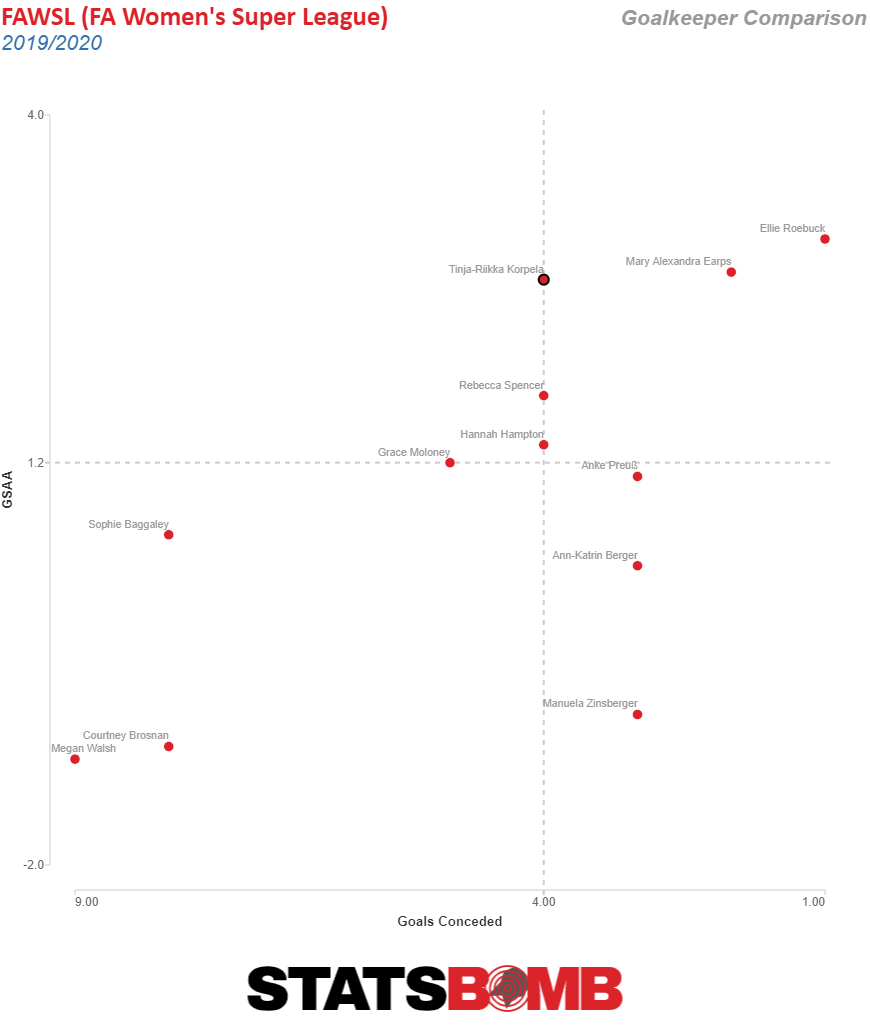 Two other new additions, Lucy Graham and Maeva Clemeron, join Kelly as the top three in combined tackles and interceptions on the team, the backbone of a revamped Everton defense.
Two other new additions, Lucy Graham and Maeva Clemeron, join Kelly as the top three in combined tackles and interceptions on the team, the backbone of a revamped Everton defense. 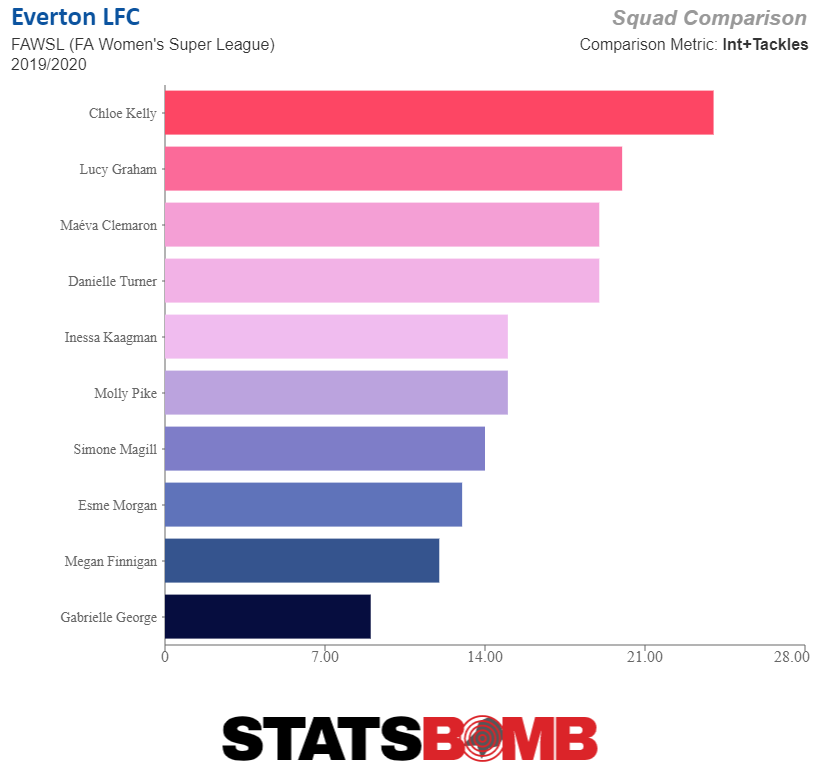 A strong home fan turnout at Anfield, a 54,000 capacity seat stadium, could help bolster the Reds to beat the odds and win on Sunday. Both teams have suffered low attendance in the past, but Everton’s tendency to have the lowest in the WSL continues even after the World Cup bump, with an average home game attendance of just 383, up from last season’s paltry 192. Liverpool is faring better with an average of 1,180 so far this season, which will be shattered on Sunday. But regardless of turnout, the match could provide an extremely rare occurrence: an Everton win over Liverpool at Anfield.
A strong home fan turnout at Anfield, a 54,000 capacity seat stadium, could help bolster the Reds to beat the odds and win on Sunday. Both teams have suffered low attendance in the past, but Everton’s tendency to have the lowest in the WSL continues even after the World Cup bump, with an average home game attendance of just 383, up from last season’s paltry 192. Liverpool is faring better with an average of 1,180 so far this season, which will be shattered on Sunday. But regardless of turnout, the match could provide an extremely rare occurrence: an Everton win over Liverpool at Anfield.
WSL newcomers Manchester United will be a major challenge for league leaders Chelsea
After the dismal showing by The Lionesses in front of a record crowd of 77,768 at Wembley, we can all breathe a big sigh of relief and get back to some Women’s Super League this weekend. There are several tasty looking fixtures too. It’s derby day on Merseyside and also in North London, but not to be outdone, league leaders Chelsea host new kids on the block Manchester United at The Cherry Red Records Stadium (the artistic ground formerly known as Kingsmeadow). According to expected goals, Emma Hayes’ Chelsea thoroughly deserve their top spot. Their non-penalty xG per game stands at 2.08, easily the best in the league, while the against figure is 0.65, narrowly second-best behind Arsenal’s. A goal and a half per game better off than opposition is impressive even if the opening fixtures have been fairly kind. Hayes has settled on a fairly robust 4-4-2-ish set up in recent weeks with either Fran Kirby or Ramona Bachmann playing slightly off the ever-ready Bethany England up front. With Chelsea putting teams on the back foot with their possession through a mix of both buildup from the back and direct balls into the channels, a lot of good attacking work comes from quick turnovers. Erin Cuthbert and Ji So-yun stand out in winning the ball back and Chelsea lead the way in high press shots. Here those two are combining for one of those: 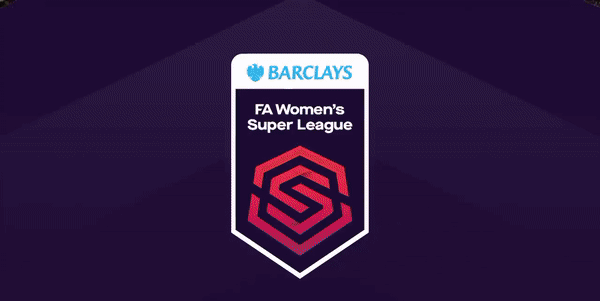 Ji is basically Chelsea’s go-to player. Dominant in so many metrics, the South Korean’s closest player match-ups in the Statsbomb database include Barcelona version Andres Iniesta, Liverpool version Philippe Coutinho and Manchester City’s David Silva. Enough said:
Ji is basically Chelsea’s go-to player. Dominant in so many metrics, the South Korean’s closest player match-ups in the Statsbomb database include Barcelona version Andres Iniesta, Liverpool version Philippe Coutinho and Manchester City’s David Silva. Enough said: 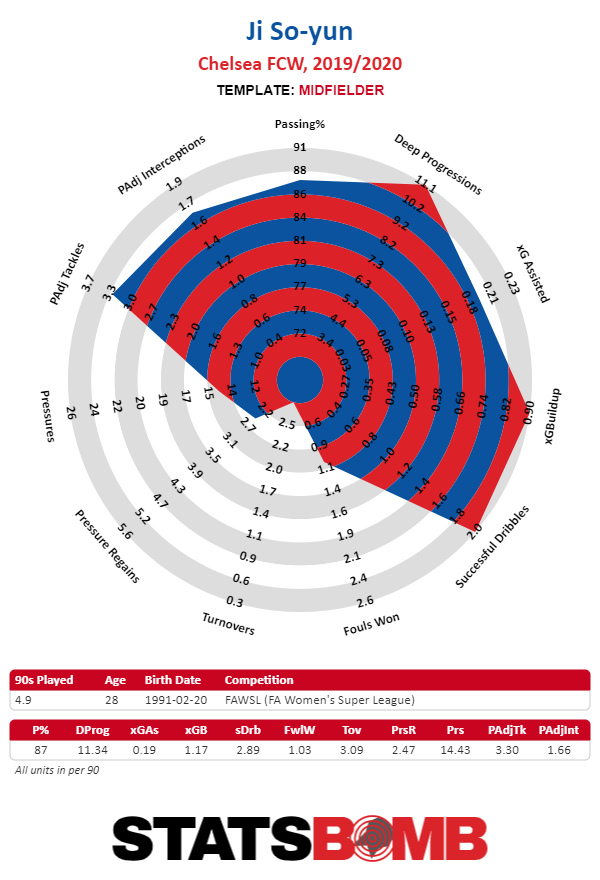 Even against champions Arsenal, playing in a two v three in the middle of the park, she’s bossing it:
Even against champions Arsenal, playing in a two v three in the middle of the park, she’s bossing it: 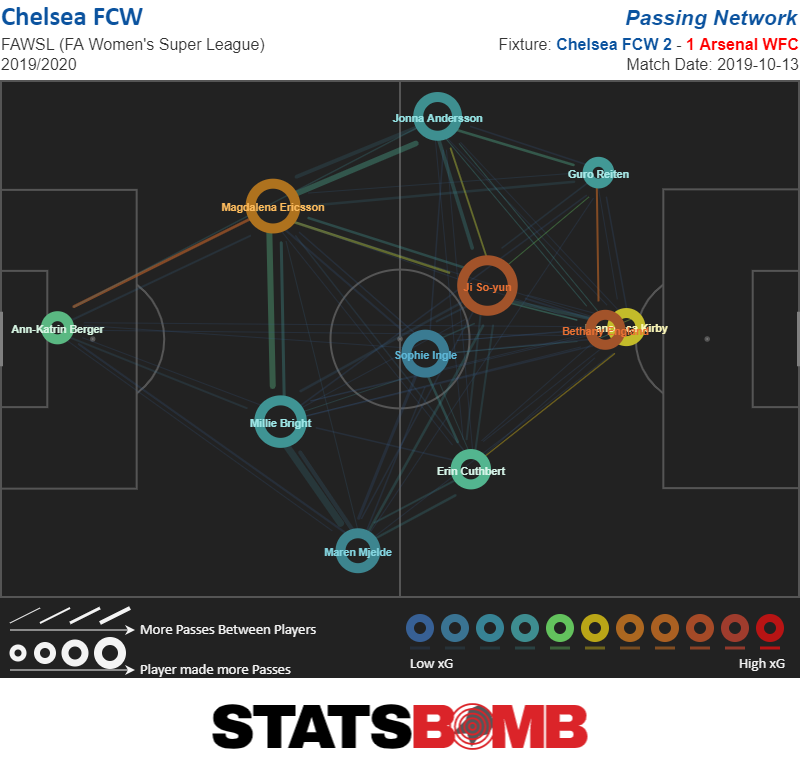 What of Casey Stoney’s Red Devils, then? United currently sit fourth in the non-penalty xG difference table at 0.51 per game and sit fourth in the actual table too, leaders of the ‘best of the rest' group. That’s pretty impressive for a newly promoted side, no? With impossibly horrific opening fixtures against Manchester City and Arsenal, followed by Liverpool, Reading and Spurs, Stoney has tinkered about with the side, setting them up differently almost every time. Consequently, the squad has been well rotated already. Whoever is picked, though, it’s fair to say United like to defend deep and bring the opposition on:
What of Casey Stoney’s Red Devils, then? United currently sit fourth in the non-penalty xG difference table at 0.51 per game and sit fourth in the actual table too, leaders of the ‘best of the rest' group. That’s pretty impressive for a newly promoted side, no? With impossibly horrific opening fixtures against Manchester City and Arsenal, followed by Liverpool, Reading and Spurs, Stoney has tinkered about with the side, setting them up differently almost every time. Consequently, the squad has been well rotated already. Whoever is picked, though, it’s fair to say United like to defend deep and bring the opposition on: 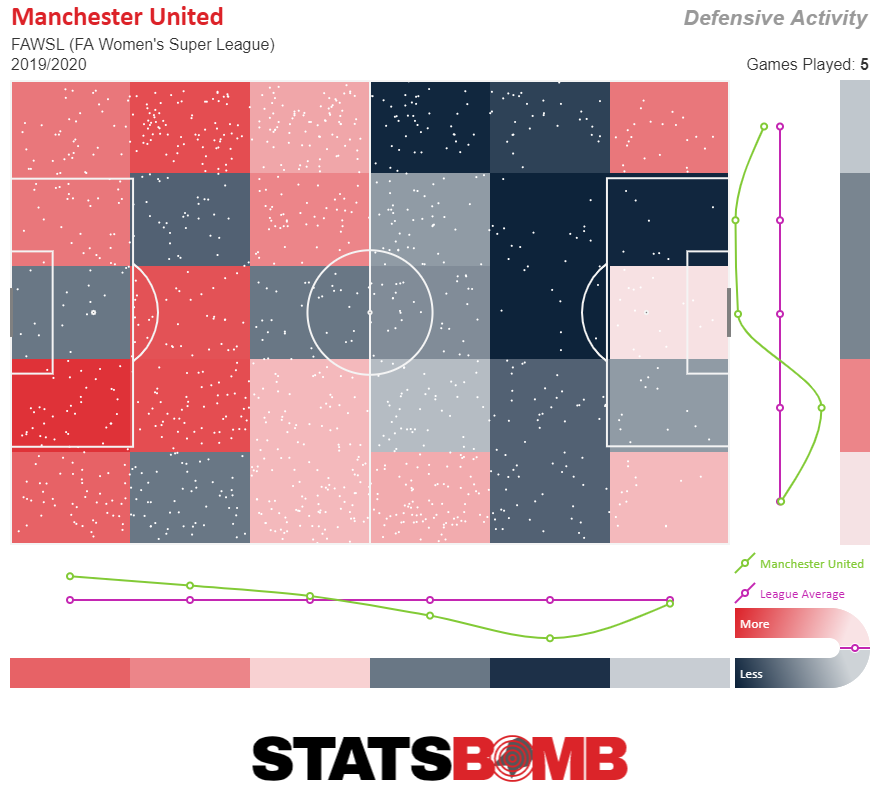 The team wallow at the bottom of the passes per defensive action (PPDA) table, allowing over 12 passes before making a defensive action. Even perennial bus parkers Bristol City get stuck in quicker than that. On average, United make their defensive moves well over 10 yards further back than upcoming opponents Chelsea. In goal, England No.1 Mary Earps is fairly well protected, as United are pretty good at preventing high-value shots, second only to Arsenal. She's having a good season so far, conceding only 2 goals when post-shot xG would expect nearly 5. While for England, Phil Neville has her playing out from the back, at United, she goes longer than any other keeper in the league. This showed while watching the England match live last Saturday. Earps didn’t appear switched on enough to doing things quickly and looked slow and deliberate with the ball at her feet. To be fair, however, Steph Houghton and Leah Williamson were also in a daze too. Left-sided midfielder, Katie Zelem is generally the hub of the team. That considered, you can see from her radar that perhaps United aren’t a run of the mill side:
The team wallow at the bottom of the passes per defensive action (PPDA) table, allowing over 12 passes before making a defensive action. Even perennial bus parkers Bristol City get stuck in quicker than that. On average, United make their defensive moves well over 10 yards further back than upcoming opponents Chelsea. In goal, England No.1 Mary Earps is fairly well protected, as United are pretty good at preventing high-value shots, second only to Arsenal. She's having a good season so far, conceding only 2 goals when post-shot xG would expect nearly 5. While for England, Phil Neville has her playing out from the back, at United, she goes longer than any other keeper in the league. This showed while watching the England match live last Saturday. Earps didn’t appear switched on enough to doing things quickly and looked slow and deliberate with the ball at her feet. To be fair, however, Steph Houghton and Leah Williamson were also in a daze too. Left-sided midfielder, Katie Zelem is generally the hub of the team. That considered, you can see from her radar that perhaps United aren’t a run of the mill side: 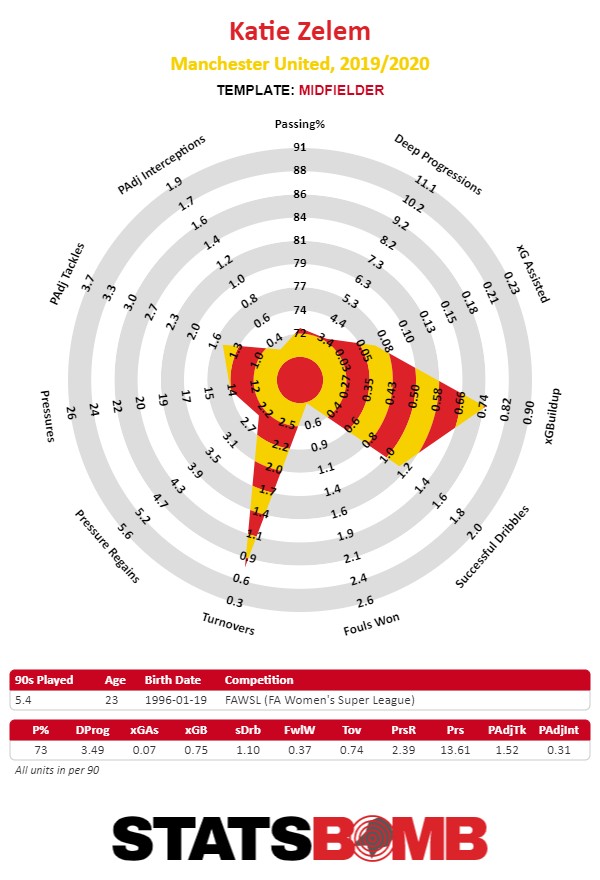 The pass sonar for Zelem also reveals how United might want to play Chelsea. Zelem’s pass completion is perhaps represented by how often the vertical ball is chosen over merely recycling possession.
The pass sonar for Zelem also reveals how United might want to play Chelsea. Zelem’s pass completion is perhaps represented by how often the vertical ball is chosen over merely recycling possession. 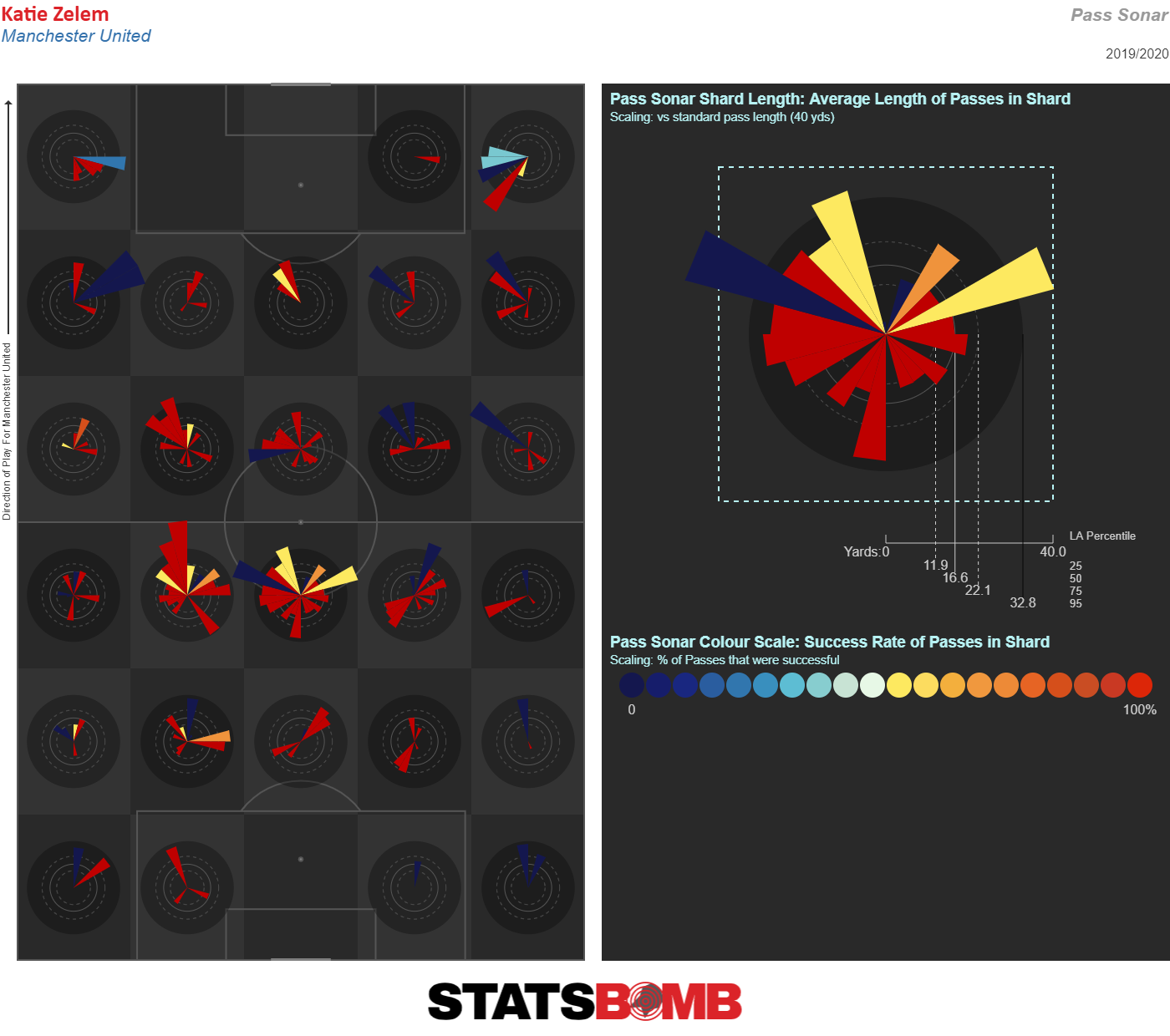 Looking back at the defensive viz for United we can see defensive pressure being applied into the far corners. In the opener against City, United repeatedly sent the ball down the sides and chased the superior footballing team backwards. United hunted in packs of 3s and 4s, bombing on to put City under pressure. This accomplished two things: it made them a threat on the counter, and forced City as far away from goal as possible, having to build moves from their own box while having opposition players cutting off passing lanes. Ultimately it didn’t work, but United did create good chances and were really unlucky not to score. It is almost written in stone that Chelsea will dominate the ball in this fixture, and it will be a fascinating cat and mouse game if United can prevent Chelsea from scoring early on. That's a big if, however. United are a physical team but so are Chelsea. United look like they can run all day at times, but if there’s one side that will stand up and fight it’s Chelsea. I wouldn’t be surprised if Chelsea make United pay at corners. I’m not convinced by Earps’ ability to relieve the pressure there. Chelsea have good routines and good aerial ability while United have the worst numbers in the league when it comes to conceding chances at corners. United do have a wildcard in youngster Lauren James. I first saw James properly last season running rings around older players and generally making things look too easy. Therein also lies James’ problem. All too often it seems so easy for her that she can’t be bothered. It would be brilliant if she turned up and shone in a big game like this. As it is, I’m not even sure she’ll make the starting line-up. Which is a shame because she can do this:
Looking back at the defensive viz for United we can see defensive pressure being applied into the far corners. In the opener against City, United repeatedly sent the ball down the sides and chased the superior footballing team backwards. United hunted in packs of 3s and 4s, bombing on to put City under pressure. This accomplished two things: it made them a threat on the counter, and forced City as far away from goal as possible, having to build moves from their own box while having opposition players cutting off passing lanes. Ultimately it didn’t work, but United did create good chances and were really unlucky not to score. It is almost written in stone that Chelsea will dominate the ball in this fixture, and it will be a fascinating cat and mouse game if United can prevent Chelsea from scoring early on. That's a big if, however. United are a physical team but so are Chelsea. United look like they can run all day at times, but if there’s one side that will stand up and fight it’s Chelsea. I wouldn’t be surprised if Chelsea make United pay at corners. I’m not convinced by Earps’ ability to relieve the pressure there. Chelsea have good routines and good aerial ability while United have the worst numbers in the league when it comes to conceding chances at corners. United do have a wildcard in youngster Lauren James. I first saw James properly last season running rings around older players and generally making things look too easy. Therein also lies James’ problem. All too often it seems so easy for her that she can’t be bothered. It would be brilliant if she turned up and shone in a big game like this. As it is, I’m not even sure she’ll make the starting line-up. Which is a shame because she can do this: 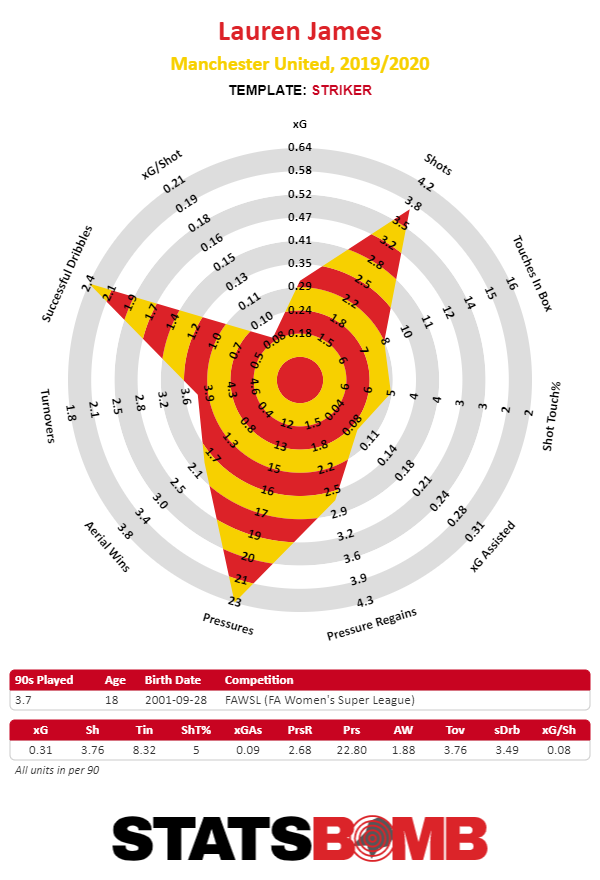
Who are the potential breakout stars playing in the Championship this season?
In the summer of 2019 Neal Maupay, Adam Webster and Daniel James transfered from Championship clubs to the Premier League. In the summer of 2018, it was David Brooks and James Maddison who trod that path. There are many reasons why the Championship is regularly termed as a “Premier League 2”, but perhaps the biggest is that it serves as a finishing school for young players before they make the step up to the big time. And that’s just the permanent transfers. There are also the rough diamonds not yet considered ready for first team action at their parent clubs who get loaned out to this level, hoping that the competitive balance and regular football will sharpen up their talents for the top tier. It’s a strategy that paid off particularly handsomely for Chelsea with Tammy Abraham, Mason Mount, Fikayo Tomori and Reece James all returning from starring loan spells in England’s second tier last season to make positive impacts on the Chelsea first team. There are plenty of candidates making strong individual cases this time out to follow that well worn path. Let’s assess some of them, finishing with those staking a claim for a permanent move, but starting with the loan stars.
It’s a temporary move for a reason
Chelsea could quite easily see another couple of young, English loanees featuring in their first team squad next season if Conor Gallagher and Izzy Brown keep their form up. Gallagher’s shown a promising all round game in central midfield, reliably putting in a shift out of possession and also possessing the quality to help newly promoted Charlton transition from defence to attack. It’s his knack of arriving late in the box and finding space in dangerous areas – not unlike a certain Frank Lampard used to - that has really caught the eye so far though, already notching 5 goals from central midfield. Gallagher has the highest expected goals total of all centre midfielders in the Championship this season and it’s not difficult to see why from his shot map and the positions he’s getting into. 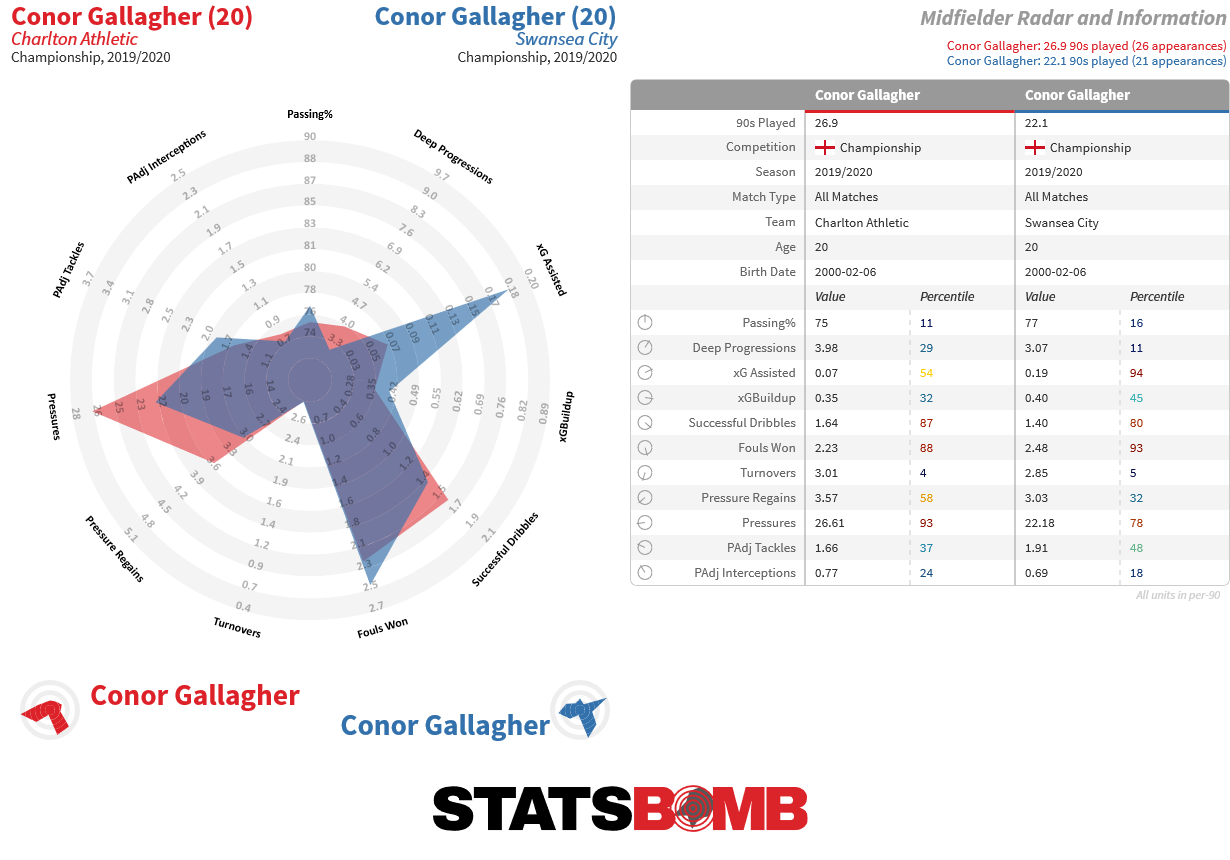 Brown has also made a positive impression in his appearances at also-newly-promoted Luton, but as opposed to Gallagher it’s in the chance creation phase where Brown has stood out. With five assists in 774 minutes, Brown’s currently assisting a goal every other game, and the underlying numbers are robust enough that that rate could feasibly continue. He’s making more key passes (passes that create shots) per 90 minutes than any other player in the league - with and without set pieces included - and the quality of those chances are sufficiently high as well: Brown also tops the list for expected goals assisted per 90 minutes. Brighton will be equally pleased with centre half prodigy Ben White. This is White’s third loan, with the young defender progressing up the pyramid each time. Starting with an impressive full season in League Two at Newport County in 2017-18, he then had a half-season at Peterborough the following year, before now embarking on a full season in a Leeds side challenging at the top of the Championship under the tutelage of one of the most highly respected coaches in the game. It’s fair to say his current career trajectory so far has been a steady upward curve.
Brown has also made a positive impression in his appearances at also-newly-promoted Luton, but as opposed to Gallagher it’s in the chance creation phase where Brown has stood out. With five assists in 774 minutes, Brown’s currently assisting a goal every other game, and the underlying numbers are robust enough that that rate could feasibly continue. He’s making more key passes (passes that create shots) per 90 minutes than any other player in the league - with and without set pieces included - and the quality of those chances are sufficiently high as well: Brown also tops the list for expected goals assisted per 90 minutes. Brighton will be equally pleased with centre half prodigy Ben White. This is White’s third loan, with the young defender progressing up the pyramid each time. Starting with an impressive full season in League Two at Newport County in 2017-18, he then had a half-season at Peterborough the following year, before now embarking on a full season in a Leeds side challenging at the top of the Championship under the tutelage of one of the most highly respected coaches in the game. It’s fair to say his current career trajectory so far has been a steady upward curve. 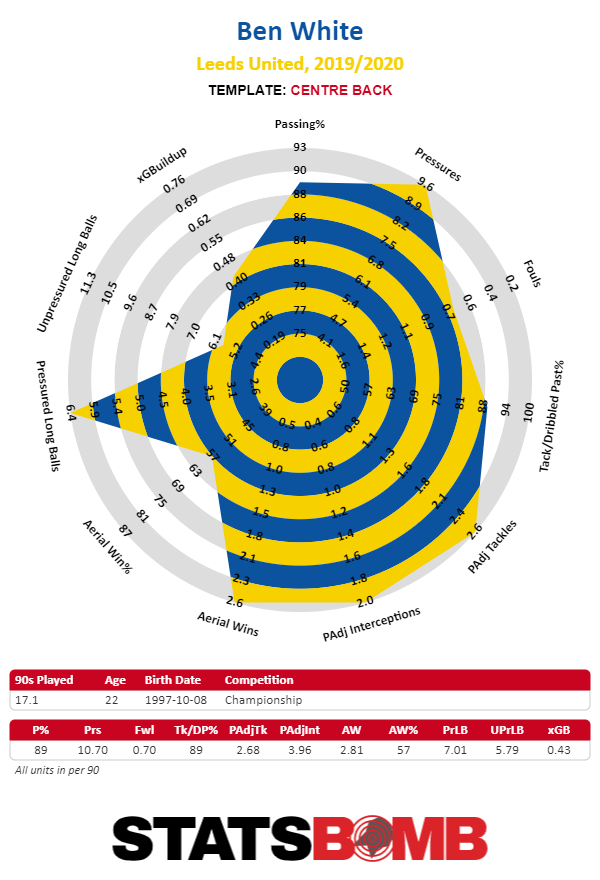 Part of the tightest defence in the second tier, White has been earning rave reviews for his performances at the heart of the Leeds back line, adapting quickly to the demands that have been placed on him by Marcelo Bielsa’s system. Tasked with playing in a high defensive line, White has excelled in the front foot defending style, making more interceptions than any other Championship centre back by some distance. As well as being cool and composed in one on one duels, the Brighton loanee also has a trait for driving forward with the ball to set Leeds attacks on their way. For a first spell at this level, it’s been an impressive start. Also making a strong impression in his first season at this level is Grady Diangana. Though he already enjoyed a breakthrough season at West Ham in the previous campaign, making six starts and seventeen Premier League appearances overall for the Hammers in 2018-19, this is Diangana’s first loan spell away from East London and at this rate it’s not looking likely he’ll need another one.
Part of the tightest defence in the second tier, White has been earning rave reviews for his performances at the heart of the Leeds back line, adapting quickly to the demands that have been placed on him by Marcelo Bielsa’s system. Tasked with playing in a high defensive line, White has excelled in the front foot defending style, making more interceptions than any other Championship centre back by some distance. As well as being cool and composed in one on one duels, the Brighton loanee also has a trait for driving forward with the ball to set Leeds attacks on their way. For a first spell at this level, it’s been an impressive start. Also making a strong impression in his first season at this level is Grady Diangana. Though he already enjoyed a breakthrough season at West Ham in the previous campaign, making six starts and seventeen Premier League appearances overall for the Hammers in 2018-19, this is Diangana’s first loan spell away from East London and at this rate it’s not looking likely he’ll need another one. 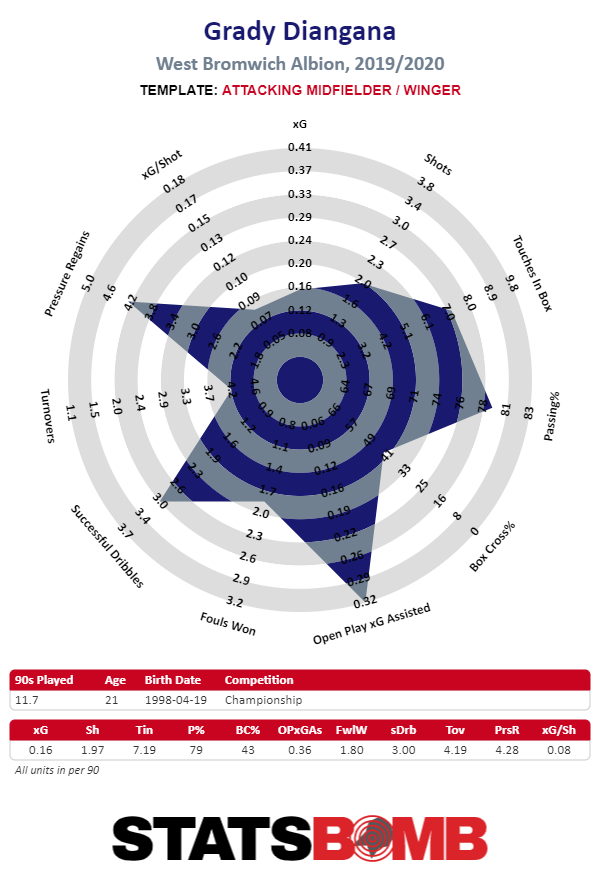 The 21 year old has dazzled on the left wing for West Brom, displaying flair and trickery but also real intelligence and sharp decision making in the final third, laying on countless chances for his West Brom team mates. Diangana is some way in front of the rest of the league for xG assisted from open play but, curiously, he’s a bit further down the list when looking at the volume of key passes. Look at the map of chances he has laid on this season though and you can figure out why.
The 21 year old has dazzled on the left wing for West Brom, displaying flair and trickery but also real intelligence and sharp decision making in the final third, laying on countless chances for his West Brom team mates. Diangana is some way in front of the rest of the league for xG assisted from open play but, curiously, he’s a bit further down the list when looking at the volume of key passes. Look at the map of chances he has laid on this season though and you can figure out why. 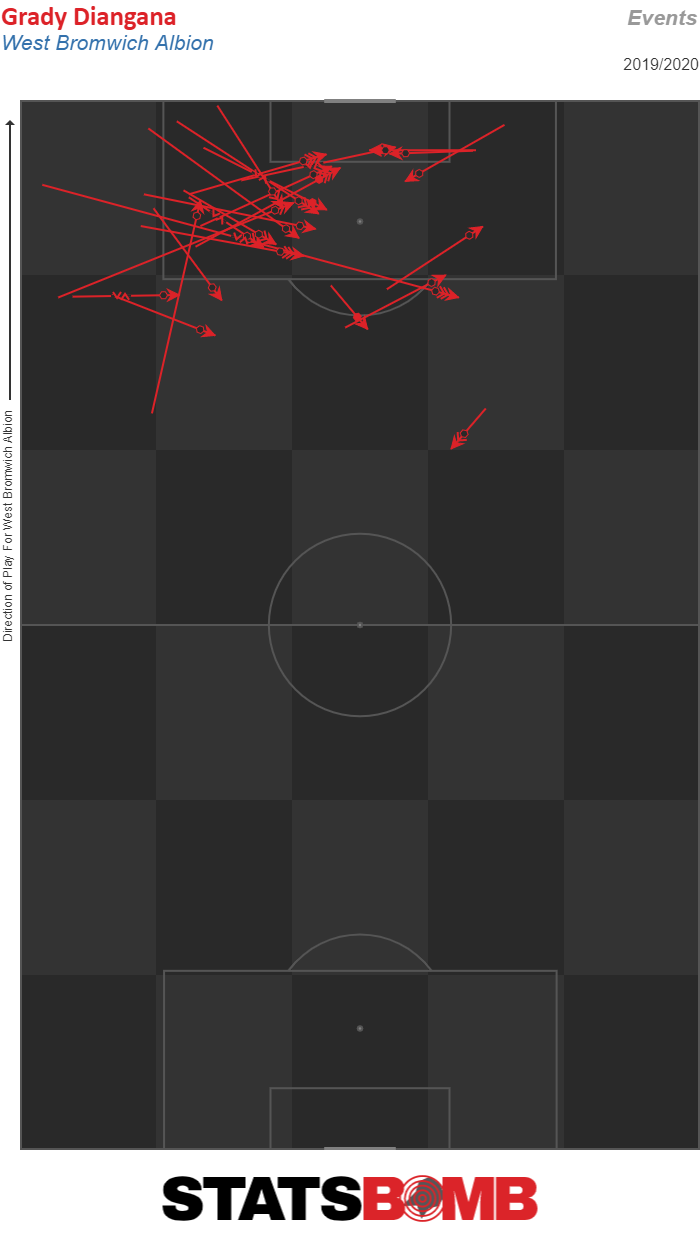 Glancing at this and all of a sudden you might think that it’s easy to create chances in the danger zone on a regular basis. It isn’t, Diangana is just making it look that way.
Glancing at this and all of a sudden you might think that it’s easy to create chances in the danger zone on a regular basis. It isn’t, Diangana is just making it look that way.
Ready for the step up, but it’ll cost you
If I don’t mention it now, you’ll scroll through this list and wonder why on earth Ebere Eze isn’t on the list – that’s because he’s already been given the StatsBomb treatment last month which you can read here. For the third season in succession, a glance at the top of the Championship goalscorer charts will show you Jarrod Bowen’s name. What separates him from his contemporaries in the list is the fact that Bowen isn’t an out and out goalscoring centre forward. He’s an out and out goalscoring winger. Taking a somewhat unconventional route to the second tier coming through the youth ranks at Hereford United in the non-league, Bowen made eight appearances at the end of the 2013-14 season at the age of 17 but was released that summer when Hereford were expelled from the division for financial mismanagement. Having caught the eye of several scouts, Bowen was picked up by Hull. Fast forward a couple of years and the winger was arguably the main beneficiary of Hull’s relegation to the Championship in 2016-17. He broke into the side and top scored in his first full season in Hull’s first team in 2017-18, netting 14 goals in the Championship, and went even better last season to net 22 times. With nine goals and two assists already this season, it’s getting to the point where Bowen’s form is impossible for Premier League clubs to ignore. 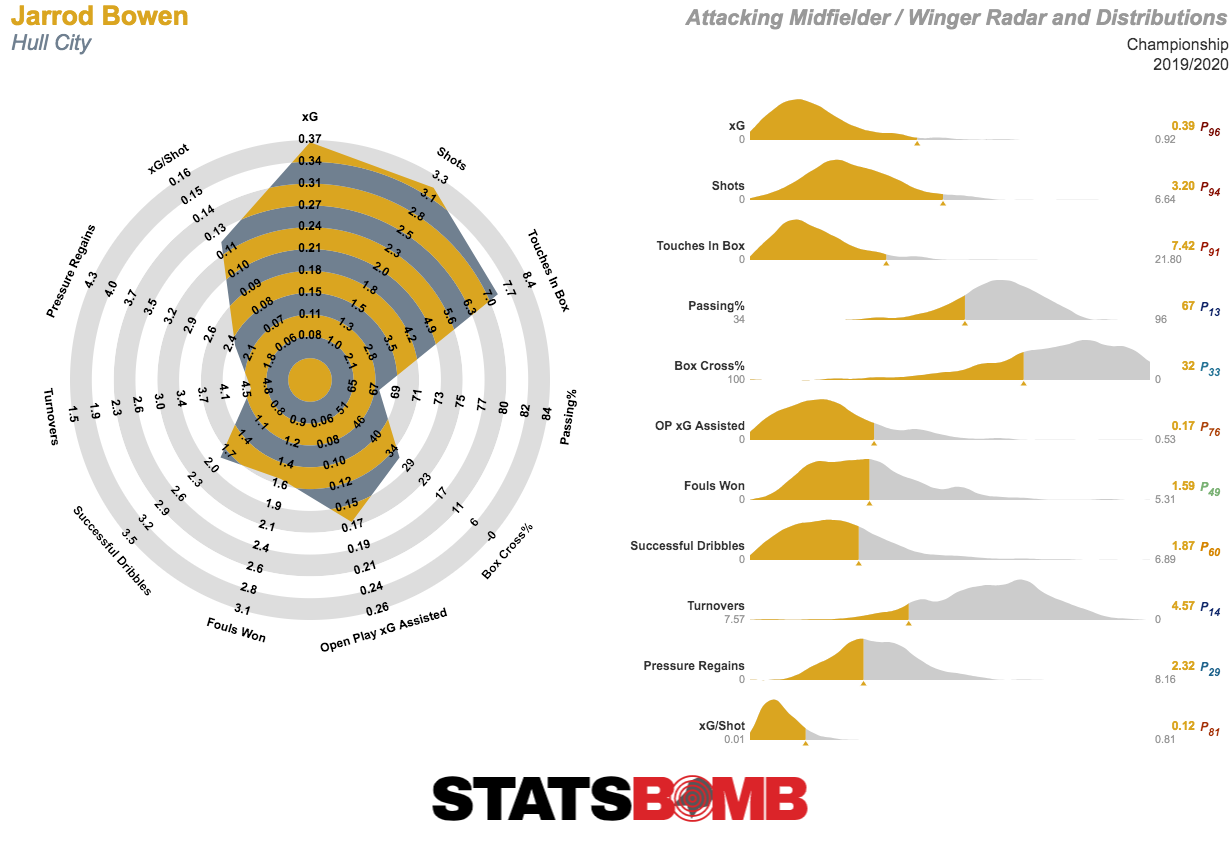 A real connoisseur of the out-to-in run from the right-hand side and with a skillset maximised in Hull’s counter attacking system, his contract situation makes possible January interest almost inevitable. There’s a new bumper contract on the table from the Tigers but, as things stand, Bowen’s deal technically ends in Summer 2020, though Hull have an option to extend it a year which they’ll almost certainly exercise. Undoubtedly several clubs will be keeping close eye on the progress of those negotiations. Another player who’s starred on the wing in recent seasons is Ollie Watkins, but the real curiosity over Watkins is down to his positional development. Premier League sides were already reportedly keeping tabs on him due to his performances on the flank for Brentford, but Watkins has, this season, started as a central striker and, by the returns we’ve seen so far, anyone would think he’d spent his entire career there. Second only to Aleksandr Mitrovic in the scoring charts, Watkins has adapted quickly to the different demands placed on him by playing centrally and leading the line and the move can only have added several million pounds to his price tag, given that interested clubs will now be bidding for a player not just with a proven track record out wide but now also as a #9.
A real connoisseur of the out-to-in run from the right-hand side and with a skillset maximised in Hull’s counter attacking system, his contract situation makes possible January interest almost inevitable. There’s a new bumper contract on the table from the Tigers but, as things stand, Bowen’s deal technically ends in Summer 2020, though Hull have an option to extend it a year which they’ll almost certainly exercise. Undoubtedly several clubs will be keeping close eye on the progress of those negotiations. Another player who’s starred on the wing in recent seasons is Ollie Watkins, but the real curiosity over Watkins is down to his positional development. Premier League sides were already reportedly keeping tabs on him due to his performances on the flank for Brentford, but Watkins has, this season, started as a central striker and, by the returns we’ve seen so far, anyone would think he’d spent his entire career there. Second only to Aleksandr Mitrovic in the scoring charts, Watkins has adapted quickly to the different demands placed on him by playing centrally and leading the line and the move can only have added several million pounds to his price tag, given that interested clubs will now be bidding for a player not just with a proven track record out wide but now also as a #9. 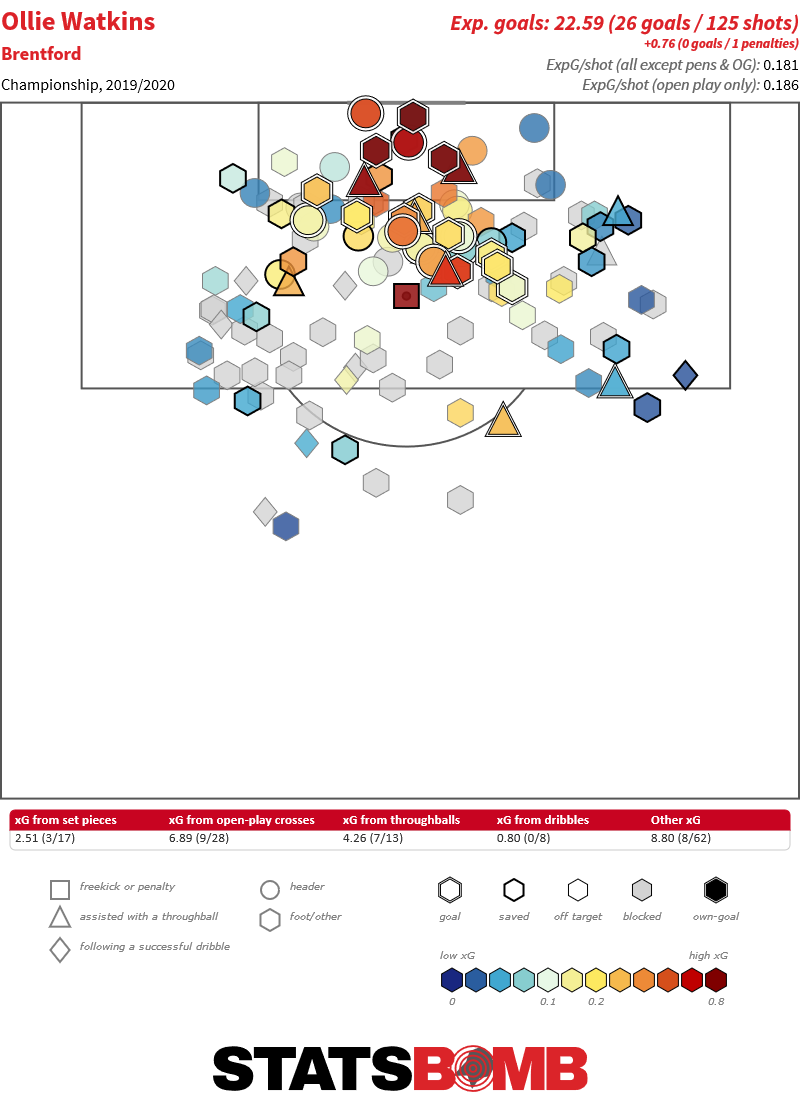 Watkins already possessed a well-developed all-round game due to his history playing in deeper positions on the wing and, though it took a few games for him to get up to speed, the move up front has meant he can still utilise his link-play and creative spark, but he can now also maximise his not-insignificant goal threat by getting between the posts a lot more and playing a larger role in finishing chances rather than in the build-up to them. Unless the real big bucks get put on the table, a January move seems unlikely with Brentford poised for a promotion push, but at this rate it’s hard to imagine Watkins will be playing in the Championship next season regardless of whether the Bees succeed in going up or not. We won’t dwell on this last player for too long, but it’s impossible to ignore when a 16 year old breaks into the first team, stays in the first team, and does this.
Watkins already possessed a well-developed all-round game due to his history playing in deeper positions on the wing and, though it took a few games for him to get up to speed, the move up front has meant he can still utilise his link-play and creative spark, but he can now also maximise his not-insignificant goal threat by getting between the posts a lot more and playing a larger role in finishing chances rather than in the build-up to them. Unless the real big bucks get put on the table, a January move seems unlikely with Brentford poised for a promotion push, but at this rate it’s hard to imagine Watkins will be playing in the Championship next season regardless of whether the Bees succeed in going up or not. We won’t dwell on this last player for too long, but it’s impossible to ignore when a 16 year old breaks into the first team, stays in the first team, and does this. 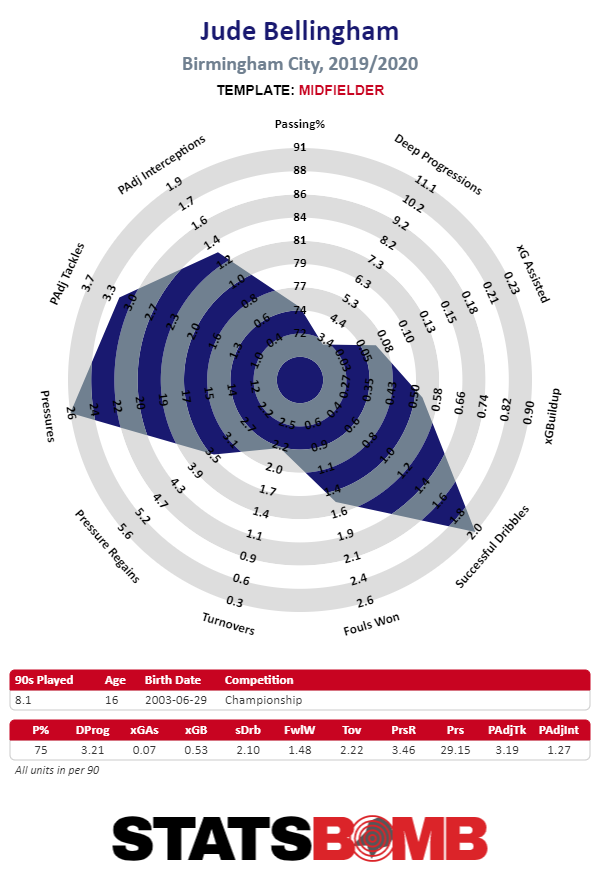 For a couple of years now, Jude Bellingham has been quietly spoken of by those in the know as a potential superstar when he makes it into the senior team. Well now we’re seeing the fruit of that already and it’s obvious the hype was not misplaced. To be clear, Bellingham doesn’t turn 17 until next summer. It doesn’t need saying that it’s a case of when and not if the youngster makes the move to the top of the game but for now, Birmingham fans will try to enjoy him while they can.
For a couple of years now, Jude Bellingham has been quietly spoken of by those in the know as a potential superstar when he makes it into the senior team. Well now we’re seeing the fruit of that already and it’s obvious the hype was not misplaced. To be clear, Bellingham doesn’t turn 17 until next summer. It doesn’t need saying that it’s a case of when and not if the youngster makes the move to the top of the game but for now, Birmingham fans will try to enjoy him while they can.
Fede Valverde has revitalized Real Madrid's midfield
The war dragged on all summer, the fighting waged on many fronts. Zinedine Zidane found himself in the trenches against his own club, Real Madrid, insisting he needed an energetic midfielder that could play a box-to-box role. Up north, Paul Pogba was drawing battle lines at Manchester United in search of a way out, dropping hints with the subtlety of a sledgehammer. Mino Raiola, Pogba’s agent, fought with his words: "Everyone within the club from the manager to the owner knows Paul’s wishes," he said. But for the first time in a long time, Real Madrid didn’t get what they wanted. The pressure on United wasn’t enough, and Pogba stayed put. Meanwhile in Madrid, Fede Valverde toiled under the baking summer sun, just waiting for a chance. The season didn’t start as planned and they found themselves humiliated against Paris Saint Germain in the Champions League and overrun on a number of occasions — Madrid’s defence and midfield was likened to a sieve. Zidane’s second coming at the club looked like it was going to be short as José Mourinho readied his own return speech and the eulogies were written for the Frenchman. Desperation, however, is the mother of all innovation. Zidane was forced into giving the Uruguayan the chance he was seeking. "I just feel like another player in the squad," Valverde said after the Eibar game at the weekend when asked if he felt like he was Real Madrid’s best signing of the summer. "They have given me confidence and I feel like I did when I arrived . . . like Fede Valverde.” He might feel like just another player, but he has been a revelation this season, the solution to Madrid’s midfield malaise. One of the first things Zidane noticed when he returned to the club at the tail end of last season was that the engine room, which had driven much of the team's success during his first spell, was stale and tired. Modrić had come back from the World Cup after dragging Croatia to the final and was a shadow of the player who had been directing things in midfield for the club for years. His midfield partner, Toni Kroos, was once referred to as a “diesel tractor” by his former manager Bernd Schuster. The German is essentially useless without a line breaker beside him and Casemiro, behind them, could only carry so much water. And so Zidane decided to try Valverde in the box-to-box role. The 21-year-old has been phenomenal ever since. Of the last seven games, Valverde didn't start against Mallorca, where Real Madrid lost, or Real Betis, a game which Real Madrid drew. 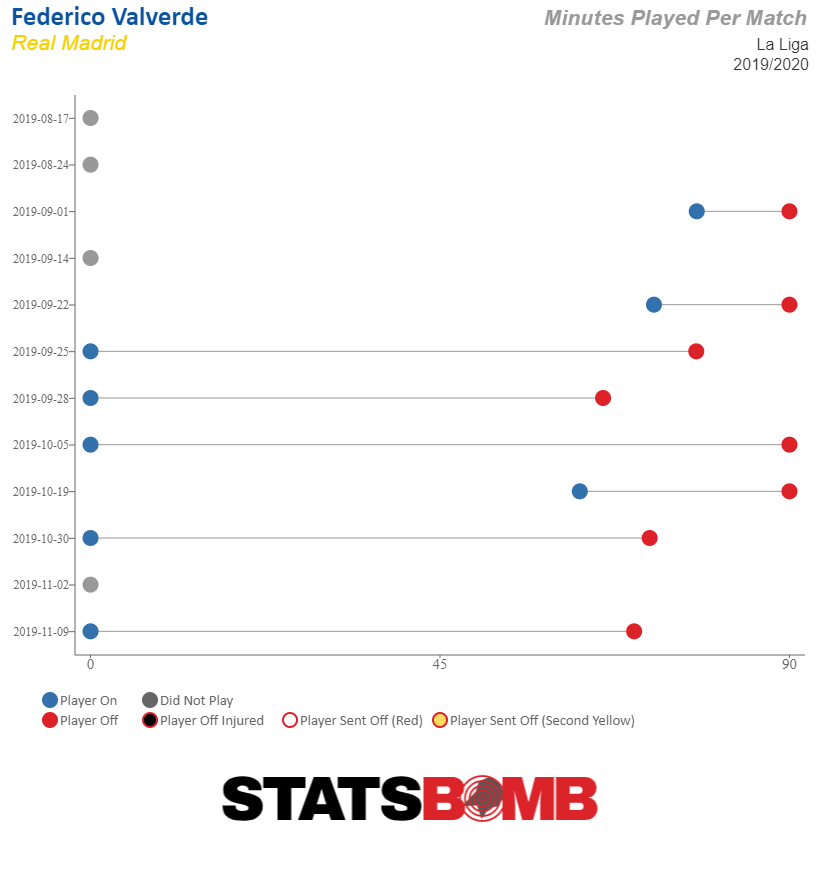 Since Valverde has come in, the only other player with at least 300 minutes who has more pressures is Lucas Vázquez, who has carved out a specialty for himself and a steady supply of minutes in the team as the hard-tackling winger.
Since Valverde has come in, the only other player with at least 300 minutes who has more pressures is Lucas Vázquez, who has carved out a specialty for himself and a steady supply of minutes in the team as the hard-tackling winger. 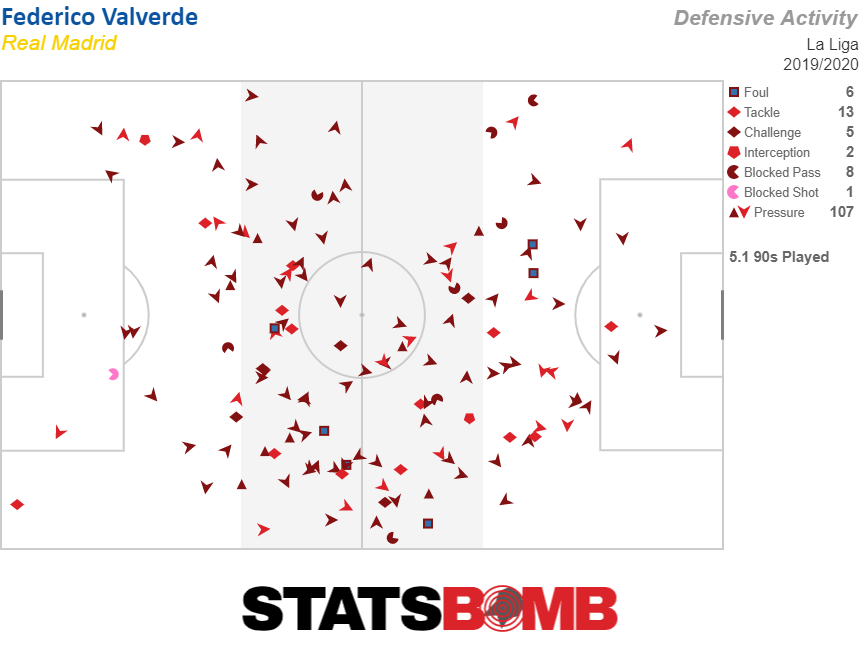 Before Zidane slotted Valverde in, Real Madrid simply weren't exerting any pressure. This made life more difficult on the midfield and attack and almost impossible for Thibaut Courtois. He came under criticism for conceding eight goals in his first four league games of the season. Real Madrid were still picking up results but their form was unsustainable. With the chance he's been given, Valverde has 24.76 aggressive actions per 90 minutes, ensuring teams are once again on the back-foot when they face Real Madrid. Their game truly started to change against Osasuna, Valverde's first start of the season. Real Madrid dominated throughout. During that game, Valverde had 17 pressures, which was third behind Casemiro and Lucas Vázquez. His midfield radar shows not only his pressures, but his PAdj Tackles is far higher than the league average too. He's also involved in the team's build-up play.
Before Zidane slotted Valverde in, Real Madrid simply weren't exerting any pressure. This made life more difficult on the midfield and attack and almost impossible for Thibaut Courtois. He came under criticism for conceding eight goals in his first four league games of the season. Real Madrid were still picking up results but their form was unsustainable. With the chance he's been given, Valverde has 24.76 aggressive actions per 90 minutes, ensuring teams are once again on the back-foot when they face Real Madrid. Their game truly started to change against Osasuna, Valverde's first start of the season. Real Madrid dominated throughout. During that game, Valverde had 17 pressures, which was third behind Casemiro and Lucas Vázquez. His midfield radar shows not only his pressures, but his PAdj Tackles is far higher than the league average too. He's also involved in the team's build-up play. 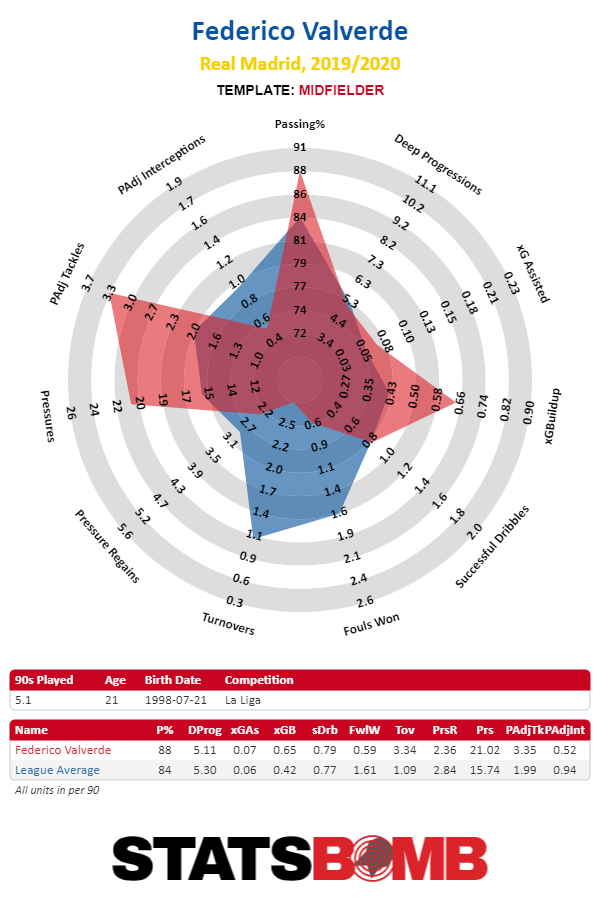 "The best thing I have is my vision and the rhythm to play the ball," he told Real Madrid TV recently. "And always with the desire to run and arrive in both areas in order to defend and attack. You could say I am a little hot-blooded on the field.” So, basically he offers everything. Everything that Zidane needed. There's no doubt that Zidane knew he would be good, but he wasn’t sure if he could be the player he desperately needed. The Real Madrid manager wasn’t going to put his future on the line for an untested youngster. But when Donny Van Der Beek became available, Zidane held firm; it was either Pogba or nobody. In the end, nobody may have been the best thing to happen to the team.
"The best thing I have is my vision and the rhythm to play the ball," he told Real Madrid TV recently. "And always with the desire to run and arrive in both areas in order to defend and attack. You could say I am a little hot-blooded on the field.” So, basically he offers everything. Everything that Zidane needed. There's no doubt that Zidane knew he would be good, but he wasn’t sure if he could be the player he desperately needed. The Real Madrid manager wasn’t going to put his future on the line for an untested youngster. But when Donny Van Der Beek became available, Zidane held firm; it was either Pogba or nobody. In the end, nobody may have been the best thing to happen to the team.
Changing Real Madrid's ageing side
Real Madrid have been trying to find replacements for their ageing players for a couple of years now. The signings of Marco Asensio from Mallorca, Dani Ceballos from Real Betis, Vinicius from Flamengo and Rodrygo from Santos respectively have certainly been welcome additions to the squad. But, as is normal for a highly successful team, breaking into the starting XI has proven difficult for the newcomers. 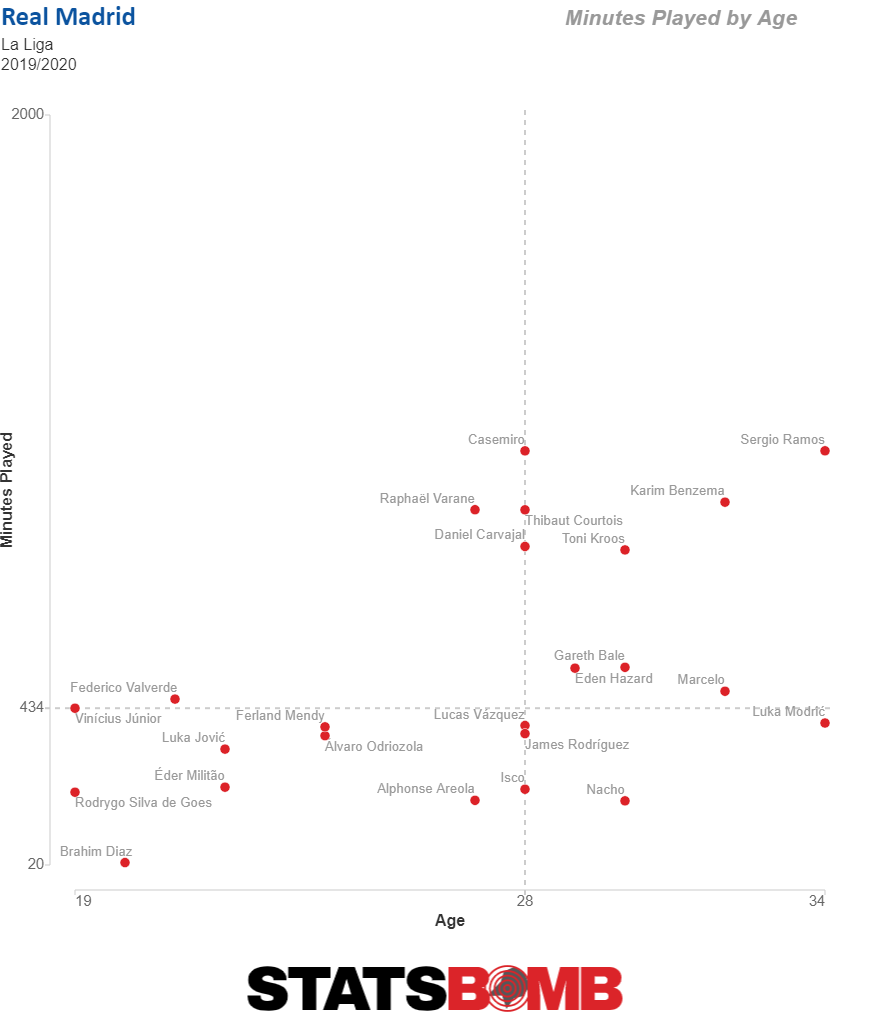 None of their bright young stars had done so until Valverde came along, followed quickly by Rodrygo, who continues to impress. Yet the Brazilian doesn't necessarily change the way the team play, but is simply a replacement for Gareth Bale. Dani Ceballos couldn't find a role for himself and left for Arsenal, Alvaro Odriozola hasn't been able to supplant Dani Carvajal at right-back or even compete for minutes at the position. Vinicius' decent run last year looks to be finished as a loan deal in January becomes a possibility. Sergio Reguilon is on loan to Sevilla and Eder Militao is still finding his feet. Meanwhile, Brahim is linked again with a loan deal as he fails to make an impact and Luka Jović has scored just once all season. Aside from Eden Hazard replacing Cristiano Ronaldo and Rodrygo just now taking Bale's place, the back four and midfield for Real Madrid have looked too familiar for too long. Valverde, on the other hand, nicknamed "El Pajarito" or 'The Little Bird' because he used to fly around the field when he was younger, changes everything. He creates spaces in the opposition penalty area with his driving runs and puts pressure on defenders with his leggy pressing. He helps out at the back and frees up Casemiro at the base of midfield, where previously he was swamped time and time again. Valverde's emergence also means the need for Casemiro to be a box-to-box midfielder with attacking intent as well as a defensive, holding midfielder is gone. “Every time I pick him, he plays well,” said Zidane after another excellent performance against Eibar, possibly Valverde's best yet. “He was just missing the goal and he got that so I’m delighted for him and for Madrid.” If he keeps up his current form and can add a consistent threat in front of goal, the Little Bird will continue to soar.
None of their bright young stars had done so until Valverde came along, followed quickly by Rodrygo, who continues to impress. Yet the Brazilian doesn't necessarily change the way the team play, but is simply a replacement for Gareth Bale. Dani Ceballos couldn't find a role for himself and left for Arsenal, Alvaro Odriozola hasn't been able to supplant Dani Carvajal at right-back or even compete for minutes at the position. Vinicius' decent run last year looks to be finished as a loan deal in January becomes a possibility. Sergio Reguilon is on loan to Sevilla and Eder Militao is still finding his feet. Meanwhile, Brahim is linked again with a loan deal as he fails to make an impact and Luka Jović has scored just once all season. Aside from Eden Hazard replacing Cristiano Ronaldo and Rodrygo just now taking Bale's place, the back four and midfield for Real Madrid have looked too familiar for too long. Valverde, on the other hand, nicknamed "El Pajarito" or 'The Little Bird' because he used to fly around the field when he was younger, changes everything. He creates spaces in the opposition penalty area with his driving runs and puts pressure on defenders with his leggy pressing. He helps out at the back and frees up Casemiro at the base of midfield, where previously he was swamped time and time again. Valverde's emergence also means the need for Casemiro to be a box-to-box midfielder with attacking intent as well as a defensive, holding midfielder is gone. “Every time I pick him, he plays well,” said Zidane after another excellent performance against Eibar, possibly Valverde's best yet. “He was just missing the goal and he got that so I’m delighted for him and for Madrid.” If he keeps up his current form and can add a consistent threat in front of goal, the Little Bird will continue to soar.
Norwich seemed to start the season brightly. What happened?
Faced with the difficult task of surviving the Premier League with the same core of players who got them promoted last season, it initially looked like Norwich City had found a way to do it.
Two wins from the first five games isn’t a huge figure, but it included some genuinely eye-catching performances. Despite the scoreline, the Canaries showed genuine promise at Anfield, with one really good chance the only difference between the sides in terms of expected goals.
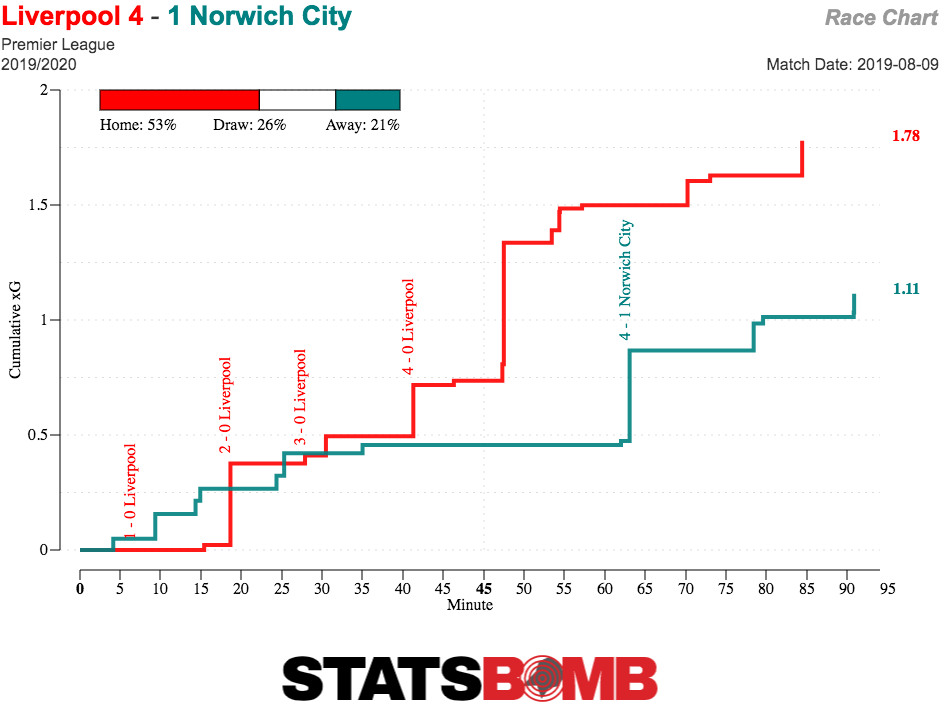
Of course, it’s the victory against Manchester City that got everyone talking. A 3-2 win against the champions while fielding an XI without a number of players nursing injuries isn’t supposed to happen. And while they had a hard time withstanding the sky blue onslaught in the last 20 minutes, they had already done enough good work to find themselves in a winning position, and kickstarted the narrative surrounding Man City’s defensive issues.
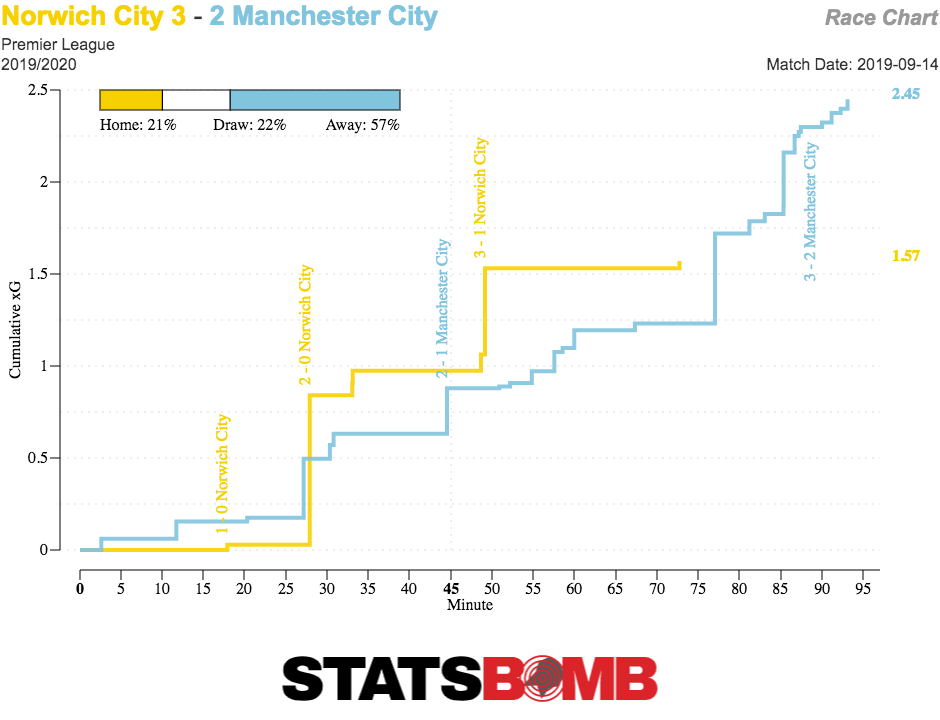
It’s good that Norwich fans have been able to hang on to that memory, because since then they've watched six defeats and one draw over seven games. The Canaries are now bottom of the table, four points from safety. It’s gone from exciting to very, very ugly in the blink of an eye. So what happened? Curiously, perhaps not what was expected. Across the first five fixtures, Norwich had an expected goal difference per game of -0.46, which has worsened to -0.52 since. A small decline, but those initial fixtures featured matches against Liverpool and Man City. A schedule-adjusted model would likely track Norwich as significantly worse after these games.
More curiously, Norwich have actually improved on the defensive side, though this was a very low bar to clear. They’ve gone from conceding an apocalyptically bad 19 shots per game to a merely very poor 15.71, and their increase in chance quality isn't enough to balance this out. They’re pressing higher and more aggressively, though it’s likely this was always the plan, just one that Norwich struggled to execute well.
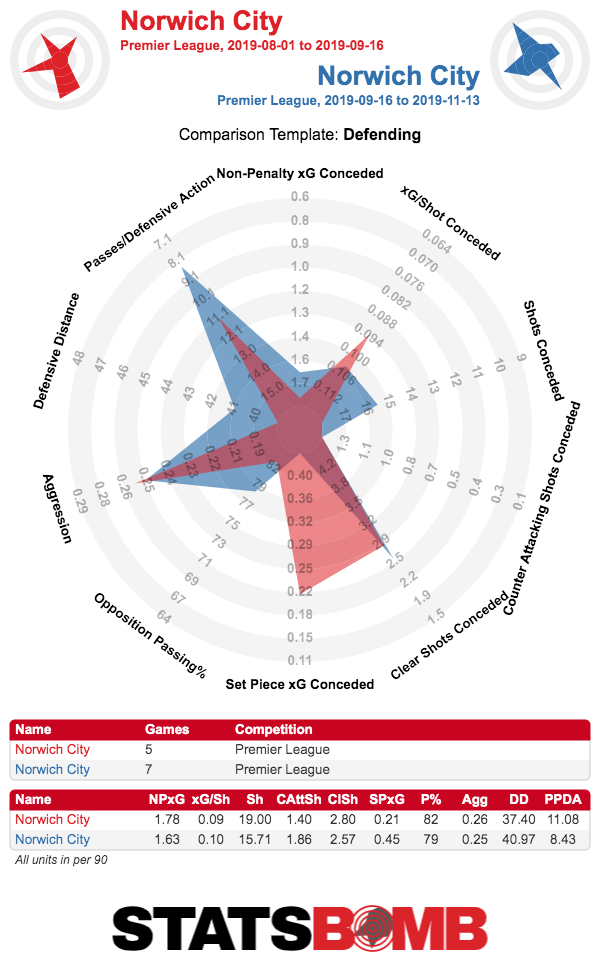
Overall, their xG conceded is close to the worst in the league. It’s better than their actual goals conceded, having let in 27 (plus one penalty scored) from an xG of 20.99, but it’s very difficult to put a positive spin on this.
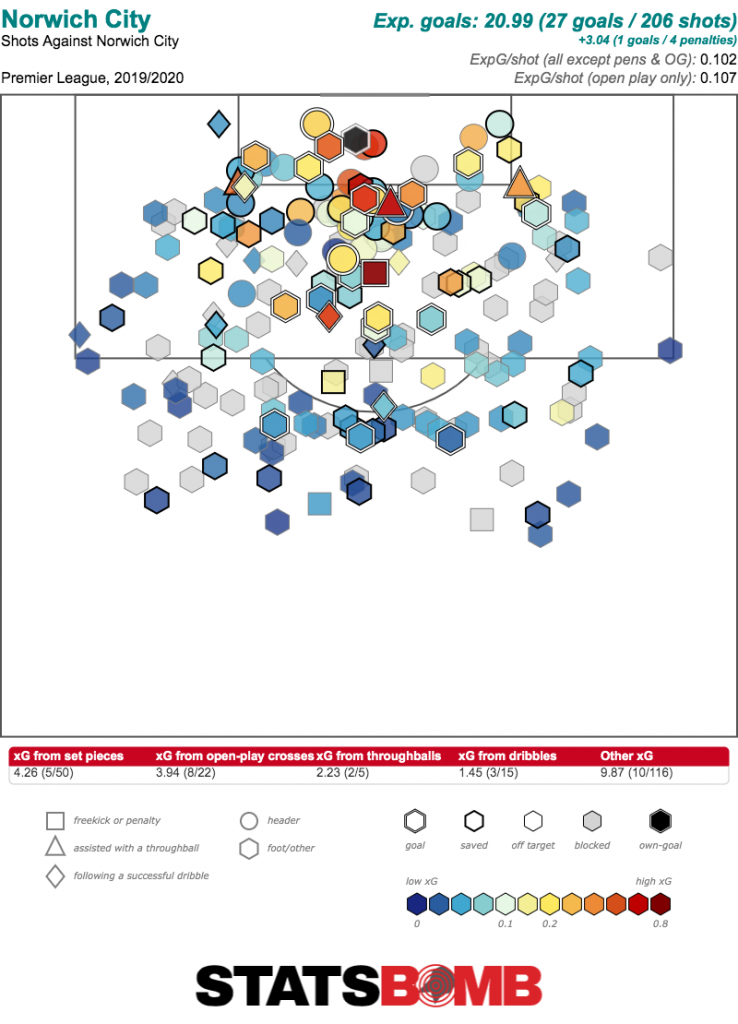
On the attacking end, the Canaries have again underperformed a touch, looking like a fairly middling Premier League team on this side of the ball.
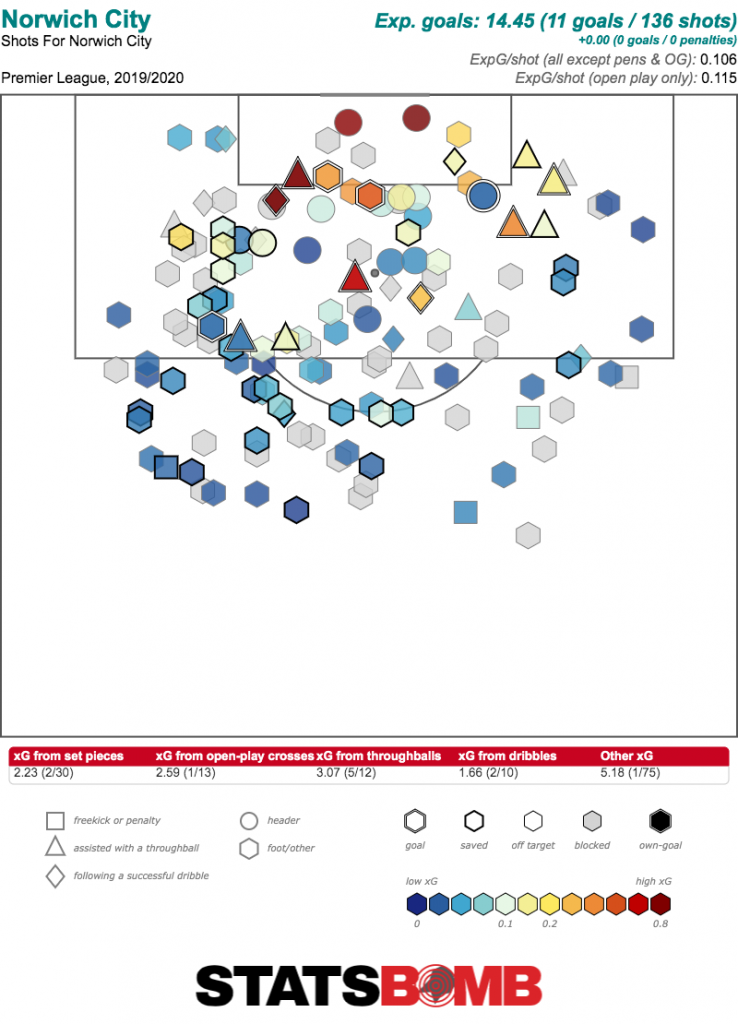
Put the two together and you have a team that might not be the very worst in the Premier League, but one that is certainly part of that conversation, and finds itself already at a points disadvantage.
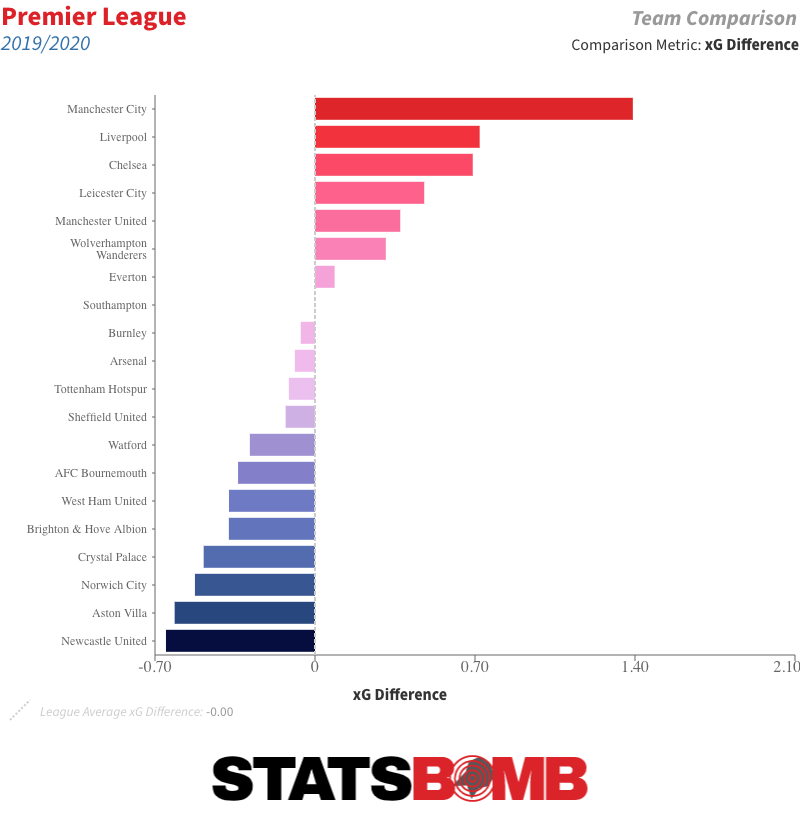
In attack, the biggest story is that Teemu Pukki’s goals have dried up. The temptation is to put this down to either a bad finishing run or an xG fall off, and the truth is both are involved. Pukki has generated 2.35 xG since mid-September without scoring a goal. But he’s also taking nearly a whole shot fewer per 90, and they’re of lesser quality than before. His touches inside the box have increased, but for whatever reason, he’s having a more difficult time turning those into good chances.
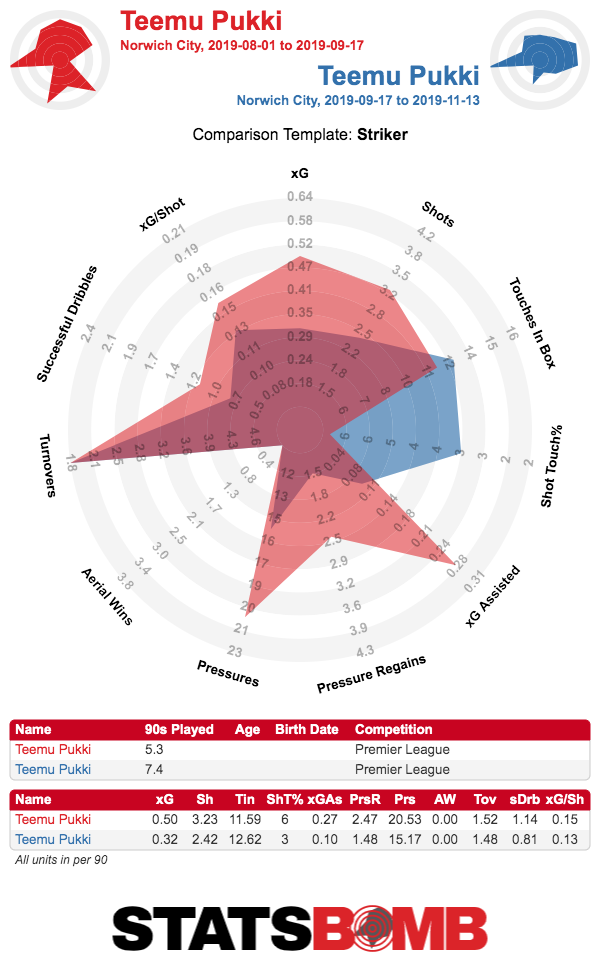
Emiliano Buendía is a slightly different case. Yes, his xG assisted, in particular, is down because he has been less of an attacking threat since mid-September. But his radar shows he's being tasked with more defensive work than before.

When looking at his passing sonars, it’s obvious a shift has taken place. In the more recent fixtures (right), he’s passing the ball in deeper areas more frequently, but still doing a good job of moving the ball forward. You might argue that this isn't what fans want him to be doing, but it doesn’t seem like the player is at fault.
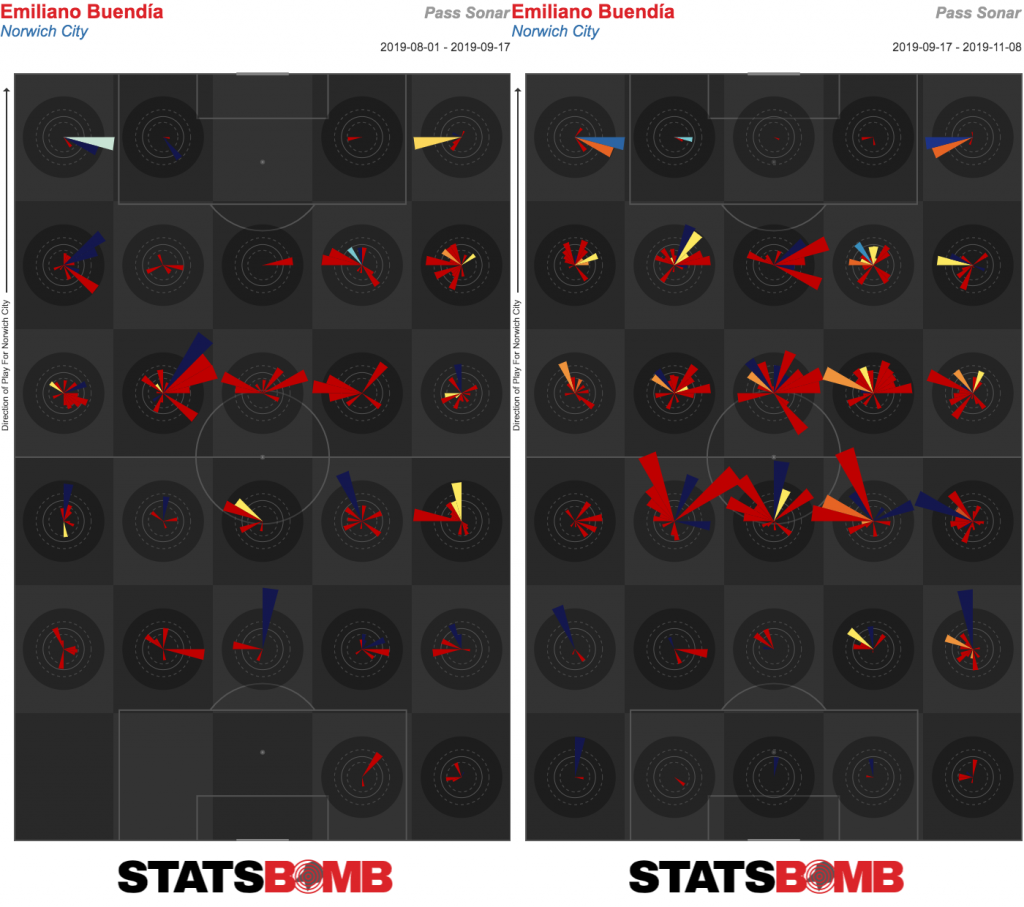
As for Todd Cantwell, the other attacking player who generated excitement, his fall off is rather more predictable. A not insignificant part of his early good form came from a ludicrously unsustainable xG per shot, which has since dropped. Yet Cantwell remains a positive contributor and there shouldn’t be too many concerns about him coming down to Earth a bit.
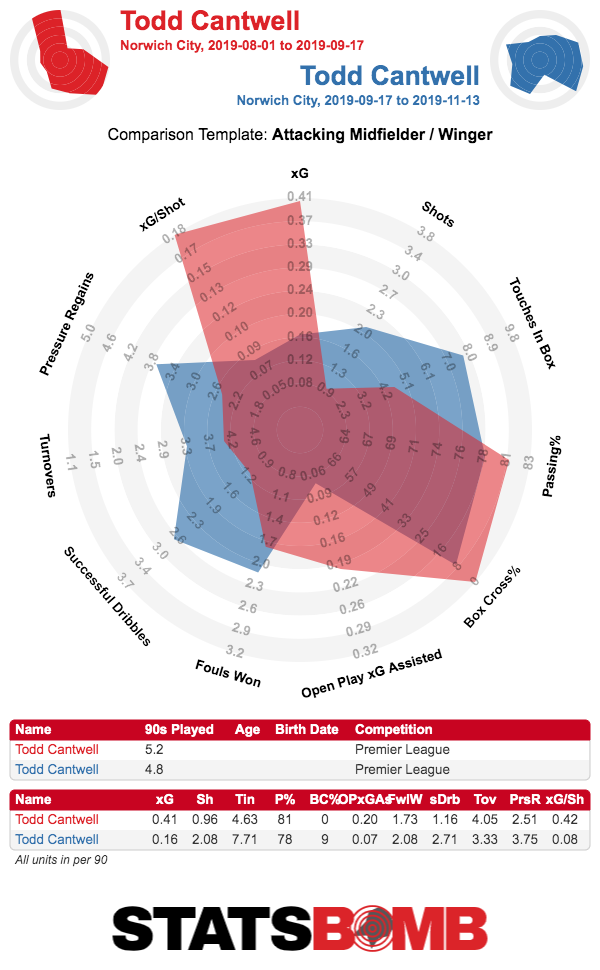
On the defensive end, things are confusing. Norwich are, in theory, a side that wants to press and control the game in the opposition half. But you can’t do that if you can’t get the ball over the halfway line. Their defensive activity map depicts a team constantly forced to defend in their own half.
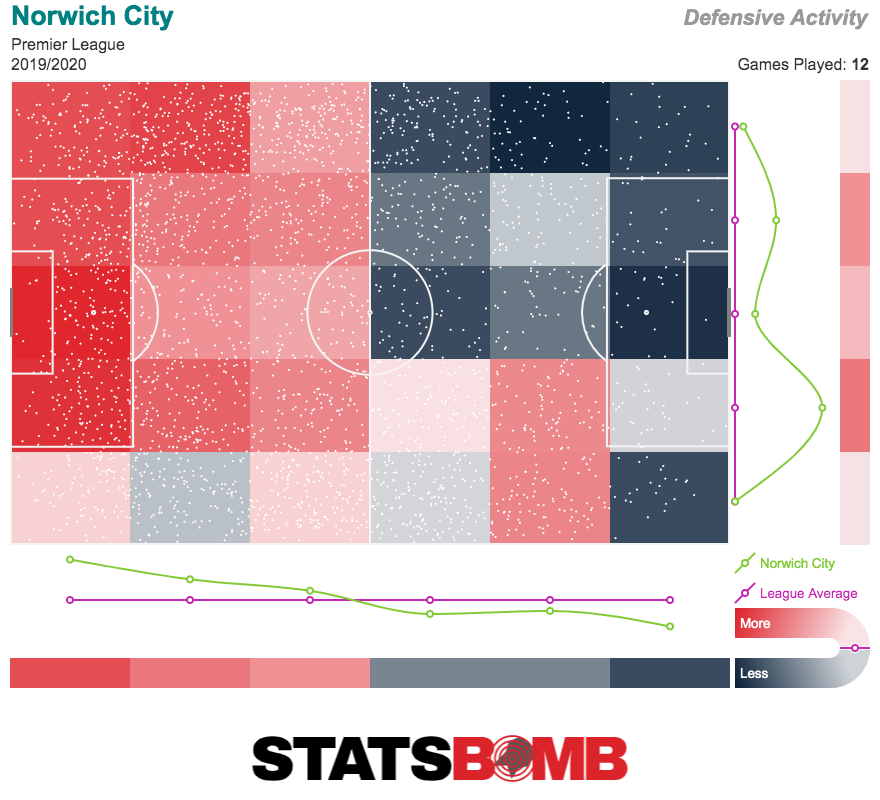
In fairness, they don’t do an awful job of keeping the ball out of their own box. Their 33 passes conceded inside the box is the 12th best in the league, rather better than their 18th best xG conceded. There are those who believe that Norwich’s defenders are not of the required ability for the Premier League, and while this is difficult to quantify, the degree to which teams seem to be able to turn situations in the box into good shots against the Canaries supports this.
Norwich might make a great case study showing the problems with playing possession football against generally superior opponents. A side like Man City are capable of penning teams into their own half as they work the ball into dangerous areas, with opponents often unable to counter because they just can’t get out. Norwich, on the other hand, attempt to play the same type of football, but have not been able to dictate their games in any meaningful way. Instead, what we see most frequently is the side in their own third, starting elaborate sequences to play out from the back. Norwich’s brightest moments have come from these passages of play, but if you’re constantly having to start play from your own third, you might start to question your methods.
The question is how much the club, from owners Delia Smith and Michael Wynn-Jones to Director of Football Stuart Webber, are wedded to this approach. If they are, then there shouldn’t be much doubt that manager Daniel Farke stays in the job. The Canaries appear to be a properly drilled side who understand what they’re being asked to do but are finding they’re not able to to it at the Premier League level. Considering how little the club spent this summer, it’s entirely reasonable to believe they plan to accept relegation and rebuild the squad with their parachute payments. Farke has shown enough in his time at Carrow Road that he’s a more-than-reasonable choice to continue this project and attempt to bring the side back up next season in the Championship.
However, if the Norwich hierarchy believes that avoiding relegation is the first, second and only priority, a change might need to be made. Considering Farke’s decent work, it would need to be someone who brings a very different style to the pitch. If one takes the view that the Canaries’ centre backs are well short of being good enough, then the new approach would have the squad play in a way that gives the defenders much more protection. The obvious risk is that if they still go down, they’d effectively be building a new project from scratch in the Championship next season, so don’t be shocked if Farke hangs on even if results do not improve.
Stats of Interest
Which player outside of Liverpool and Manchester City has the best open play xG assisted per 90 minutes this season? Why, it’s Andriy Yarmolenko, who appears to have been hooked to the rejuvenation machine.
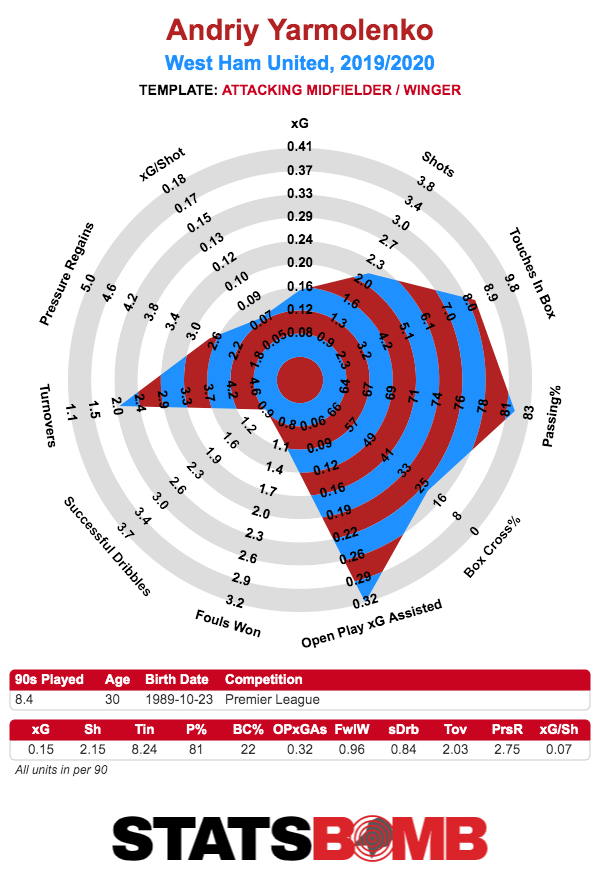
He is able to carve open teams to allow for some terrific chances from the right flank. Only one assist so far, but he could easily add to this in the coming weeks.
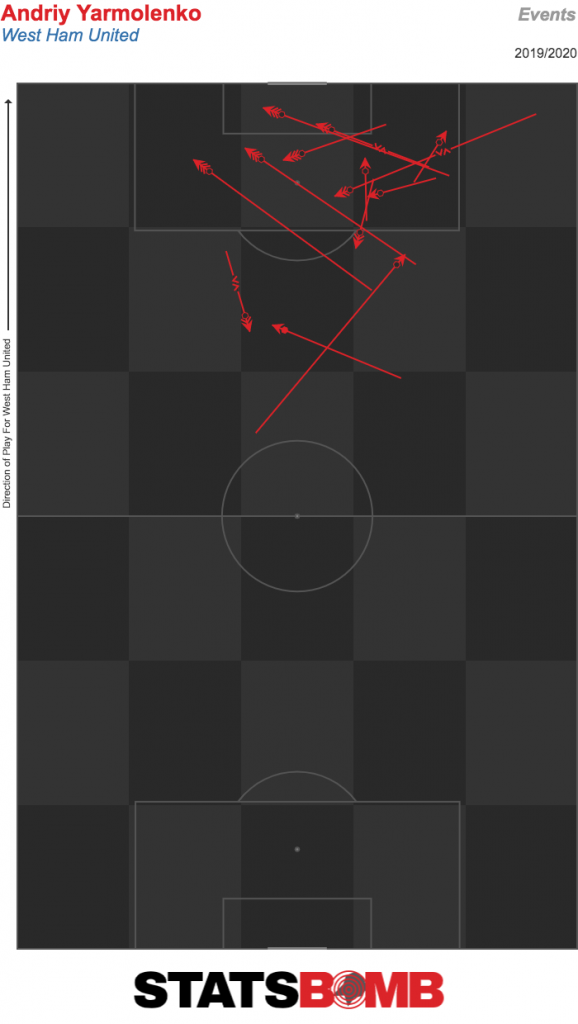
It was reported over the summer that Manchester City were recruiting a specialist set-piece coach, with former Brentford employee Nicholas Jover seemingly getting the job. On the attacking side, the impact is significant. Guardiola’s men have put up a higher xG per set piece than any other side in the Premier League. We’re dealing with a small sample size here, but something real might be happening.
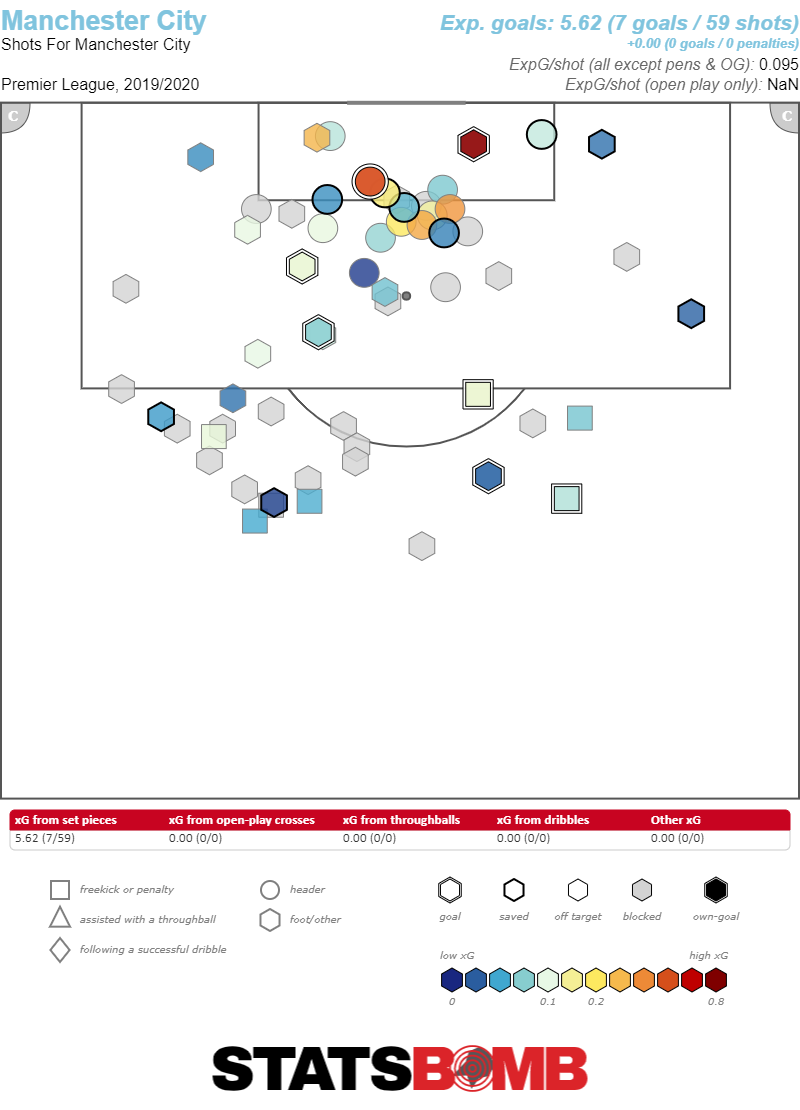
Jamie Vardy started the season on fire in front of goal, with the man himself claiming he’s in the form of his life. Sorry to ruin your fun, Jamie, but not so fast. Vardy’s xG per 90 is actually down from last season (0.34 compared to 0.43) and has been boosted by an astonishing finishing run. He should enjoy it now, because it’s very rare to go on a run of scoring 10 non-penalty goals from 25 shots.
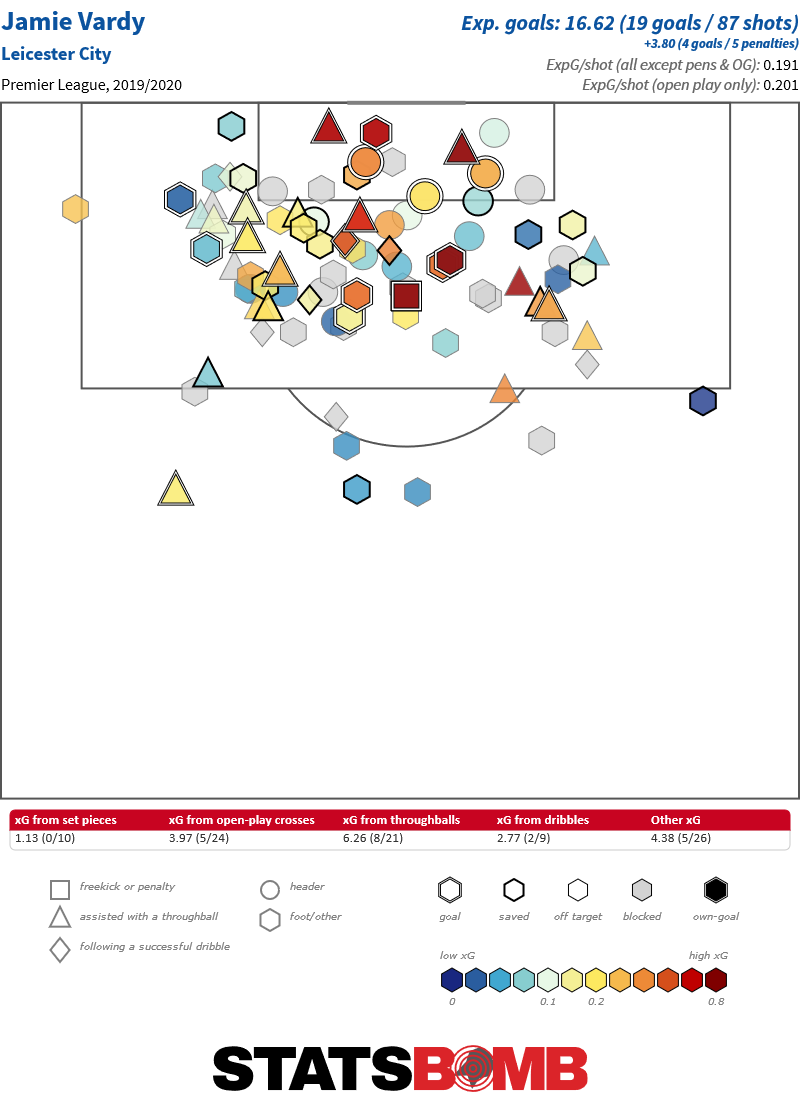
Header image courtesy of the Press Association
Everton should trust the process despite early struggles
Everton are fine. There is, of course, considerable angst about their table position. They sit in 15th place after 12 games, which is certainly not ideal. However, even that perch is better than 17th, the spot they clung to before last weekend’s victory over Southampton. But, contrary to the well-worn phrase, position isn’t everything in life. Everton may be sitting in 15th but they've accumulated 14 points. That’s only three points behind fifth-place Sheffield United. The middle of the Premier League table is extremely congested this season. Two teams have 17 points, three have 16, four have 15 and Everton are accompanied by Tottenham Hotspur on 14. With the midtable brimming with respectable sides, how things look now are certainly not how things will look in a month or two, or even after the games resume in two weeks’ time. Should Everton start winning games, they're likely to fly up the table in a hurry. The real question is, will they start winning games? There’s good news on that front as well. Everton’s lack of points so far this season is not particularly reflective of their underlying performances. In fact, by expected goals, the Toffees seem more like a Europa League level side than a relegation battler. A quick look at their non-penalty xG difference shows they are the sixth most effective team in the Premier League. 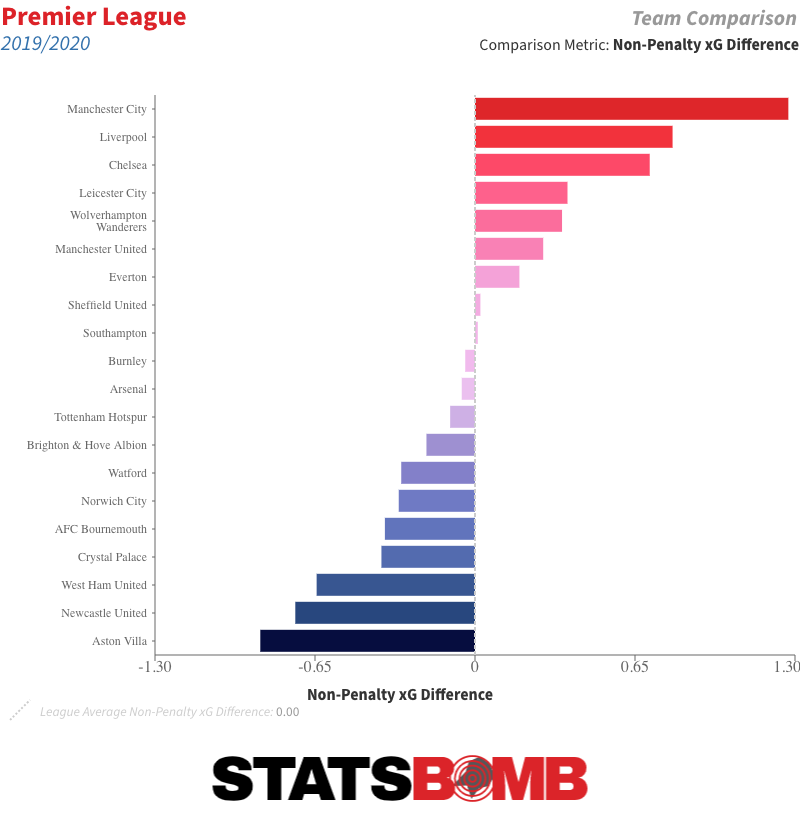 The underlying numbers, at least, show Everton are competent on both sides of the ball. They have the fifth-highest non-penalty xG in the Premier League at 1.32 per match, and the eighth-best non-penalty xG conceded mark at 1.10. These are the kinds of numbers you’d expect from a team competing for a Europa League spot, which at only two points off of seventh place, they technically are. Another way to interpret Everton’s start is to look at the trendlines over the last couple of years. A ten-game rolling average of their xG and xG conceded shows that after playing extremely well at the end of last season, Everton is struggling to keep up their on-fire form. Yet at the same time, there are no real long-term concerns, the trendlines are moving in the right direction, and by and large, Marco Silva has his squad getting the better of things, at least when it comes to expectations.
The underlying numbers, at least, show Everton are competent on both sides of the ball. They have the fifth-highest non-penalty xG in the Premier League at 1.32 per match, and the eighth-best non-penalty xG conceded mark at 1.10. These are the kinds of numbers you’d expect from a team competing for a Europa League spot, which at only two points off of seventh place, they technically are. Another way to interpret Everton’s start is to look at the trendlines over the last couple of years. A ten-game rolling average of their xG and xG conceded shows that after playing extremely well at the end of last season, Everton is struggling to keep up their on-fire form. Yet at the same time, there are no real long-term concerns, the trendlines are moving in the right direction, and by and large, Marco Silva has his squad getting the better of things, at least when it comes to expectations. 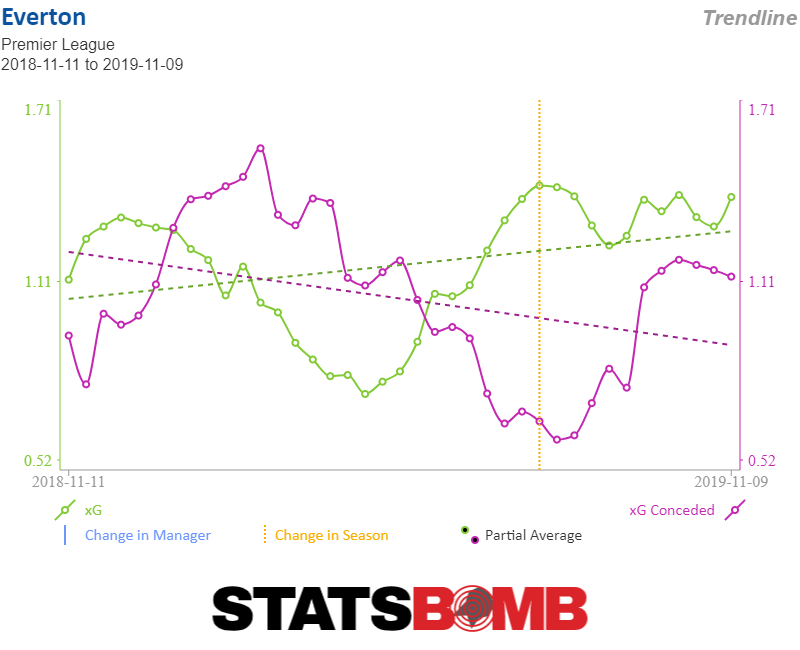 The real problem for Everton is that while their xG has drifted downward from its sky-high perch at the end of last season, their actual goal difference has plummeted. The team is playing somewhat worse, but they’re really getting kicked in the teeth by results. Some of Everton’s lacking point total really is just down to easily identifiable bad luck. There’s not much you can do about finding yourself on the wrong side of a VAR call against Brighton that the Premier League later acknowledged was incorrect. These things might even themselves out in the long run, but 12 games is certainly not the long run.
The real problem for Everton is that while their xG has drifted downward from its sky-high perch at the end of last season, their actual goal difference has plummeted. The team is playing somewhat worse, but they’re really getting kicked in the teeth by results. Some of Everton’s lacking point total really is just down to easily identifiable bad luck. There’s not much you can do about finding yourself on the wrong side of a VAR call against Brighton that the Premier League later acknowledged was incorrect. These things might even themselves out in the long run, but 12 games is certainly not the long run. 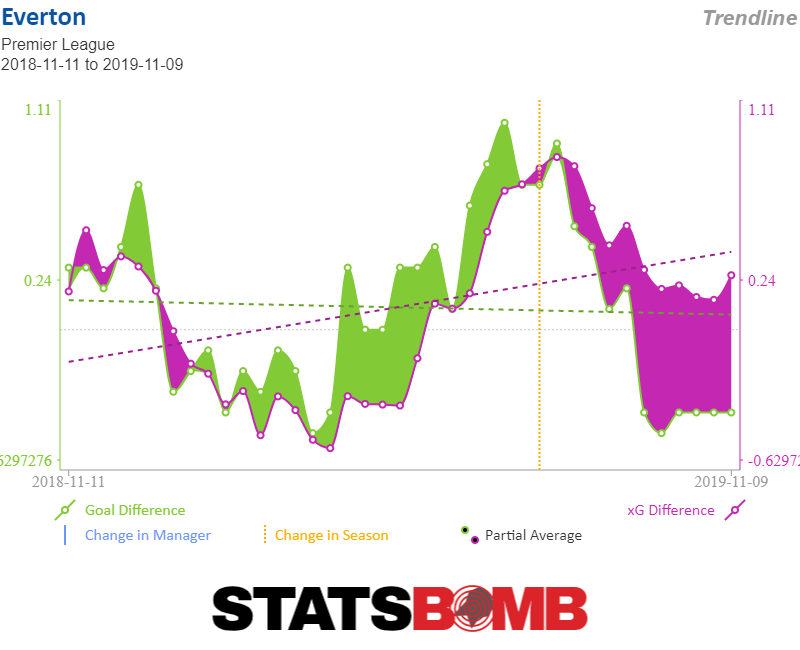 There are, of course, times when xG is misleading, when a fine-grained analysis of tactical choices and personnel decisions will reveal tangible reasons for a team’s actual goals diverging from their expected goals. This doesn’t appear to be one of those times. The team profiles as a fairly typical high pressing aggressive defense. They do most of their defending in the opposition half.
There are, of course, times when xG is misleading, when a fine-grained analysis of tactical choices and personnel decisions will reveal tangible reasons for a team’s actual goals diverging from their expected goals. This doesn’t appear to be one of those times. The team profiles as a fairly typical high pressing aggressive defense. They do most of their defending in the opposition half. 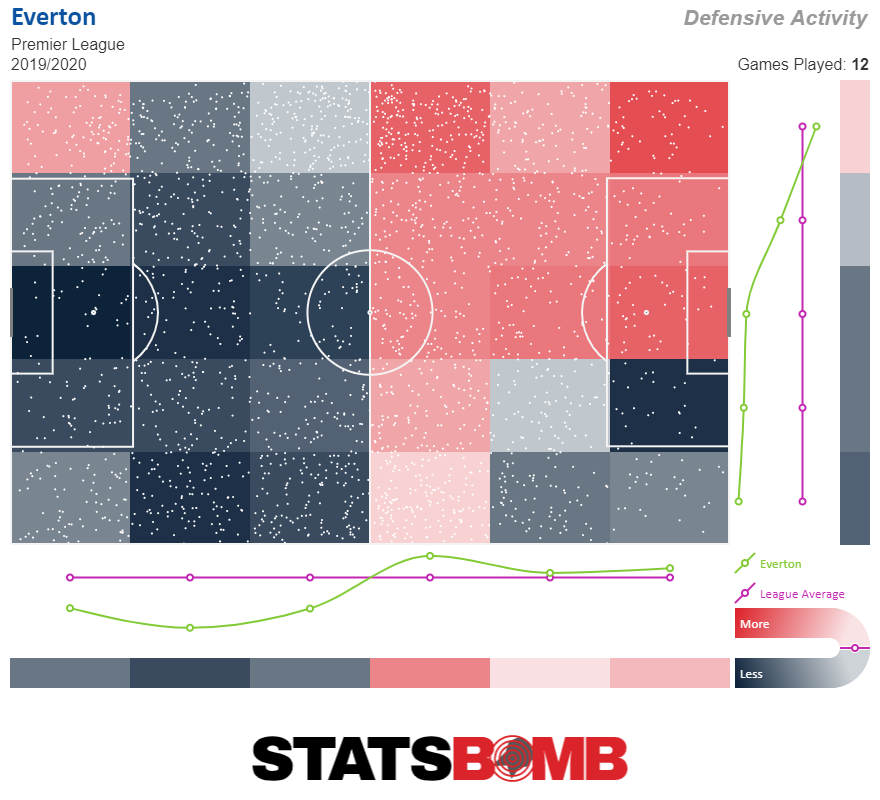 That high press is generally effective, and Everton concede very few shots. Only Manchester City’s 7.42 shots conceded per game ranks below Everton’s 8.42. But, as often happens with aggressive defenses, when the press is broken, Everton’s soft underbelly is exposed. Everton, on average, allow extremely high-quality shots through. Only two teams, Manchester City (again with the aggressive pressing sides) and West Ham, give up higher xG per shot conceded than Everton’s 0.13. Put all those numbers together and it comes out to 13.43 non-penalty xG conceded, but they’ve conceded 17.
That high press is generally effective, and Everton concede very few shots. Only Manchester City’s 7.42 shots conceded per game ranks below Everton’s 8.42. But, as often happens with aggressive defenses, when the press is broken, Everton’s soft underbelly is exposed. Everton, on average, allow extremely high-quality shots through. Only two teams, Manchester City (again with the aggressive pressing sides) and West Ham, give up higher xG per shot conceded than Everton’s 0.13. Put all those numbers together and it comes out to 13.43 non-penalty xG conceded, but they’ve conceded 17. 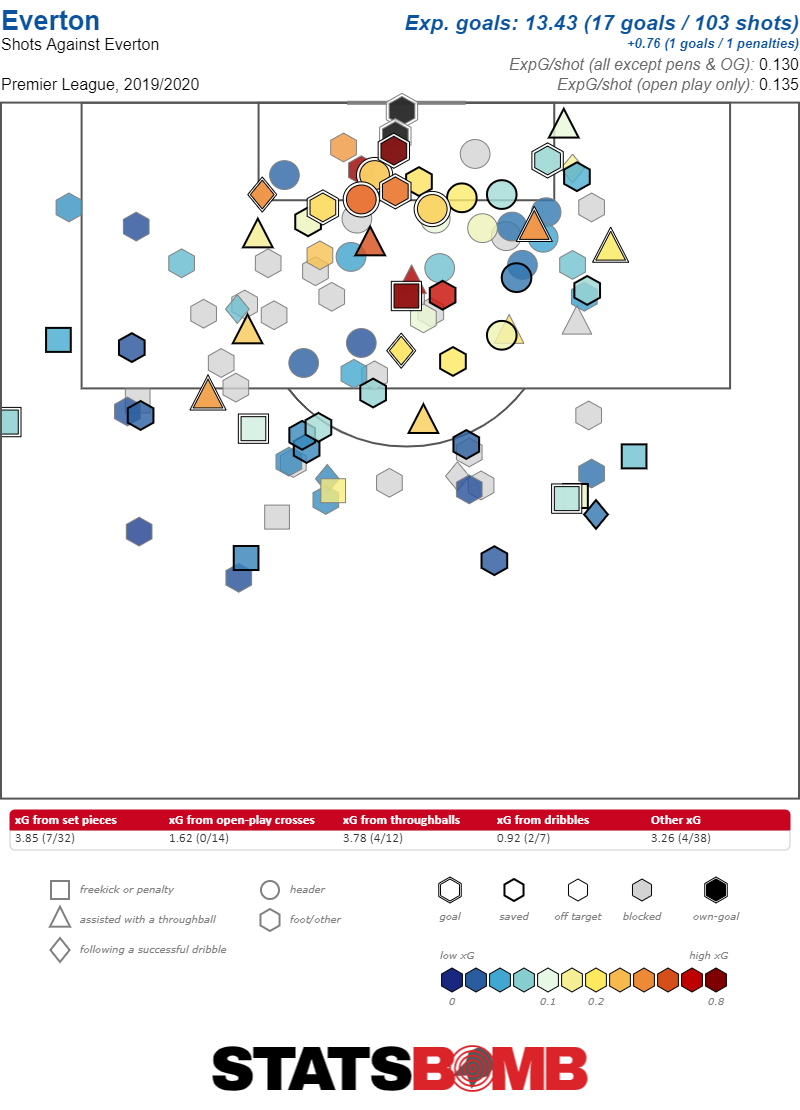 Part of the disconnect is that they’ve conceded two own goals. Own goals are not terribly predictive in and of themselves; even if it might be tempting to suggest they are more likely to happen to a team facing constant pressure, that’s simply not an argument that history supports. So, the fact that Everton have been the victims of two while benefiting from just one is the kind of thing that, again, will work itself out over time. The rest of the difference comes from the fact that Everton’s opponents have put good strikers on the ball. Their opponents have a post-shot xG that’s about a goal higher than their basic xG. Everton keeper Jordan Pickford has had to go flying around his net, where he’s been mostly average at keeping shots out. There’s not a whole lot a team can do when their opponents just keep hitting it sweetly, except, again, trust that the soccer gods are fickle and everybody’s luck turns eventually.
Part of the disconnect is that they’ve conceded two own goals. Own goals are not terribly predictive in and of themselves; even if it might be tempting to suggest they are more likely to happen to a team facing constant pressure, that’s simply not an argument that history supports. So, the fact that Everton have been the victims of two while benefiting from just one is the kind of thing that, again, will work itself out over time. The rest of the difference comes from the fact that Everton’s opponents have put good strikers on the ball. Their opponents have a post-shot xG that’s about a goal higher than their basic xG. Everton keeper Jordan Pickford has had to go flying around his net, where he’s been mostly average at keeping shots out. There’s not a whole lot a team can do when their opponents just keep hitting it sweetly, except, again, trust that the soccer gods are fickle and everybody’s luck turns eventually. 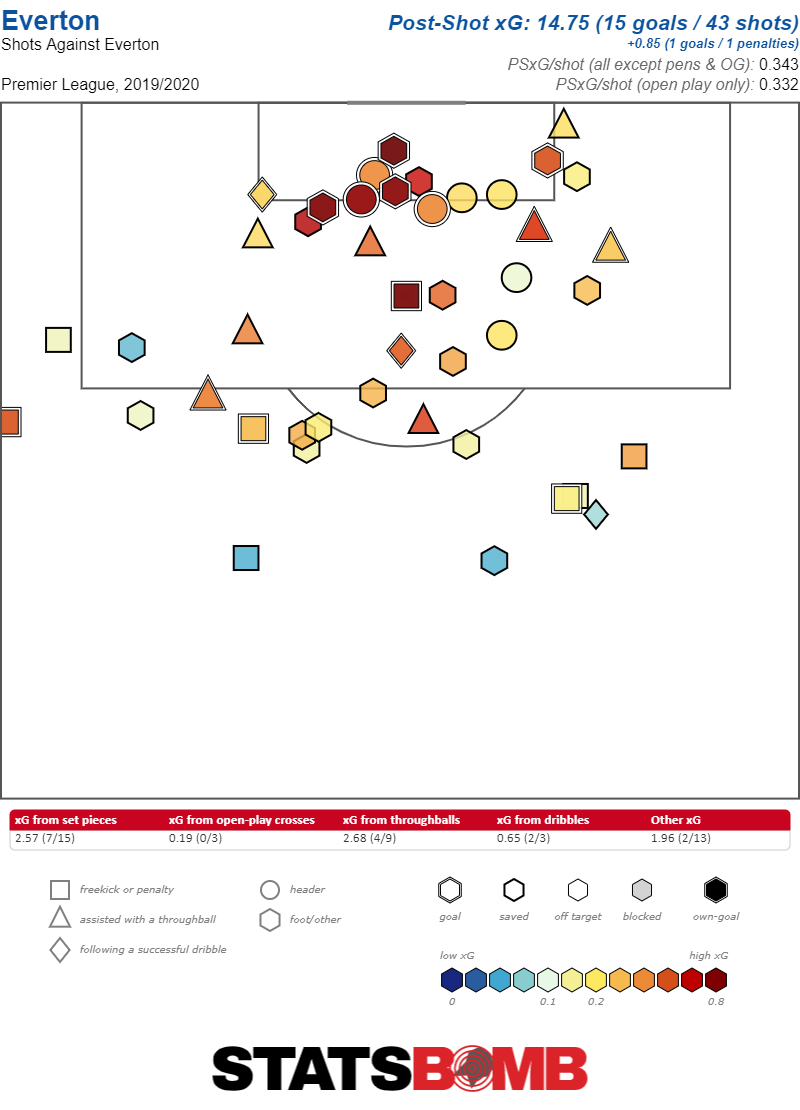 The story is similar on the attacking side of the ball. Everton have been playing well. They’ve created the sixth-most shots in the league, 13.42 per match, at a fairly average xG per shot rate of 0.10, tied for 13th in the Premier League. It’s not the most dynamic way to play, but piling up lots of average shots is a perfectly reasonable way to score goals. The problem is that, again, while the xG is good, 16.07, the actual goals, 13, lag behind. However, as on the defensive side of the ball, a closer examination shows that most of what’s gone wrong is simply that the strikers have run into a number of strong goalkeeper performances. Everton’s post-shot xG is virtually identical to their pre-shot xG, but they’ve only scored 12 goals. That’s as a clear a distillation of keeper performance as you’ll ever see. Everton’s opponents have made a handful of great saves and it’s cost the Toffees points.
The story is similar on the attacking side of the ball. Everton have been playing well. They’ve created the sixth-most shots in the league, 13.42 per match, at a fairly average xG per shot rate of 0.10, tied for 13th in the Premier League. It’s not the most dynamic way to play, but piling up lots of average shots is a perfectly reasonable way to score goals. The problem is that, again, while the xG is good, 16.07, the actual goals, 13, lag behind. However, as on the defensive side of the ball, a closer examination shows that most of what’s gone wrong is simply that the strikers have run into a number of strong goalkeeper performances. Everton’s post-shot xG is virtually identical to their pre-shot xG, but they’ve only scored 12 goals. That’s as a clear a distillation of keeper performance as you’ll ever see. Everton’s opponents have made a handful of great saves and it’s cost the Toffees points. 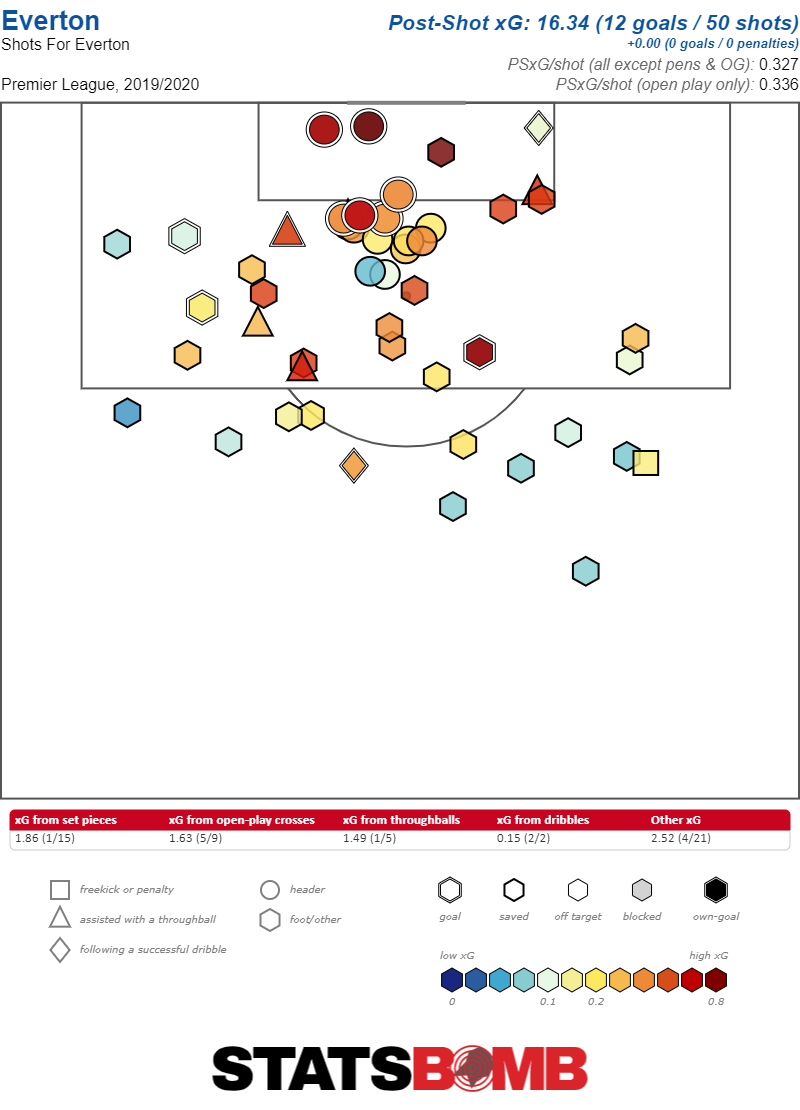 Through 12 games, Everton represent as clear an example of good process and bad results as you’re ever likely to find in the wild. If they keep doing what they’re doing, their results are almost certain to improve. Of course, that’s easier said than done. Playing well but losing is cold comfort, and the league doesn't hand out titles for best process. It is exceedingly difficult to watch your best-laid plans succeed for three months, find yourself nailed to the bottom third of the table, and remain steadfast in your faith that those plans did, in fact, succeed. Everton shouldn’t fire Silva, but they’d be far from the first team to lose faith in a manager after a string of poor results from fine performances. And Silva shouldn’t change the way he sets his team up, but again, better managers than him have reached for solutions to non-existent problems after results didn’t go their way. Up and down the organization, the numbers make it clear that now is the time for both management and the manager to show faith in the project. And that faith is going to be sorely tested, because when the international break ends, Everton get the gift of facing relegation-fodder Norwich City, and then it’s the murderer’s row of the current Premier League top three, with Leicester and Liverpool away followed by Chelsea at Goodison Park. The first 12 games of the season haven’t been an easy time for Everton, but the way forward is clear. As long as they keep playing like this, and their manager is able to keep the performances at the level they’ve been to date, things will improve. And as stern as the tests on the field over the next month will be, the most difficult exam will occur off the pitch. Will Everton be able to keep a steady hand and keep doing the right things, or will bad results ultimately prove too much for a good process to overcome? The answer to that question will define the Toffees' season. Header image courtesy of the Press Association
Through 12 games, Everton represent as clear an example of good process and bad results as you’re ever likely to find in the wild. If they keep doing what they’re doing, their results are almost certain to improve. Of course, that’s easier said than done. Playing well but losing is cold comfort, and the league doesn't hand out titles for best process. It is exceedingly difficult to watch your best-laid plans succeed for three months, find yourself nailed to the bottom third of the table, and remain steadfast in your faith that those plans did, in fact, succeed. Everton shouldn’t fire Silva, but they’d be far from the first team to lose faith in a manager after a string of poor results from fine performances. And Silva shouldn’t change the way he sets his team up, but again, better managers than him have reached for solutions to non-existent problems after results didn’t go their way. Up and down the organization, the numbers make it clear that now is the time for both management and the manager to show faith in the project. And that faith is going to be sorely tested, because when the international break ends, Everton get the gift of facing relegation-fodder Norwich City, and then it’s the murderer’s row of the current Premier League top three, with Leicester and Liverpool away followed by Chelsea at Goodison Park. The first 12 games of the season haven’t been an easy time for Everton, but the way forward is clear. As long as they keep playing like this, and their manager is able to keep the performances at the level they’ve been to date, things will improve. And as stern as the tests on the field over the next month will be, the most difficult exam will occur off the pitch. Will Everton be able to keep a steady hand and keep doing the right things, or will bad results ultimately prove too much for a good process to overcome? The answer to that question will define the Toffees' season. Header image courtesy of the Press Association
The two Gianluigis: Will Donnarumma dominate in goal for the next 20 years like Buffon did for the last 20?
Gianluigi Buffon has dominated in goal for the Italian national team for twenty years. Until he retired from international duties in 2018, there was practically no room for another goalkeeper unless he was injured. But, just as Buffon was approaching the end of his career in the National team, another young goalkeeper with the same name emerged with arrogance: Gianluigi Donnarumma. Donnarumma's precocious talent earned him the role of AC Milan's starting goalkeeper in 2015/16 before he was 17 years old. His debut in the National Team came as a result in 2016 and as soon as Buffon decided to say enough, for Luigi Di Biagio first and Roberto Mancini after there was no doubt about who should be the legendary goalkeeper's heir. Good performances in the 15 games with the Azzurri jersey have cemented his place. In the meantime, however, the decline of Milan, especially during this season and the emergence of other Italian goalkeepers, young and less young, also allow us to question his position. Should we expect another twenty years of domination between the posts from another Gianluigi, or will there be opportunities for other goalkeepers, too?
To answer the question, I used StatsBomb data to examine the performance of the main Italian goalkeepers this season. Alex Meret (22), Napoli
After alternating with David Ospina during the past season, Alex Meret has earned the trust of Carlo Ancelotti, becoming the undisputed owner of Napoli’s goal. Meret, who is two years older than Donnarumma, joined from Udinese last season, for a reported fee of €35 million, after two years on loan at SPAL. He has already been called up to the National Team multiple times (starting in 2016), but he has not yet had the opportunity to make his debut with Italy. Napoli’s season is not going according to plans and things could go sideways anytime, but their goalkeeper is not the one to point your finger at. Although Meret is not having an amazing season, his performances are consistent with expectations. 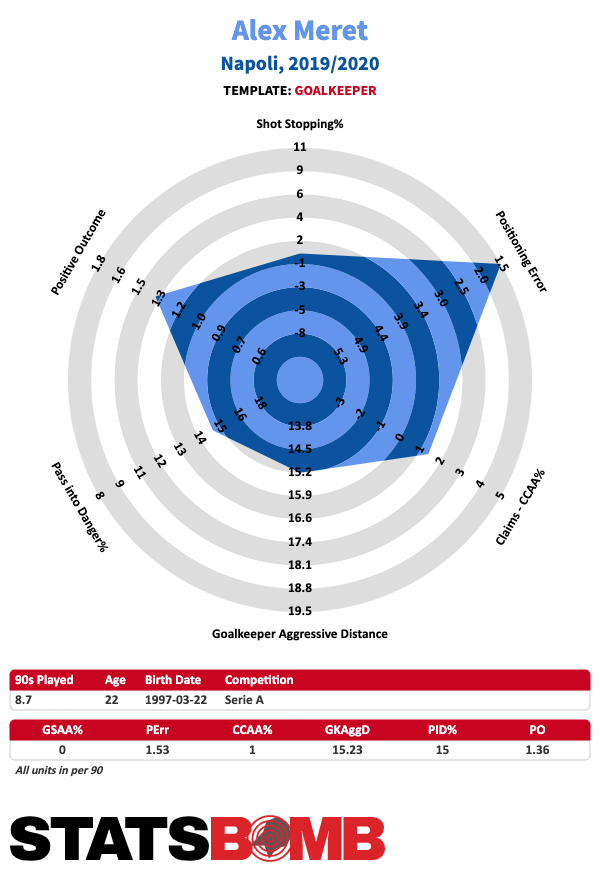 So far, he saved 0.12 goals above average in total (0.01 per 90), a metric obtained by subtracting the number of goals conceded form the total post-shot expected goals of non-penalty shots on target faced, good enough for 14th best goalkeeper in the league among those with at least 600 minutes played. Meret also saved one penalty out of the three he faced, so accounting for that, the total number of goals saved above average increases to 0.80. That's a decent output so far, but far from the highs of last season, when he saved 4.27 goals above average or 0.30 per 90 minutes, penalties excluded. A decline that may also have been due to the increase in the average quality of the shots on target he faced, which rose to 0.294 xG on average (+22.5% compared to 2018/19). StatsBomb collect also Positioning Errors, a metric that measures how far from the optimal position for facing a shot the Goalkeeper is on average. In this regard, Meret has been one of the best in the league during his young Serie A career: his 1.53 PErr is an elite value and good enough for top-6 in Italy. Claims or CCAA%, a stylistic metric that describes how likely the Goalkeeper is to attempt to claim a claimable pass, versus the average Goalkeeper Attempted Claim Rate, tell us Meret is not more aggressive than the average goalkeeper when it comes to claims. Meret is the goalkeeper who plays the fewest long balls in the league (3.78 per 90) and whose pass length is the shortest in the league (29.59) and from his radar, when can also say he is confident when distributing the ball short and will pass to team-mates under pressure as Napoli tend to build up from the back in order to drag opponents out of position and open space to make the play progress. That's an attitude that makes him really suitable for the brand of football that Roberto Mancini established within the national side.
So far, he saved 0.12 goals above average in total (0.01 per 90), a metric obtained by subtracting the number of goals conceded form the total post-shot expected goals of non-penalty shots on target faced, good enough for 14th best goalkeeper in the league among those with at least 600 minutes played. Meret also saved one penalty out of the three he faced, so accounting for that, the total number of goals saved above average increases to 0.80. That's a decent output so far, but far from the highs of last season, when he saved 4.27 goals above average or 0.30 per 90 minutes, penalties excluded. A decline that may also have been due to the increase in the average quality of the shots on target he faced, which rose to 0.294 xG on average (+22.5% compared to 2018/19). StatsBomb collect also Positioning Errors, a metric that measures how far from the optimal position for facing a shot the Goalkeeper is on average. In this regard, Meret has been one of the best in the league during his young Serie A career: his 1.53 PErr is an elite value and good enough for top-6 in Italy. Claims or CCAA%, a stylistic metric that describes how likely the Goalkeeper is to attempt to claim a claimable pass, versus the average Goalkeeper Attempted Claim Rate, tell us Meret is not more aggressive than the average goalkeeper when it comes to claims. Meret is the goalkeeper who plays the fewest long balls in the league (3.78 per 90) and whose pass length is the shortest in the league (29.59) and from his radar, when can also say he is confident when distributing the ball short and will pass to team-mates under pressure as Napoli tend to build up from the back in order to drag opponents out of position and open space to make the play progress. That's an attitude that makes him really suitable for the brand of football that Roberto Mancini established within the national side.
Salvatore Sirigu (32), Torino
Torino’s goalkeeper Salvatore Sirigu, 12 years older than Donnarumma and 9 years younger than Buffon, seems destined to be the second-choice goalkeeper of the National team for the totality of his career. But, Torino's strong 2018-19 season could launch him and put him in serious competition with the goalkeeper of Milan, especially given that a good portion of their surprisingly successful campaign depended on his saves. 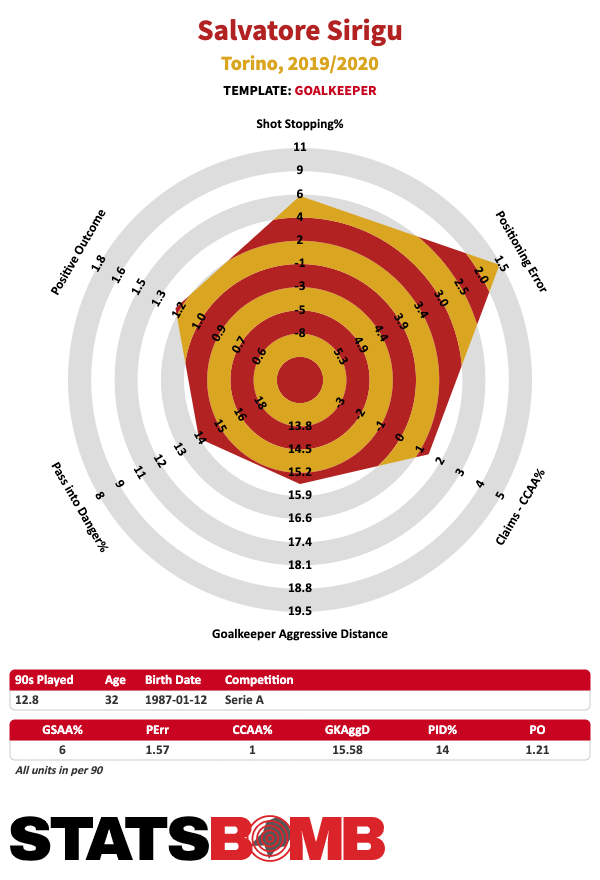 Sirigu conceded 35 non-penalty goals in 2018-19, saving an astonishing 8.68 goals above average (0.24 per 90), the second-best total in the league, topped just by Alessio Cragno (9.93 GSAA), who himself would be under consideration for this list if he was fit. He also saved two out of four penalties, raising the total to almost 10 goals saved above average (9.58). This season his team is doing worse, but the ex-Paris Saint Germain goalie has kept his excellent form averaging an even better 0.32 GSAA per 90 and a save percentage of 79% (3% higher than last season). In terms of positioning errors, he is as good as Meret, but while Napoli’s keeper barely plays the long ball, Sirigu is the keeper who attempts it the most (9.59 per 90), with a success rate of 53% (4th in the league). His distribution style could be a point against him, but Sirigu does have experience playing in a possession-based team while at PSG and he is a proven reliable goalkeeper of a caliber that would be starting for many, if not most, European national teams.
Sirigu conceded 35 non-penalty goals in 2018-19, saving an astonishing 8.68 goals above average (0.24 per 90), the second-best total in the league, topped just by Alessio Cragno (9.93 GSAA), who himself would be under consideration for this list if he was fit. He also saved two out of four penalties, raising the total to almost 10 goals saved above average (9.58). This season his team is doing worse, but the ex-Paris Saint Germain goalie has kept his excellent form averaging an even better 0.32 GSAA per 90 and a save percentage of 79% (3% higher than last season). In terms of positioning errors, he is as good as Meret, but while Napoli’s keeper barely plays the long ball, Sirigu is the keeper who attempts it the most (9.59 per 90), with a success rate of 53% (4th in the league). His distribution style could be a point against him, but Sirigu does have experience playing in a possession-based team while at PSG and he is a proven reliable goalkeeper of a caliber that would be starting for many, if not most, European national teams.
Pierluigi Gollini (24), Atalanta
This is the third full season at Atalanta for Pierluigi Gollini, but the first in which he is the undisputed owner of the first choice mantle in goal. Gian Piero Gasperini and the board of Atalanta decided to hand him the job this summer, and they certainly have no reason to regret that decision. 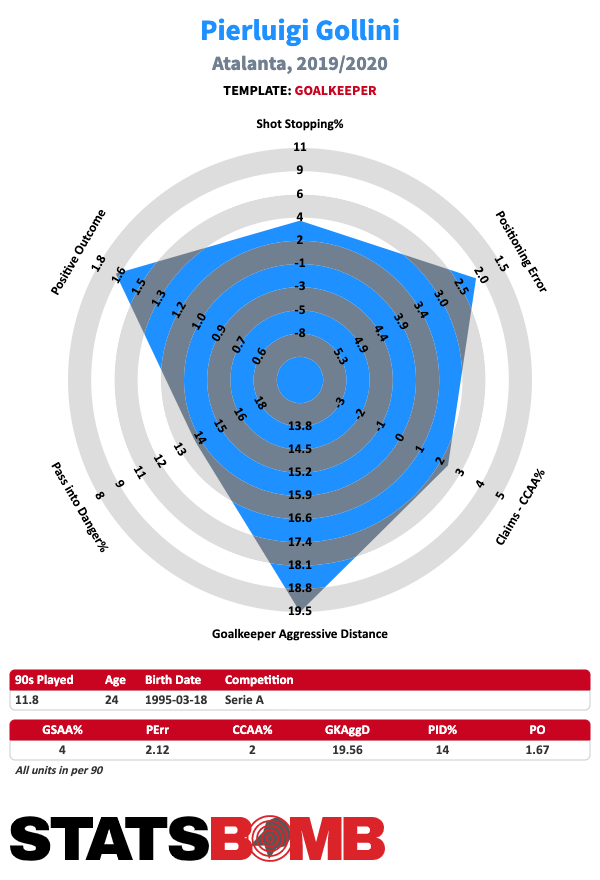 Indeed, Etrit Berisha, who Gollini split time with last season, performed worse than the average keeper last season, while Gollini has rewarded the faith shown in him this year by saving 1.36 goals above average since being handed the full time job. He has faced fewer shots on target than Meret and Sirigu, but the average xG per shot of the ones he has faced is way higher at 0.36. That explains why despite his 68% save percentage being the lowest in the league, he's on this list. Given the shots he's faced, an average keeper would only be making saves 64% of the time.
Indeed, Etrit Berisha, who Gollini split time with last season, performed worse than the average keeper last season, while Gollini has rewarded the faith shown in him this year by saving 1.36 goals above average since being handed the full time job. He has faced fewer shots on target than Meret and Sirigu, but the average xG per shot of the ones he has faced is way higher at 0.36. That explains why despite his 68% save percentage being the lowest in the league, he's on this list. Given the shots he's faced, an average keeper would only be making saves 64% of the time. 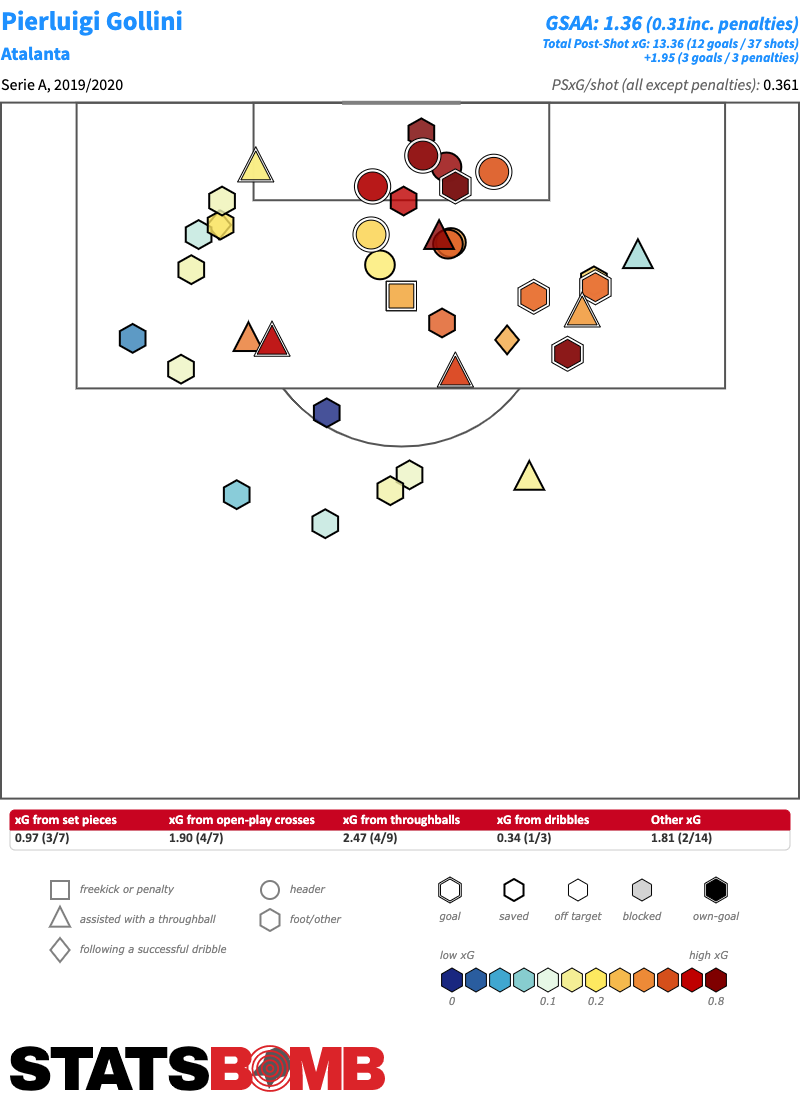 In comparison to the other two keepers examined, he is more aggressive on claims, but still ranks just 10th in the league in CCAA%. What really stands out is his goalkeeping aggressive distance, which measures how far from the goal the keeper is coming to perform defensive actions. Only Donnarumma performs his actions further from goal than Gollini, emphasizing that not only is Gollini playing in a system that encourages the keeper to be aggressive, but that he is not scared of leaving the posts to perform sweeper keeper actions. Another number related to his modern interpretation of the role is his passing percentage under pressure, 71%, the highest among Italian goalkeepers in the league this season. For comparison, Meret completes just 52% of his pressured passes. Gollini isn't simply focused on short distribution either as he attempts 6.13 long balls, while his average pass length is 39.49. Gollini is currently an outsider for the national team job, as he still has yet to debut with the “Maglia Azzurra”. He is probably ranked fourth in Mancini’s preferences, but due to his steady improvement and the modern traits of his style could be a serious candidate to feature the future international competitions.
In comparison to the other two keepers examined, he is more aggressive on claims, but still ranks just 10th in the league in CCAA%. What really stands out is his goalkeeping aggressive distance, which measures how far from the goal the keeper is coming to perform defensive actions. Only Donnarumma performs his actions further from goal than Gollini, emphasizing that not only is Gollini playing in a system that encourages the keeper to be aggressive, but that he is not scared of leaving the posts to perform sweeper keeper actions. Another number related to his modern interpretation of the role is his passing percentage under pressure, 71%, the highest among Italian goalkeepers in the league this season. For comparison, Meret completes just 52% of his pressured passes. Gollini isn't simply focused on short distribution either as he attempts 6.13 long balls, while his average pass length is 39.49. Gollini is currently an outsider for the national team job, as he still has yet to debut with the “Maglia Azzurra”. He is probably ranked fourth in Mancini’s preferences, but due to his steady improvement and the modern traits of his style could be a serious candidate to feature the future international competitions.
Gianluigi Donnarumma (20), AC Milan
Last but not least is the goalkeeper who is currently the starter of the Italian National Team, Gianluigi Donnarumma. It is impressive to think that at just 20 years old he already has 185 appearances with AC Milan, and has been their top choice in goals since 2015-16. 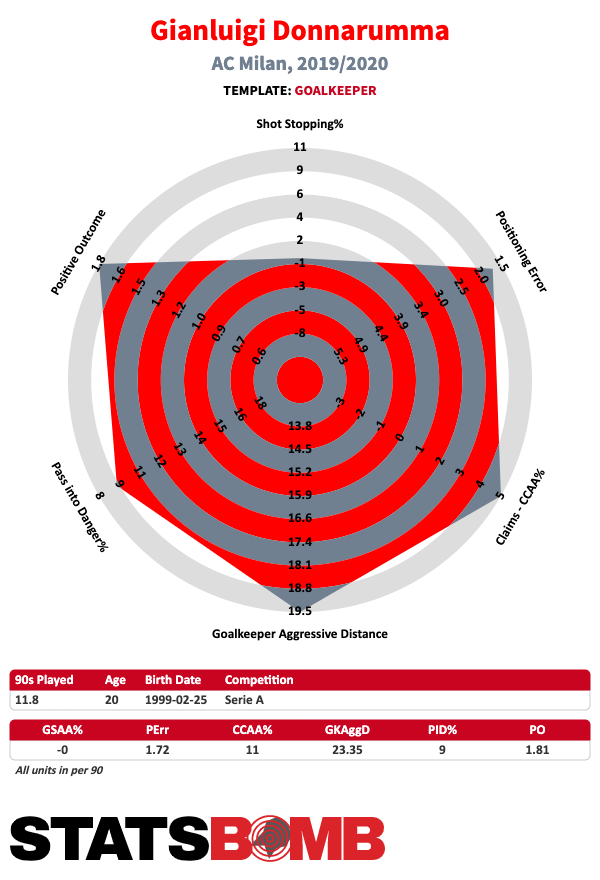 What stands out immediately from his radar is how Donnarumma has performed so far this season exactly like the average goalkeeper: he conceded 14 non-penalty goals from a post-shot xG of 13.96. However, he's also added two penalty saves, which increases the total to 0.93 GSAA, penalties included. Last season he saved 5.07 GSAA, and his average of 0.16 per 90 was the 5th best in the league among keepers with 1800 minutes played. In a season where everything is going wrong for AC Milan, Donnarumma remains one of the few bright spots. While it's true shot stopping is arguably the most important quality of a goalkeeper, Donnarumma has been elite in every other goalkeeper metric. His impressive physical presence and athleticism means he can show impressive confidence when it comes to claiming the ball: he has a CCAA of 11% the highest value among goalkeepers in the top-5 European leagues. He has also developed sweeper-keeper’s attitudes with just Ederson Moraes and Roman Bürki performing defensive action further from their goal than him in all Europe. He plays 6.87 long balls per 90, with an average pass length of 36.25., but he plays more open play passes than Gollini and Meret on average (19.41, 18.40 and 17.45, respectively). Despite the volume, his passing choices are often safe as he passes the ball into danger less than one time out of ten times. Concerning his passing, it is interesting to highlight how his positive outcome score is the highest of the goalkeepers analyzed meaning that the possessions he is involved in tend to be valuable for the team. By definition, a positive outcome is recorded when any of the following events happening within 20 seconds of a goalkeeper's pass (for that GK's team): free kicks earned in the attacking half, corner kicks earned, shots attempted, and penalties earned. Probably this won't be his career season in terms of shot stopping, but at 20, Donnarumma is the best and most complete goalkeeper in Serie A along with Wojciech Szczęsny. That's why he's the first choice of the National team, ahead of two excellent young goalkeepers like Meret and Gollini, both older than him but with less experience in terms of games played. The only one who could challenge his status is Sirigu, who has more caps than him and is clearly the best shot-stopper of the league over the last year, but for the next twenty years, the goalkeeper of the national team could continue to be named Gianluigi. Header image courtesy of the Press Association
What stands out immediately from his radar is how Donnarumma has performed so far this season exactly like the average goalkeeper: he conceded 14 non-penalty goals from a post-shot xG of 13.96. However, he's also added two penalty saves, which increases the total to 0.93 GSAA, penalties included. Last season he saved 5.07 GSAA, and his average of 0.16 per 90 was the 5th best in the league among keepers with 1800 minutes played. In a season where everything is going wrong for AC Milan, Donnarumma remains one of the few bright spots. While it's true shot stopping is arguably the most important quality of a goalkeeper, Donnarumma has been elite in every other goalkeeper metric. His impressive physical presence and athleticism means he can show impressive confidence when it comes to claiming the ball: he has a CCAA of 11% the highest value among goalkeepers in the top-5 European leagues. He has also developed sweeper-keeper’s attitudes with just Ederson Moraes and Roman Bürki performing defensive action further from their goal than him in all Europe. He plays 6.87 long balls per 90, with an average pass length of 36.25., but he plays more open play passes than Gollini and Meret on average (19.41, 18.40 and 17.45, respectively). Despite the volume, his passing choices are often safe as he passes the ball into danger less than one time out of ten times. Concerning his passing, it is interesting to highlight how his positive outcome score is the highest of the goalkeepers analyzed meaning that the possessions he is involved in tend to be valuable for the team. By definition, a positive outcome is recorded when any of the following events happening within 20 seconds of a goalkeeper's pass (for that GK's team): free kicks earned in the attacking half, corner kicks earned, shots attempted, and penalties earned. Probably this won't be his career season in terms of shot stopping, but at 20, Donnarumma is the best and most complete goalkeeper in Serie A along with Wojciech Szczęsny. That's why he's the first choice of the National team, ahead of two excellent young goalkeepers like Meret and Gollini, both older than him but with less experience in terms of games played. The only one who could challenge his status is Sirigu, who has more caps than him and is clearly the best shot-stopper of the league over the last year, but for the next twenty years, the goalkeeper of the national team could continue to be named Gianluigi. Header image courtesy of the Press Association
One fantastic result against Bayern is a reminder that Adi Hütter is good for Eintracht
It's an apt time to praise Eintracht Frankfurt, days after die Adler trounced the mighty Bayern, ending a 16-game winless streak and former SGE coach Niko Kovač’s tenure in one fell, 5-1, swoop.
In all honesty, we should have known better, or at least I should have.
Regretfully, I picked SGE to fight against relegation last season — on the back of losing to 4th-tier SSV Ulm in the first round of the cup and the 5-0 evisceration by Bayern in the Supercup. I shared others' concerns about new coach Adi Hütter, who wanted to play the RB school’s 4-4-2 without wide players, and only later switched of 3-5-2 when he realized he would have to reinvent the careers of Danny da Costa and Filip Kostić. So, this prediction was perhaps not as crazy as the results suggested — but at least I didn't say it aloud during my first-ever analyst appearance on TV or anything...
My prediction was doubly painful having followed and covered Eintracht’s long-awaited rise from being “the moody diva” of the Bundesliga to European relevance. Under the stewardship of Peter Fischer, who frequently speaks out against and bans AfD voters from being Eintracht members plus buys fans beer at matches, Eintracht have reinvigorated their football club into a passionate, multicultural project that Frankfurters can be proud of.
On the footballing side, board member Fredi Bobic’s wheeler-dealer attitude, aided by a smart scouting network coordinated by chief scout Ben Manga, has rescued many wayward talents from big clubs in need of playing time (Ante Rebić, Marius Wolf, Omar Mascarell, Jesús Vallejo, Evan N'Dicka) and scouted young gems from lesser-known leagues (Luka Jović, Mijat Gaćinović, Sébastien Haller, Daichi Kamada). They also turned veteran cast-offs like Kevin-Prince Boateng, Sebastian Rode, Gelson Fernandes and Jonathan de Guzmán into competitors.
The Buffalo Herd has become the Portuguese Pack
Despite their success last season, few (including myself once again) thought that after profiting 100 million Euros from the Jović and Haller departures and losing Rebić, Eintracht would somehow emerge as an even better side! But that seems to be exactly what happened, as the combined 10 million spent on Porto’s Gonçalo Paciência (who put up some good numbers off the bench last season), and Bas Dost of Sporting, as well as swapping Ante Rebić for AC Milan's André Silva, has led to, if not an actual increase in production, certainly no drop-off.
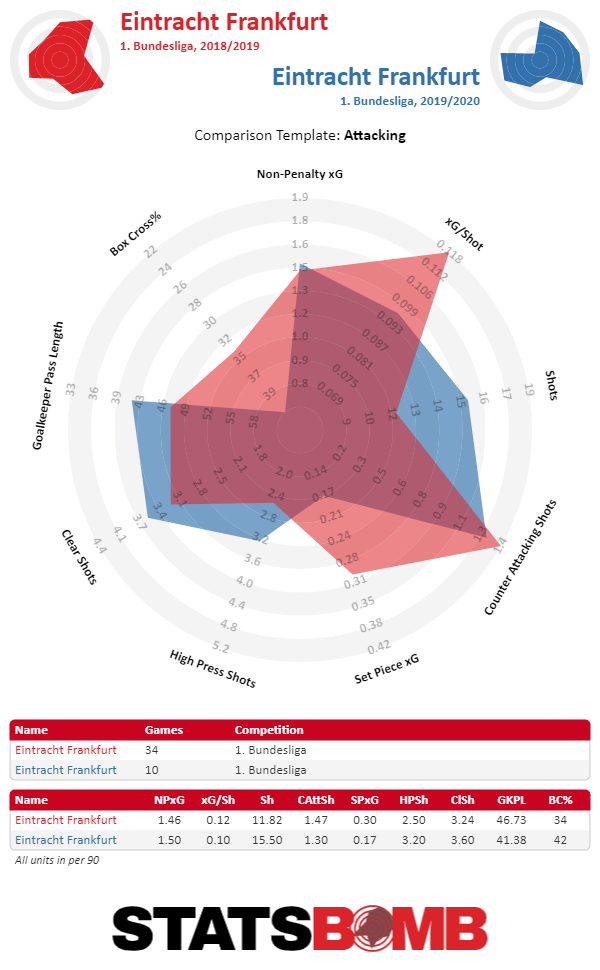
Frankfurt have accumulated 1.50 non-penalty expected goals per match and conceded 1.31 xG against vs 1.46 and 1.43 numbers last season. So, while they are once again on 17 points from ten games this season, they have an improved xG difference of 0.19, up from 0.03 over the course of last year. The Eagles have already faced the top five sides by xG difference.
With their next two opponents, Freiburg and Wolfsburg, coming back down to Earth, followed by three against bottom-dwellers Mainz, Cologne and Paderborn, don’t be surprised if Paciência and Co. are in the Champions League spots in January. On an individual level, last season’s 41 goals by Jović-Haller-Rebić (the "buffalo herd," as they were affectionately known) is the same pace that Paciência-Dost-Silva are on, with 12 in 10 games.
The other remarkable thing is that with 1.47 non-penalty xG per 90 minutes, the Portuguese Pack is bringing a better return than the 1.3 of Jović and his partners. Paciência, in particular, has really come into his own. He's not only a goal scorer but an increasingly well-rounded striker, contributing to all facets of Frankfurt's game.
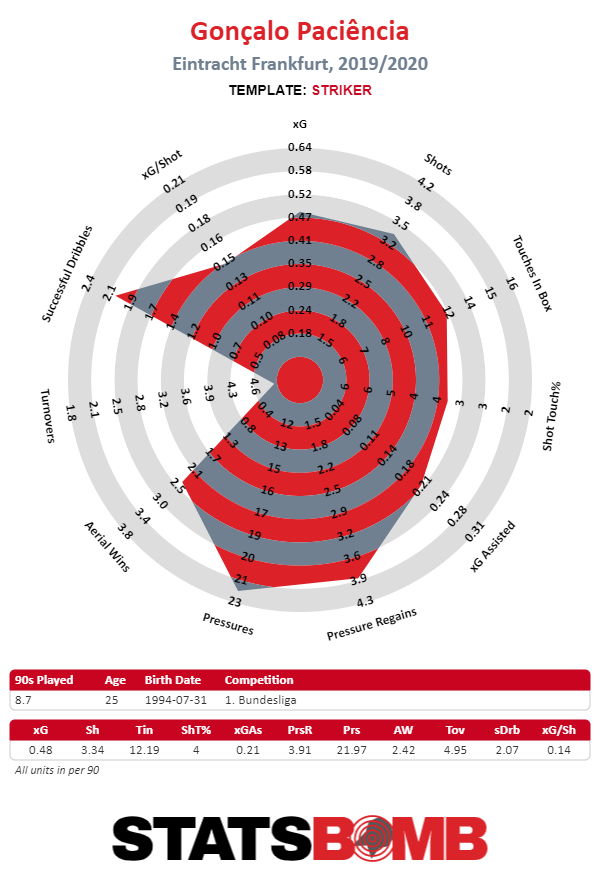
Crossing their way forward
Eintracht's improvement is impressive. Throughout his time in Austria and Switzerland, Hütter’s teams shunned possession and instead relied on vertical ball progression and counterpressing to create attacks. Unlike last season, Frankfurt almost never play three strikers at the same time (though it’s easy to forget that Hütter didn't install Rebić behind Haller and Jović until early November). Instead, behind the front two of Paciência and either Dost or Silva, Frankfurt play the creative Daichi Kamada, who remains scoreless despite averaging almost 0.3 xG per 90.
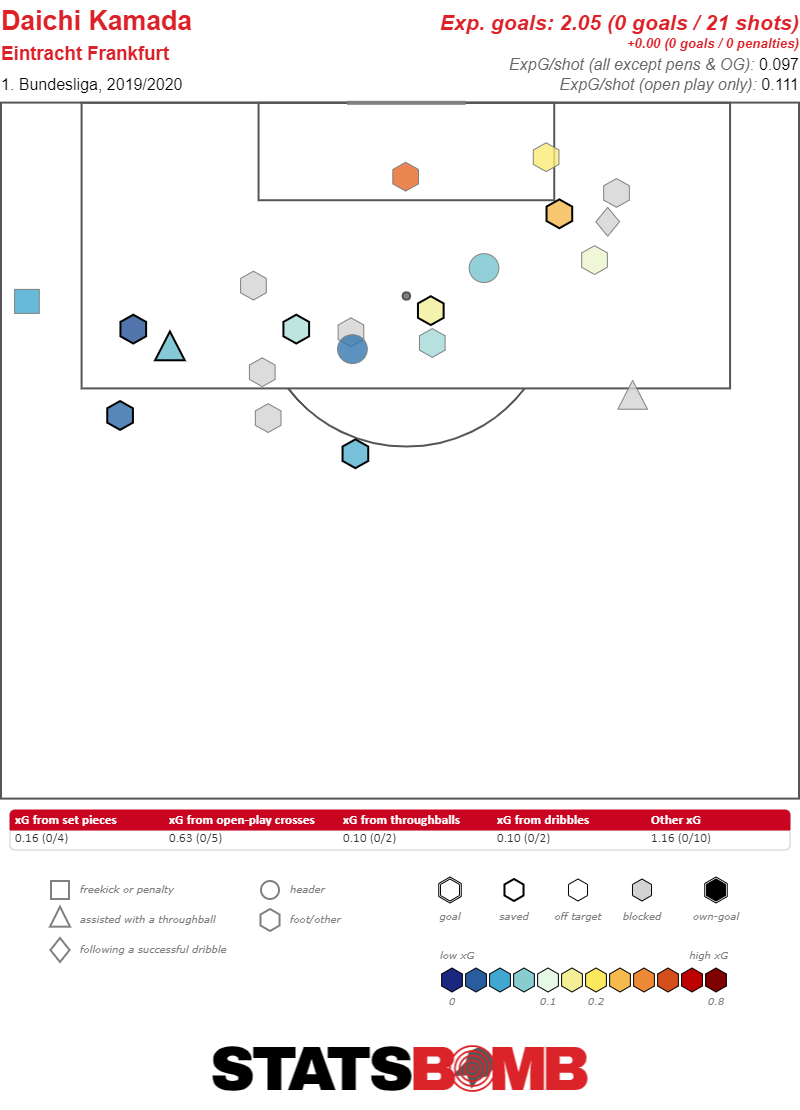
The 23-year-old, signed for 1.6 million from the J-Leauge's Sagan Tosu, scored 12 goals while on loan with Sint-Truiden in Belgium last year, is a Hütter favorite, especially after tearing up the preseason. He flashes on tape for his ability to create space and chances for himself, and though Kamada has to improve his finishing and should consider better shot selection, it seems like Eintracht got themselves another potentially useful creator.
Although he does not have the defensive pressing skills of Rebić, Jović lacked this as well, so perhaps it all evens out.
And despite losing Jović and Haller, they once again are the most cross-reliant team in the Bundesliga.
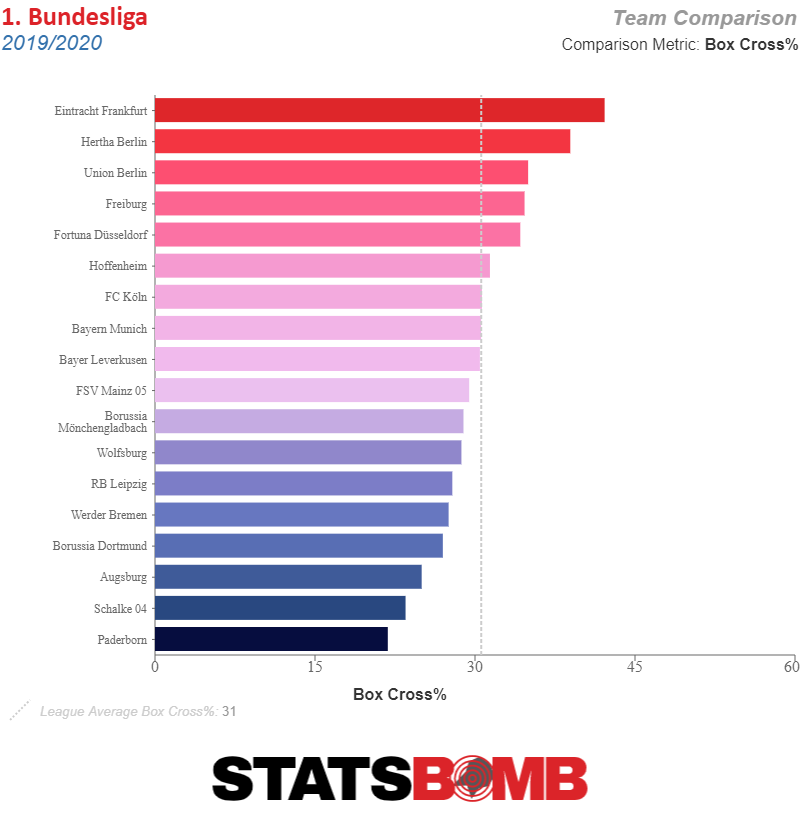
Bas Dost, despite his somewhat limited Bundesliga minutes, remains an absolute monster in the air. His 8.48 aerial wins per 90 are 1.5 more than any other attacker who's played over 300 minutes, and his 66% win percentage on aerial duels also leads all strikers in the German first division. Dost, especially if he plays more regularly, should be an apt replacement for Haller, the most prolific attacking aerial battler in last year's Bundesliga in that regard.
The challenge of crossing, of course, is that it's inherently inefficient and lots of balls into the box will amount to nothing. There's no greater example of this challenge than Filip Kostić. Hütter has converted the Serbian from a left winger into the league’s preeminent attacking wing back. The 27-year-old is an absolute crossing machine, but as you can see from all that yellow, most crossing machines, even the best ones, misfire a lot.
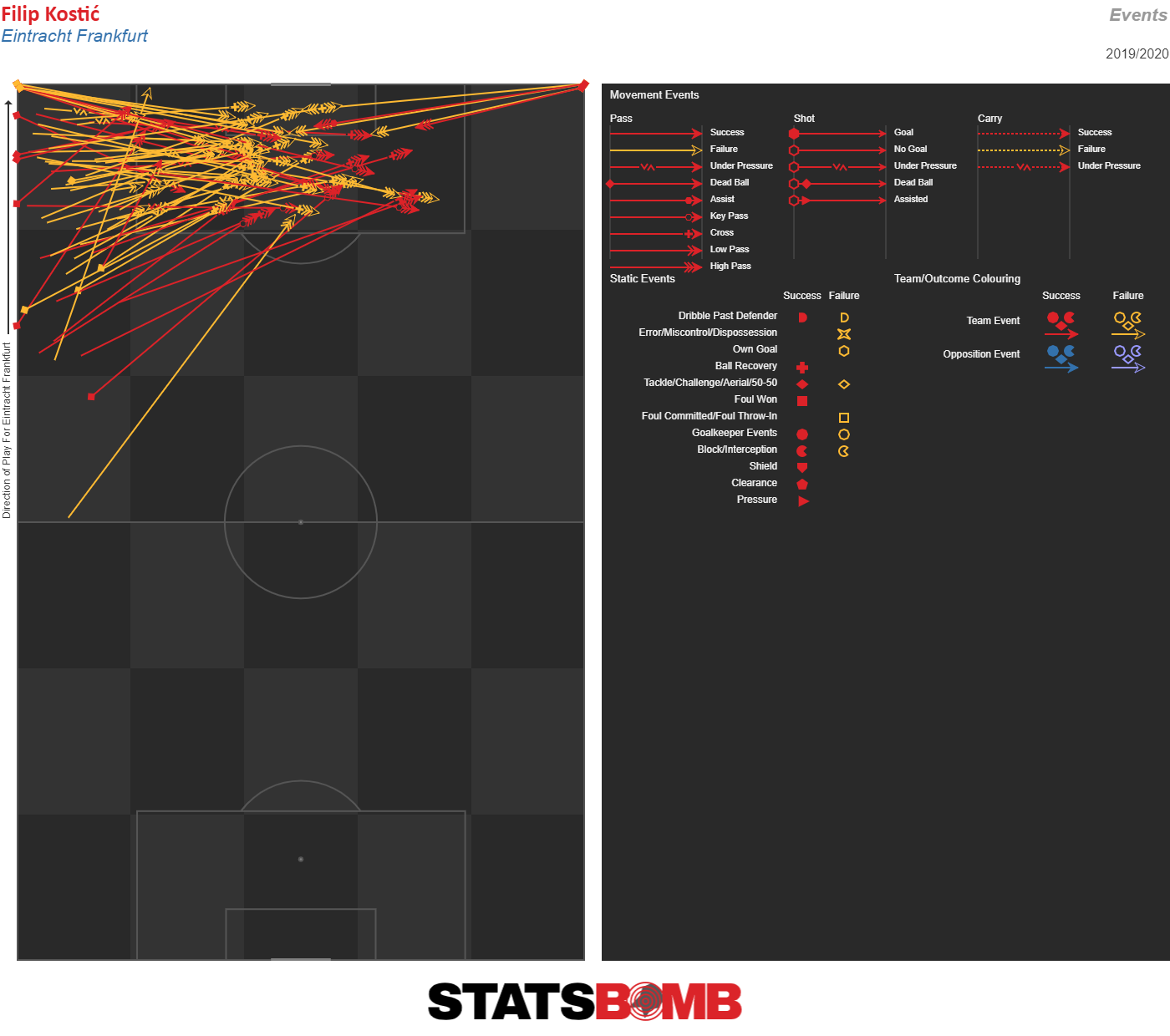
Never one to tire out, Kostić is also putting up a career-high 3.6 shots per 90, breaking an 0 for 27 start with a tap-in after a deflection off David Alaba in the 5-1 rout over Bayern. Congrats on upgrading your xG per shot to 0.07, Filip.
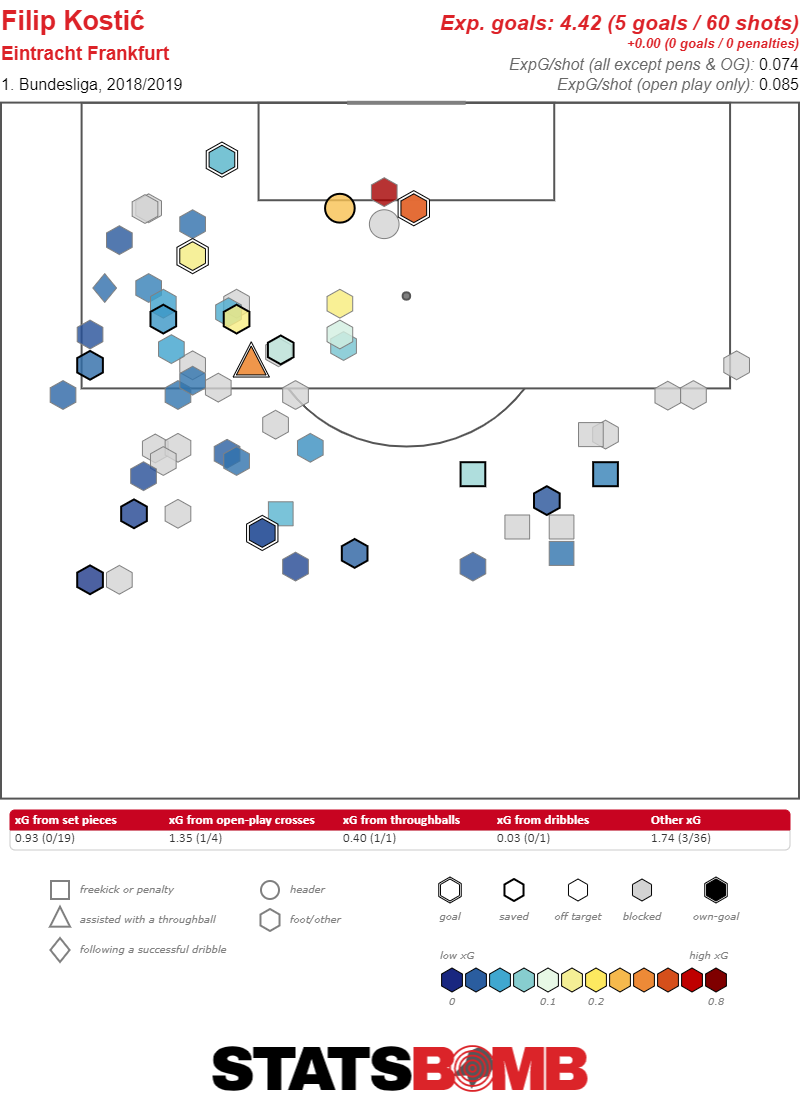
Aggression and Depth
While crosses may not be efficient, pile enough of them on top of each other and a team can generate a pretty effective attack. They also allow a side to have the spacing it needs to initiate an aggressive press on the defensive side of the ball. Hütter has dialed up Eintracht's already above-average pressing. Their passes allowed per defensive action is down from 10.58 to 9.04 and Kostić’s left side seems even more aggressive this season. The average distance from their own goal to where they perform a defensive action has also increased, jumping from 43.96 to a league-best 47.71 this season.
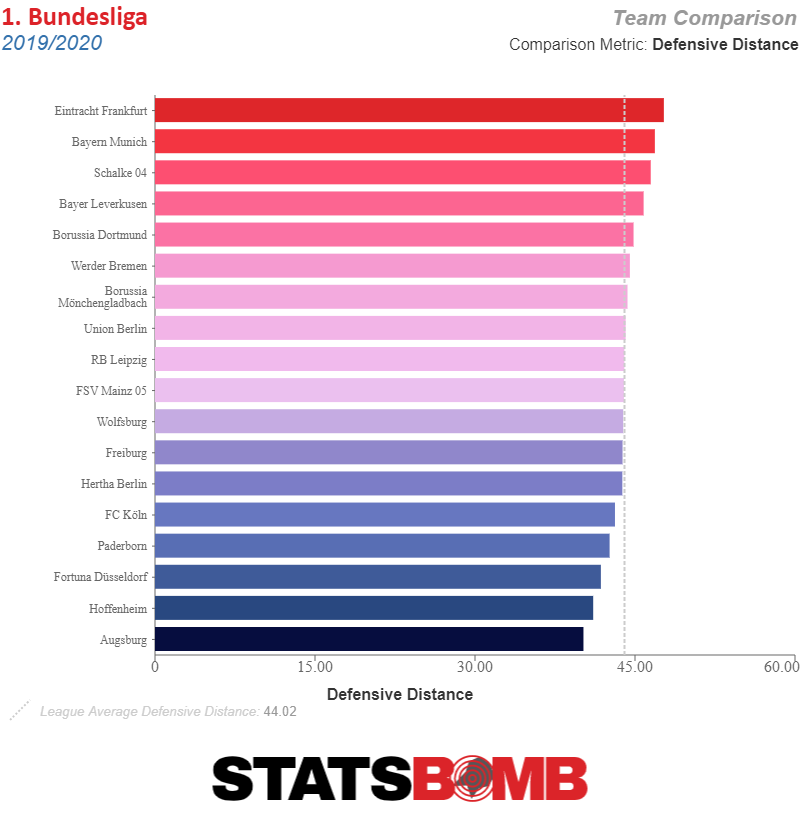
Given the side's depth, Hütter can ramp up his already aggressive system. Last season, Frankfurt began showing signs of setting up in an intriguing three center back format.
Instead of playing three narrow defenders and urging the wing backs to come in deep to receive the ball (they only really do this when defending in a deep block), Hütter used Kostić and da Costa up as wingers last season. What's most significant is how they set up centrally and wide. Their defensive midfielders drop deep to aid ball circulation (in a five-minute spell in the first half against Bayern, all three — Djibril Sow, Sebastian Rode and Gelson Fernandes — did this), create numerical superiority and secure the middle against potential counterattacks.
This allows their wide center backs to press high near the opponent's box. In addition, they are instrumental in their ball progression via long diagonal balls to the central strikers dropping between the defense and midfield. The importance of diagonal balls, as RB Leipzig manager Julian Nagelsmann often likes to say, is that they are much harder to intercept, and the better angle gives an easier chance of completion.
The central center back is also tasked with dribbling up the pitch when given the opportunity. Last season that onus fell on 35-year-old Makoto Hasebe, who played like a modern-day libero and was considered by kicker to be one of the top CBs in the fall season. As his age and injuries have caught up to him, he’s made defensive mistakes (conceding a needless 90th-minute penalty vs. Bremen, for one), allowing Martin Hinteregger to move inside.
The 27-year-old Austrian has always been one of the more colorful Bundesliga characters:
-
- While still an RB Salzburg player, lashed out against another Red Bull club, Leipzig, thus forcing a move to Augsburg.
- He hanged his smartphone to a flip phone after he got fed up with Augsburg coach Manuel Baum sending him and his other players tactical videos on Whatsapp
- During an interview, he famously “couldn’t say anything positive about Baum.”
- Shortly after, he asked to be released in a drunken training camp video
- He was dismissed from the Austrian national team after staying out until 7am celebrating his 27th birthday during the Euro qualifiers
- And he ecome a folk hero and the star of the legendary “Hinti Army” video Yes, it’s a joke poking fun at Status Quo’s 1986 hit.)
On the other hand, Hinteregger can carry the ball out of defense like this:
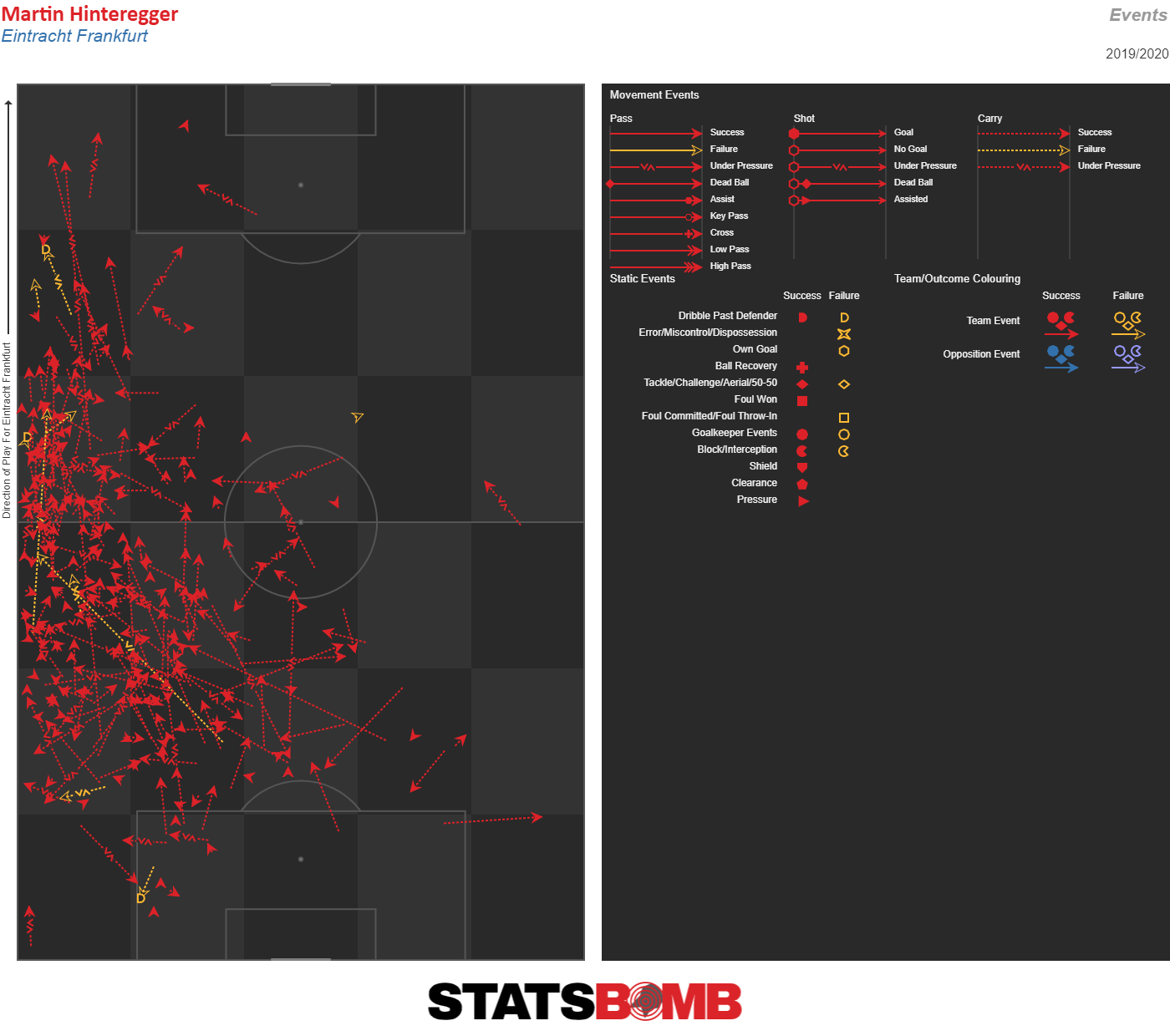
Hinteregger, who has already scored three goals this year, is among the best Bundesliga defenders. Due to the risks Frankfurt take with their aggression and high counterpressing, they can get caught in the extreme three attackers against three wide center backs defensive system. This might result in slightly more clear shots and higher per match xG conceded, but so far the xG remains low enough, and the team's actual goals conceded remains in line with expectations.
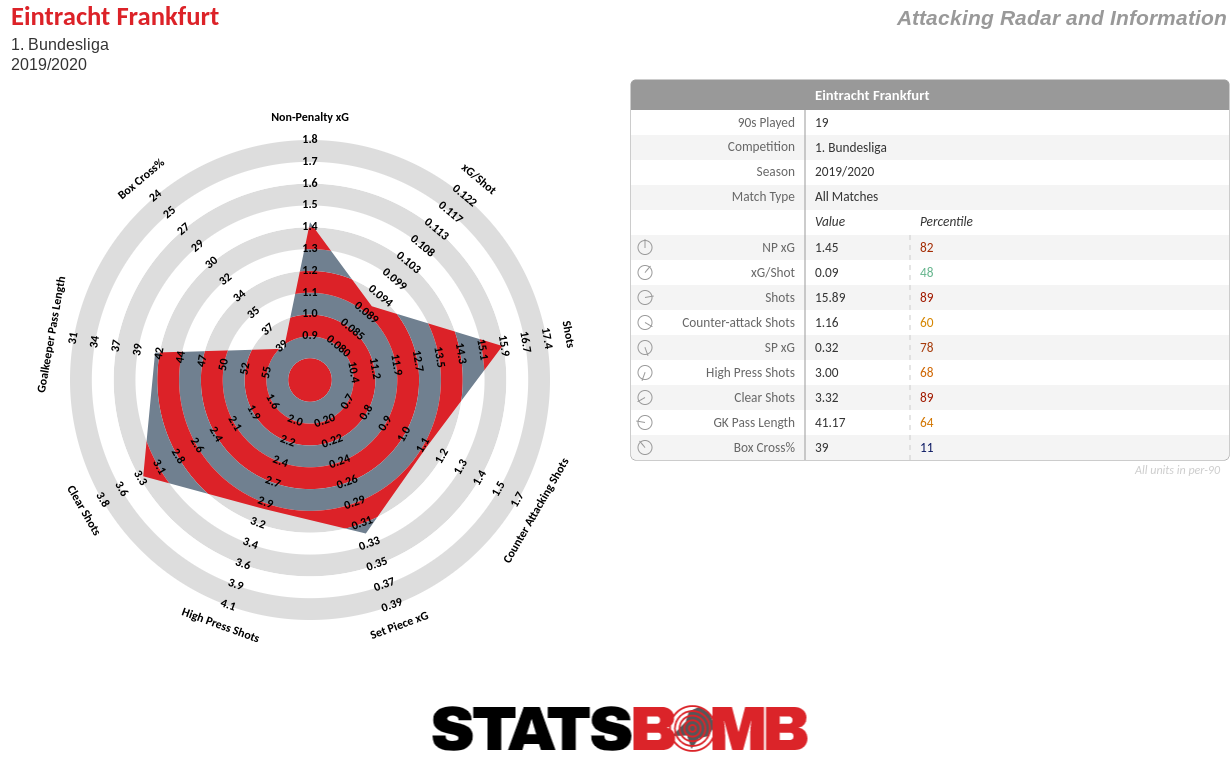
Put these numbers together and it's obvious Frankfurt are an extremely well-managed side. Adi Hütter is now averaging 1.8 points in 71 matches, on a contract that runs until 2021. Though there's been no news out of Frankfurt regarding his future, if Niko Kovač's career and the last they years of Eintracht’s excellent operation is any indication, they might not be able to hold on to him for much longer. Of course, they’re probably just gonna pull another great coach out of that scouting folder….
Where art thou German centre backs?
Football is fast, football is fleeting. The current German footballing landscape is a prime example of that. Die Mannschaft won the World Cup in 2014 with a starting line-up that featured four centre backs. And now . . . now Joachim Löw’s national squad is running out of options at the heart of defence. The (forced) departure of the aging Jérôme Boateng and Mats Hummels from the German national team, this was supposed to herald the start of a new era. During a horrid World Cup in 2018, counterattacks by Mexico, Sweden, and South Korea embarrassed Germany’s back line more than a few times. This partly down to the fact that Boateng and Hummels had lost a step, speed-wise, but the risky, possession-oriented team structure was as much the culprit for creating vulnerability in transition. The result was an attack that couldn’t outscore the mistakes of their shoddy defence enough to even make it out of the group phase. So Löw decided to thoroughly shake things up. Former mainstays like Hummels, Boateng, Thomas Müller and Sami Khedira were no longer needed. Löw also shifted to a modern 3-4-2-1 as their primary formation. But waving goodbye to the former best centre back pairing in the world, whilst simultaneously shifting to a formation that requires not two, but three central defenders, has been tough for Die Mannschaft. Especially now that the only centre back who wasn’t surrounded by any form of doubt, Bayern München’s Niklas Süle, has been ruled out for the upcoming European Championship with a worrisome knee injury. Add to that that their second-most trustworthy central defender, Chelsea’s Antonio Rüdiger, has played 45 competitive minutes this season after he picked up a pelvis injury shortly after recovering from knee surgery. So yeah, not great. To complete this holy mess, Emre Can, the Juventus midfielder who Löw frequently plays in the back three, got sent off in the last qualification match against Estonia (an 0-3 victory) after just 14 minutes of play, so he’ll miss some valuable in-game practice time in the upcoming match against Belarus. It also doesn't help that Can rarely starts under Juventus manager Maurizio Sarri. Where does Germany go from here? Keep in mind that (A) Löw still isn’t in the business of calling players back who he deemed no longer necessary in the past — which rules out not only the return of Hummels, but also makes bring back the Bender Brothers of Bayer Leverkusen an unlikely scenario — and (B) the national team manager is likely to stick with the current 3-4-2-1 formation, because of the positive effects it has on the production of attacking stars Serge Gnabry, Marco Reus and (the truly on-fire) Timo Werner. At the very minimum, they’ll need five players who can play as a centre back on their roster. Pencilling in Rüdiger seems a bit optimistic, judging by the somewhat worrisome reports coming from Chelsea in regards to his recovery. Besides converted centre back Can, Löw has called up four central defenders for the upcoming two qualifiers. Let’s take a look at those four first, then discuss the other candidates hiding in plain sight in the Bundesliga.
Current call-ups
Matthias Ginter (Borussia Mönchengladbach) Borussia Mönchengladbach sit atop the league table after ten matchdays, and are fully back in the mix in their Europa League group after edging out AS Roma in stoppage time on Thursday (2-1). Ginter is likely the first defender that manager Marko Rose writes down on his team sheet, and his individual numbers of the current season look good. 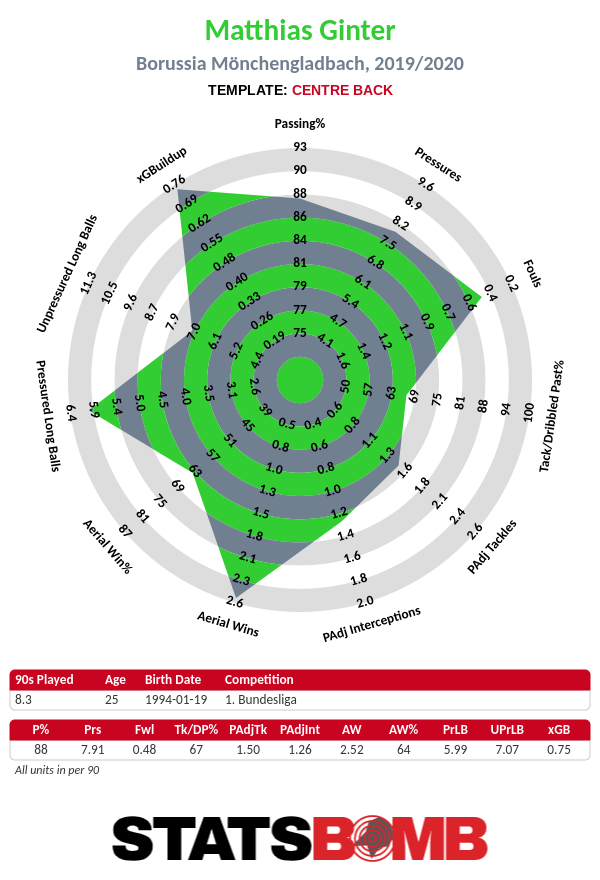 What’s not to love, right? Well, whilst their attacking output and hardcore pressing seem to be fully legit, Gladbach has profited from some sloppy finishing by opposing teams thus far.
What’s not to love, right? Well, whilst their attacking output and hardcore pressing seem to be fully legit, Gladbach has profited from some sloppy finishing by opposing teams thus far. 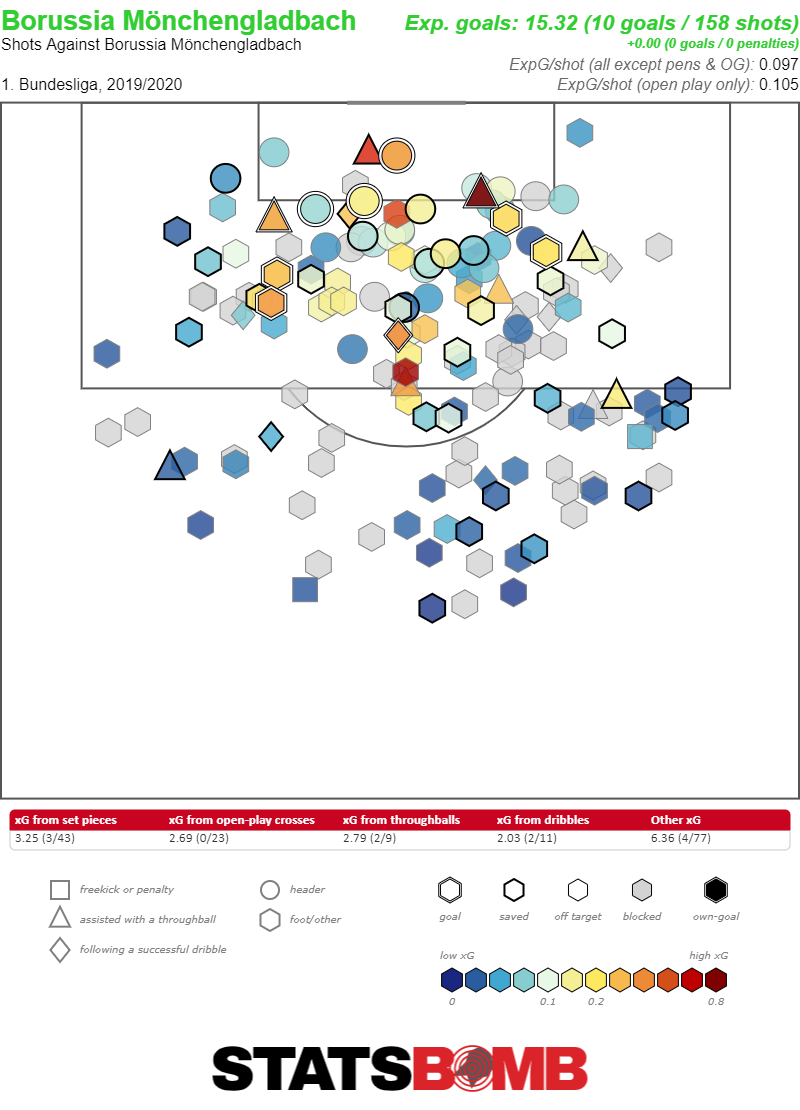 Ginter is probably the best ball-playing centre back Löw currently has at his disposal, but he can be coaxed into unnecessary long balls, something the national team manager is not a fan of. His average mobility means that Löw has to bring in more athletic types at the other two central defending positions when he starts Ginter. Jonathan Tah (Bayer Leverkusen) Tah was nationally ridiculed after a couple of bumbling errors in Germany’s recent home loss (2-4) to the Netherlands. As a true Tah stan, all I have to say is this: As the only non-converted-from-another-position and athletically superior defender in the backline at Bayer Leverkusen, Tah has to do a lot of cleaning up given manager Peter Bosz’ super aggressive pressing style. I mean, look at this:
Ginter is probably the best ball-playing centre back Löw currently has at his disposal, but he can be coaxed into unnecessary long balls, something the national team manager is not a fan of. His average mobility means that Löw has to bring in more athletic types at the other two central defending positions when he starts Ginter. Jonathan Tah (Bayer Leverkusen) Tah was nationally ridiculed after a couple of bumbling errors in Germany’s recent home loss (2-4) to the Netherlands. As a true Tah stan, all I have to say is this: As the only non-converted-from-another-position and athletically superior defender in the backline at Bayer Leverkusen, Tah has to do a lot of cleaning up given manager Peter Bosz’ super aggressive pressing style. I mean, look at this: 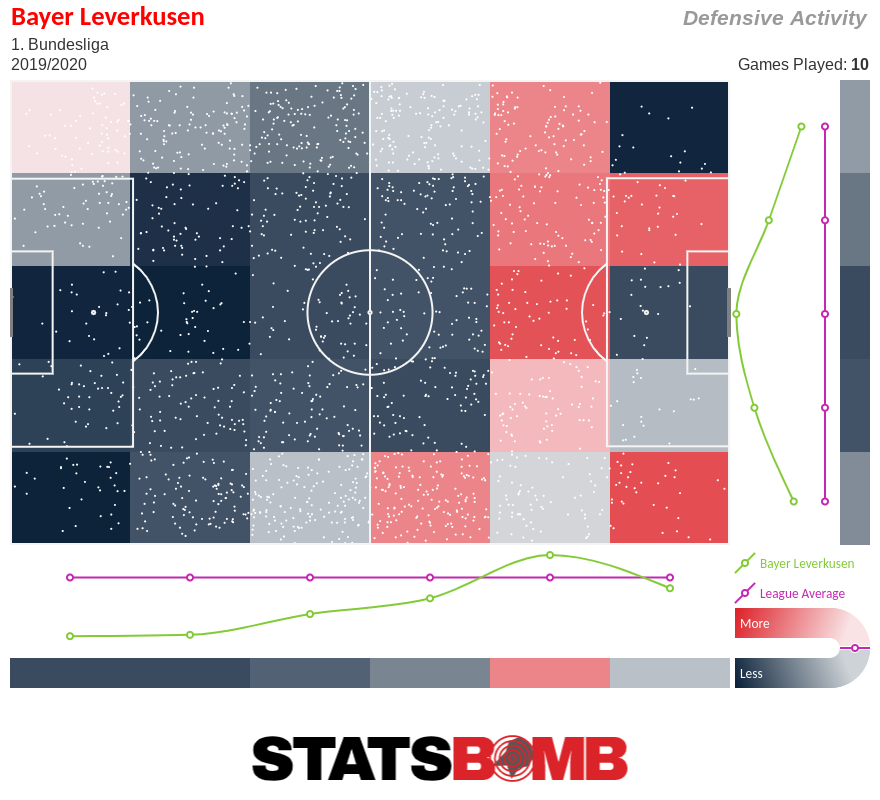 That is not a centre back-friendly playing style, as it leaves a lot of space to cover behind the back line and produces many situations where a central defender has to step in to fill the gap of a midfielder who is further upfield committed to a wave of pressing. If we take a gander at Tah’s individual numbers, we get a very different perspective than the one we got from his unfortunate outing against the Dutch. Tah, despite those high profile gaffes, does a lot of work.
That is not a centre back-friendly playing style, as it leaves a lot of space to cover behind the back line and produces many situations where a central defender has to step in to fill the gap of a midfielder who is further upfield committed to a wave of pressing. If we take a gander at Tah’s individual numbers, we get a very different perspective than the one we got from his unfortunate outing against the Dutch. Tah, despite those high profile gaffes, does a lot of work. 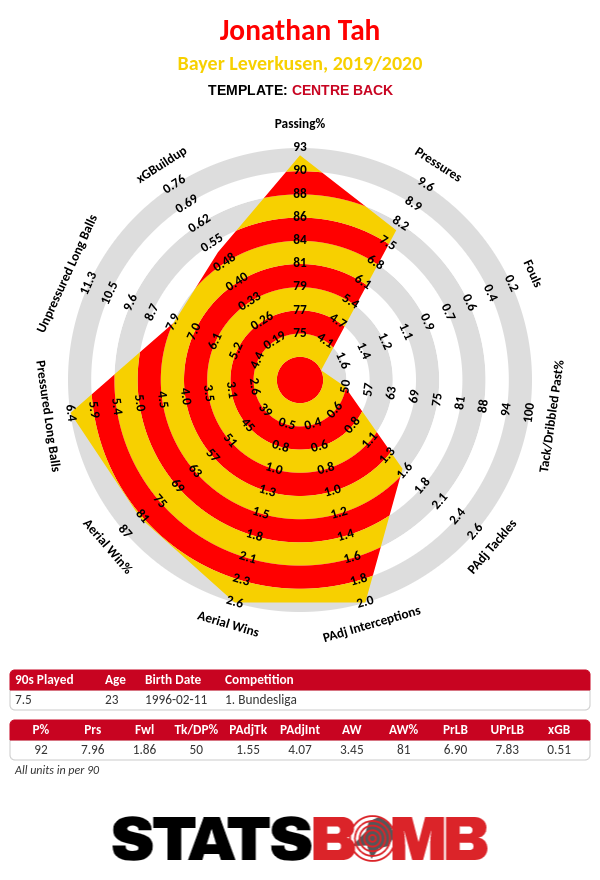 Niklas Stark (Hertha BSC) At 6 foot 4 and almost 200 lbs, Stark is a big guy. Almost as big as his Mannschaft teammate Tah. But the Berlin defender is much more of the ball-playing central defender, surprisingly quick and agile for someone of his build. Stark has proved himself an apt contributor to Hertha’s build-up play.
Niklas Stark (Hertha BSC) At 6 foot 4 and almost 200 lbs, Stark is a big guy. Almost as big as his Mannschaft teammate Tah. But the Berlin defender is much more of the ball-playing central defender, surprisingly quick and agile for someone of his build. Stark has proved himself an apt contributor to Hertha’s build-up play. 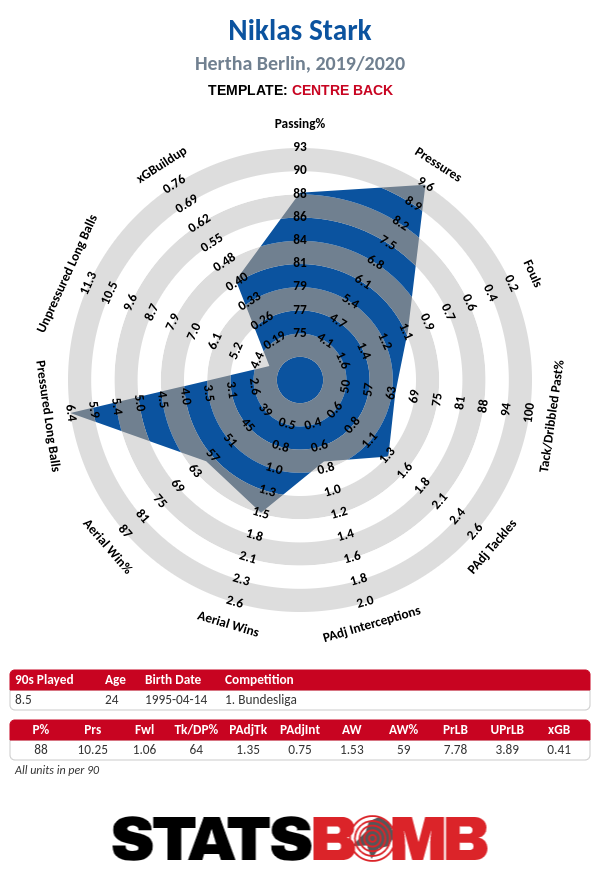 However, his style raises questions about whether Stark’s skillset is complementary to those of the other German centre backs. Stark has fine foot-speed, but would not be your ideal choice as an athletic, space-eating counterweight to the slower Ginter. Additionally, despite his size, he's not particularly imposing in the air. Robin Koch (SC Freiburg) We covered Koch, his team Freiburg and his surprisingly well-playing central defending partner Dominique Heintz extensively in last week’s Bundesliga column. Koch’s size, speed, ball-playing skills and weaknesses are similar to that of Stark. But the 23-year-old Freiburg defender does seem to have leapfrogged his 24-year-old national teammate from Berlin in Löw’s backline hierarchy.
However, his style raises questions about whether Stark’s skillset is complementary to those of the other German centre backs. Stark has fine foot-speed, but would not be your ideal choice as an athletic, space-eating counterweight to the slower Ginter. Additionally, despite his size, he's not particularly imposing in the air. Robin Koch (SC Freiburg) We covered Koch, his team Freiburg and his surprisingly well-playing central defending partner Dominique Heintz extensively in last week’s Bundesliga column. Koch’s size, speed, ball-playing skills and weaknesses are similar to that of Stark. But the 23-year-old Freiburg defender does seem to have leapfrogged his 24-year-old national teammate from Berlin in Löw’s backline hierarchy.
The long shots
‘Style breakers’: Kevin Vogt (Hoffenheim) and Julian Weigl (Borussia Dortmund) There’s some logic behind Löw not calling up the best two available Bundesliga centre backs that remain. Both Vogt and Weigl are former central midfielders who’ve been converted to centre back: Vogt as the passing metronome in the middle of Julian Nagelsmann’s (and now Alfred Schreuder’s) back three at Hoffenheim, Weigl as a-better-alternative-than-the-ones-we-have by Lucien Favre at Dortmund. 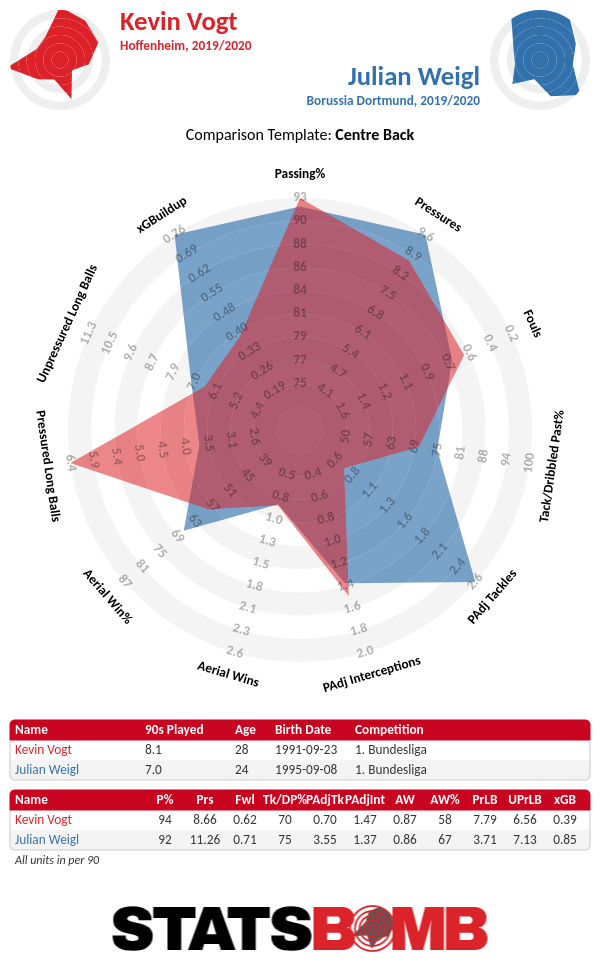 As you can see from the radars above, these two are very good at passing the ball. But a big part of the big rebrand that Löw and his officials at the German football federation wanted to establish after the World Cup debacle is a more dynamic playing style that's less dependent on possessional play. Even though Hoffenheim employs some forms of direct football, and the flashy transition skills of Reus and Sancho are one of the few things keeping Dortmund semi-afloat right now, both Vogt and Weigl would fit better in a patient attacking style.
As you can see from the radars above, these two are very good at passing the ball. But a big part of the big rebrand that Löw and his officials at the German football federation wanted to establish after the World Cup debacle is a more dynamic playing style that's less dependent on possessional play. Even though Hoffenheim employs some forms of direct football, and the flashy transition skills of Reus and Sancho are one of the few things keeping Dortmund semi-afloat right now, both Vogt and Weigl would fit better in a patient attacking style.
The weird, out-of-the-box option: Benjamin Hübner (Hoffenheim)
Which brings us to the one candidate you truly didn’t expect to find in this article. Hübner is already 30 years old, and it took until he was 26 years old for him to make his first minutes at the top level of German club football, at promoted FC Ingolstadt in 2015. While the solid Hoffenheim defender might not have the same level of technical skill or individual talent that most German internationals have, he does bring two valuable qualities to the table. First, he is a defence-first type of centre back, but not the type that frantically hooves the ball upfield blindly at the first sign of pressure. 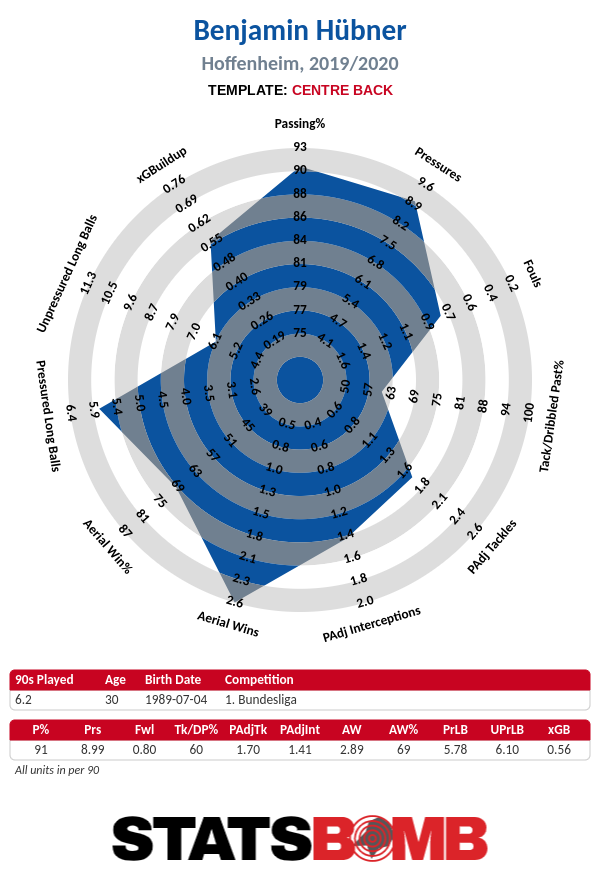 Second, Hübner is — wait for it — left-footed! Rüdiger, Can, Tah, Ginter, Stark and Koch — even Vogt and Weigl, for that matter — are all righties. Which, okay, that's fine. But it's not ideal when playing three at the back. The left-sided central defender, when right-footed, will always find himself in a bit of a jam when the spaces tighten up during build-up play. That alone should see Hübner considered for the national team. If Löw is going to call up five, or even six, centre backs for his 2020 Euros roster, there should be room for at least one leftie.
Second, Hübner is — wait for it — left-footed! Rüdiger, Can, Tah, Ginter, Stark and Koch — even Vogt and Weigl, for that matter — are all righties. Which, okay, that's fine. But it's not ideal when playing three at the back. The left-sided central defender, when right-footed, will always find himself in a bit of a jam when the spaces tighten up during build-up play. That alone should see Hübner considered for the national team. If Löw is going to call up five, or even six, centre backs for his 2020 Euros roster, there should be room for at least one leftie.
Celta Vigo's awkward marriage to Fran Escribá was doomed from the start
Celta Vigo were once a club with a plan. Shrewd recruitment and a succession of good coaching choices established them as an upwardly mobile top-flight team capable of putting together deep runs in knockout competitions. But things have started to go astray. In the two and a bit seasons since Eduardo Berizzo ended his three-year spell in charge in the summer of 2017, Celta have hired and fired four different coaches. Fran Escribá was the latest to go after a 1-0 home defeat to Getafe on Sunday — a fourth consecutive loss that left Celta firmly in the relegation zone. Last season was particularly turbulent. Antonio Mohamed flip-flopped between approaches without success; Miguel Cardoso oversaw a disastrous 14-match spell in which attacking output fell off a cliff; and then Escribá came in, settled the ship, got the underlying numbers moving in the right direction and achieved the results necessary to avoid relegation. 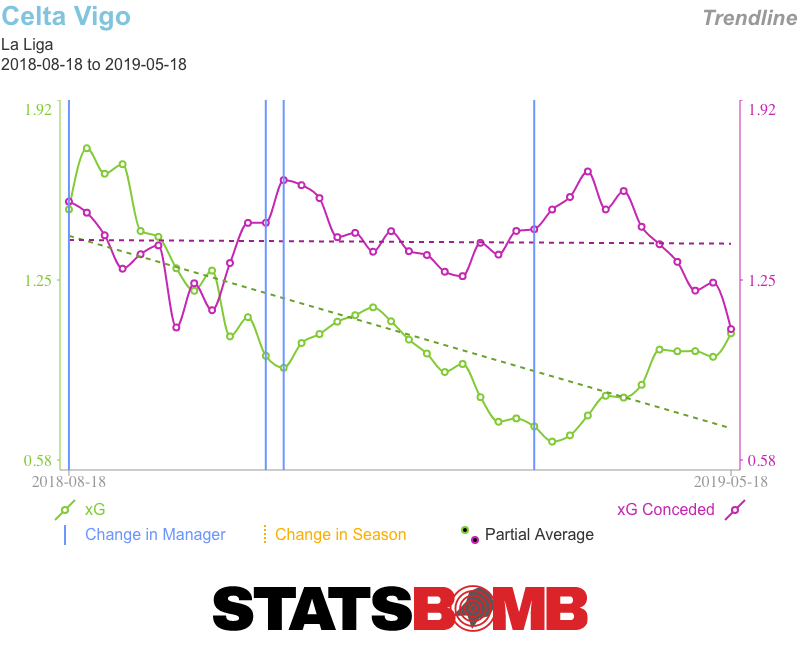 It was a job well done, but it was still surprising when the club elected to hand him a two-year contract. He was a pretty uninspiring choice for a team with a history of employing interesting and progressive coaches. Neither did it make much sense in view of the summer transfers leading up to this season. Amongst a series of signings largely funded by the departure of Maxi Gómez to Valencia was a trio of ball-playing, attack-minded players with previous links to the club: Denis Suárez, Rafinha and Santi Mina. Reports suggest the directorship acknowledged the tension between the profile of those players and Escribá’s primarily conservative approach, but it wasn’t enough to sway the decision. And so, Celta have become an example of what happens when you have a disconnect between recruitment and on-pitch playing style. Shackled by the confines of Escribá’s relatively boxy 4-4-2, a team featuring the aforementioned trio plus Iago Aspas (the top-scoring Spaniard in La Liga in each of the last three seasons) have scored just 6 times in 12 matches. Their underlying numbers aren’t much better.
It was a job well done, but it was still surprising when the club elected to hand him a two-year contract. He was a pretty uninspiring choice for a team with a history of employing interesting and progressive coaches. Neither did it make much sense in view of the summer transfers leading up to this season. Amongst a series of signings largely funded by the departure of Maxi Gómez to Valencia was a trio of ball-playing, attack-minded players with previous links to the club: Denis Suárez, Rafinha and Santi Mina. Reports suggest the directorship acknowledged the tension between the profile of those players and Escribá’s primarily conservative approach, but it wasn’t enough to sway the decision. And so, Celta have become an example of what happens when you have a disconnect between recruitment and on-pitch playing style. Shackled by the confines of Escribá’s relatively boxy 4-4-2, a team featuring the aforementioned trio plus Iago Aspas (the top-scoring Spaniard in La Liga in each of the last three seasons) have scored just 6 times in 12 matches. Their underlying numbers aren’t much better. 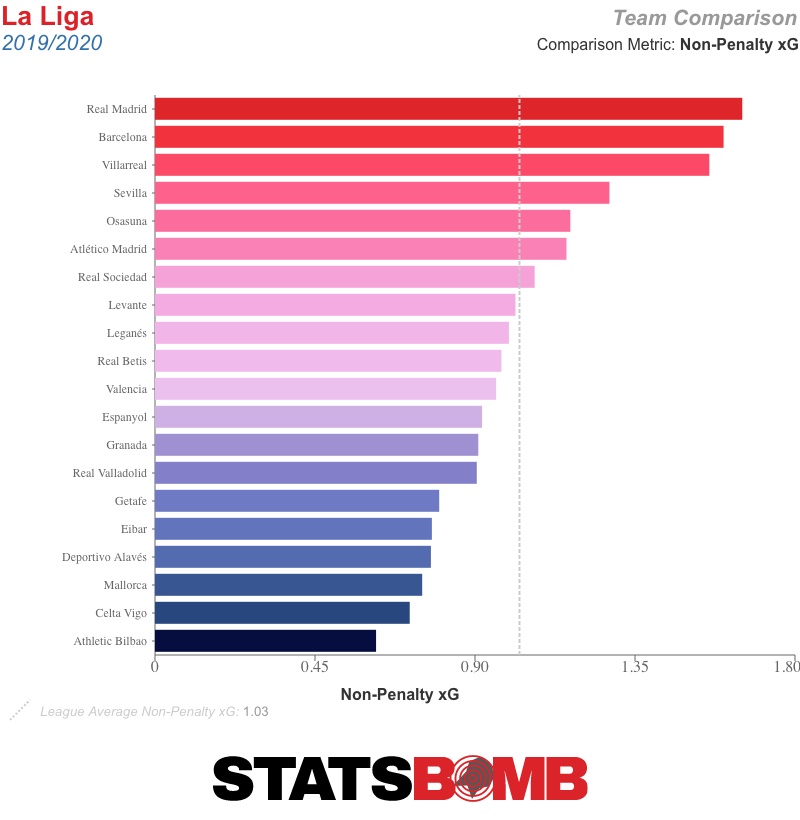 Celta have taken fewer shots (8.67) than all but Alavés, and their average shot quality (0.08 xG/Shot) is one of the lowest in the league. While under Escribá last season they were hardly an attacking powerhouse, even with the summer reinforcements, their numbers are even worse. They are creating less from pretty much everywhere: set pieces, counter attacks, high press situations. And it’s not even as if they’ve enjoyed a lot of attacking territory without quite managing to get off shots (a theory espoused by Escribá): they're sixth from bottom in their number of deep completions (successful passes within 20 metres of the opposition goal). Gómez has been missed. While with a primarily penalty box striker such as the Uruguayan, there is always a fairly symbiotic relationship between service and shot output, he did have an uncanny ability to get himself to the ball inside the area and finish at an above-average rate. Celta’s attacking issues do, though, feel more systemic than individual. The guys who were there last season, like Aspas and Brais Méndez — a wonderfully smooth player who appeared on the verge of a potential breakout campaign — have seen their attacking output drop off. As a team, they struggle to work the ball into good shooting positions, leaning more toward crosses as a means of entering the penalty area despite their lack of an obvious goalscorer there. That disconnect isn't only visible in the attack. Central defender Joseph Aidoo was the second-most expensive of the summer arrivals, coming in from Genk for an €8 million fee. He has certainly made an impression, for good or for bad, combining strong athletic qualities with questionable decision-making, both in and out of possession. But neither is he operating in the same context that he did at Genk. There, he performed impressively in a system that required him to execute more front-foot defending higher up the pitch. He was a high-volume tackler who won the majority of his individual ground duels.
Celta have taken fewer shots (8.67) than all but Alavés, and their average shot quality (0.08 xG/Shot) is one of the lowest in the league. While under Escribá last season they were hardly an attacking powerhouse, even with the summer reinforcements, their numbers are even worse. They are creating less from pretty much everywhere: set pieces, counter attacks, high press situations. And it’s not even as if they’ve enjoyed a lot of attacking territory without quite managing to get off shots (a theory espoused by Escribá): they're sixth from bottom in their number of deep completions (successful passes within 20 metres of the opposition goal). Gómez has been missed. While with a primarily penalty box striker such as the Uruguayan, there is always a fairly symbiotic relationship between service and shot output, he did have an uncanny ability to get himself to the ball inside the area and finish at an above-average rate. Celta’s attacking issues do, though, feel more systemic than individual. The guys who were there last season, like Aspas and Brais Méndez — a wonderfully smooth player who appeared on the verge of a potential breakout campaign — have seen their attacking output drop off. As a team, they struggle to work the ball into good shooting positions, leaning more toward crosses as a means of entering the penalty area despite their lack of an obvious goalscorer there. That disconnect isn't only visible in the attack. Central defender Joseph Aidoo was the second-most expensive of the summer arrivals, coming in from Genk for an €8 million fee. He has certainly made an impression, for good or for bad, combining strong athletic qualities with questionable decision-making, both in and out of possession. But neither is he operating in the same context that he did at Genk. There, he performed impressively in a system that required him to execute more front-foot defending higher up the pitch. He was a high-volume tackler who won the majority of his individual ground duels. 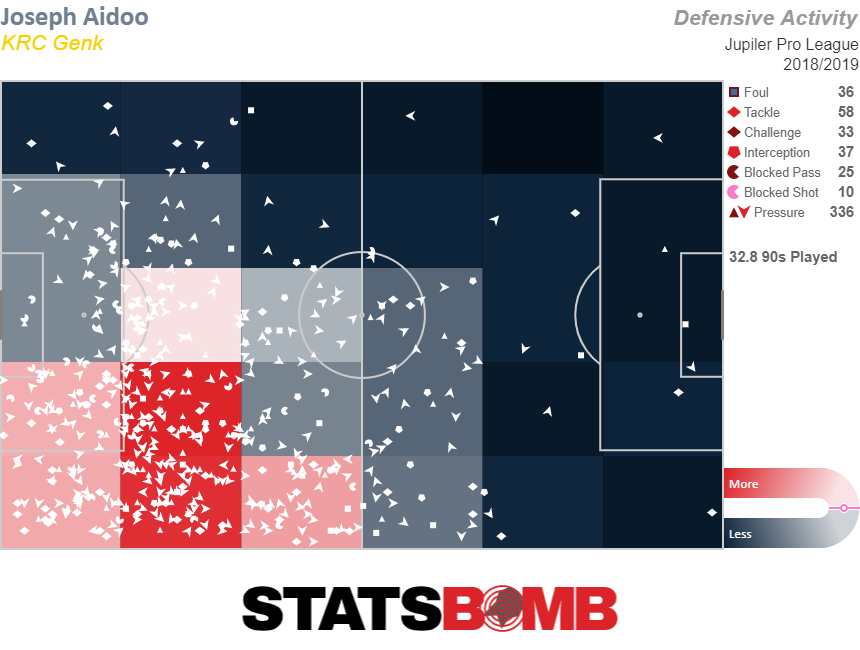 In contrast, at Celta he is part of one of the deepest defensive teams in La Liga.
In contrast, at Celta he is part of one of the deepest defensive teams in La Liga. 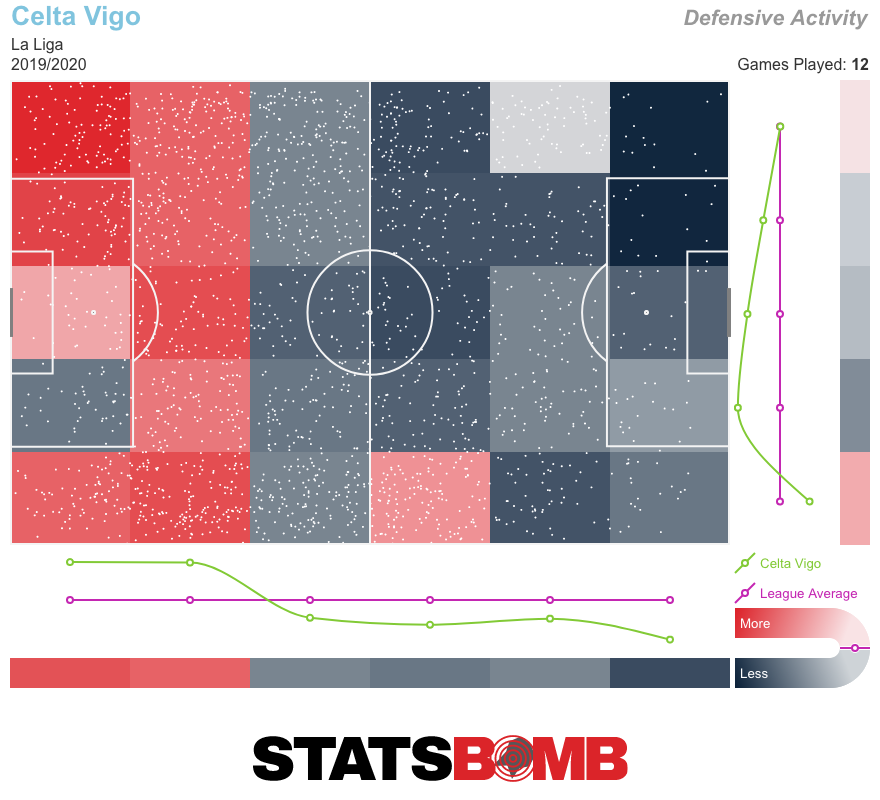 He's performing the majority of his defensive work inside his own penalty area. He is involved in more aerial duels than before and is frequently losing out on the ground.
He's performing the majority of his defensive work inside his own penalty area. He is involved in more aerial duels than before and is frequently losing out on the ground. 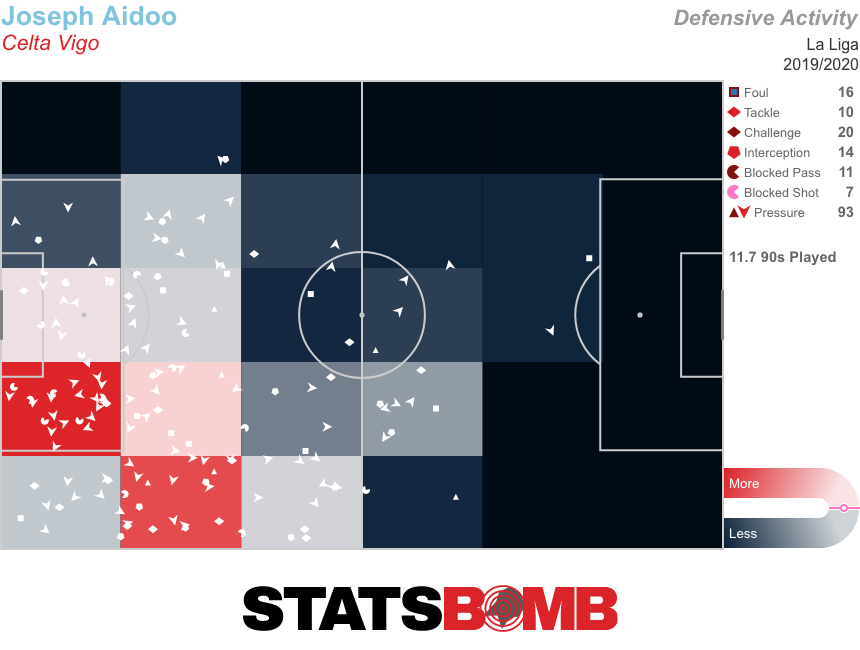 Celta’s underlying defensive numbers are the seventh-worst in the league. Not only are they in the bottom three with the third-worst goal difference in the division, but they are also in the bottom five in xG difference. By that measure, they have been worse this season (-0.34 xG difference per match versus -0.21) than during Escribá’s 12-match stretch down the back end of last.
Celta’s underlying defensive numbers are the seventh-worst in the league. Not only are they in the bottom three with the third-worst goal difference in the division, but they are also in the bottom five in xG difference. By that measure, they have been worse this season (-0.34 xG difference per match versus -0.21) than during Escribá’s 12-match stretch down the back end of last. 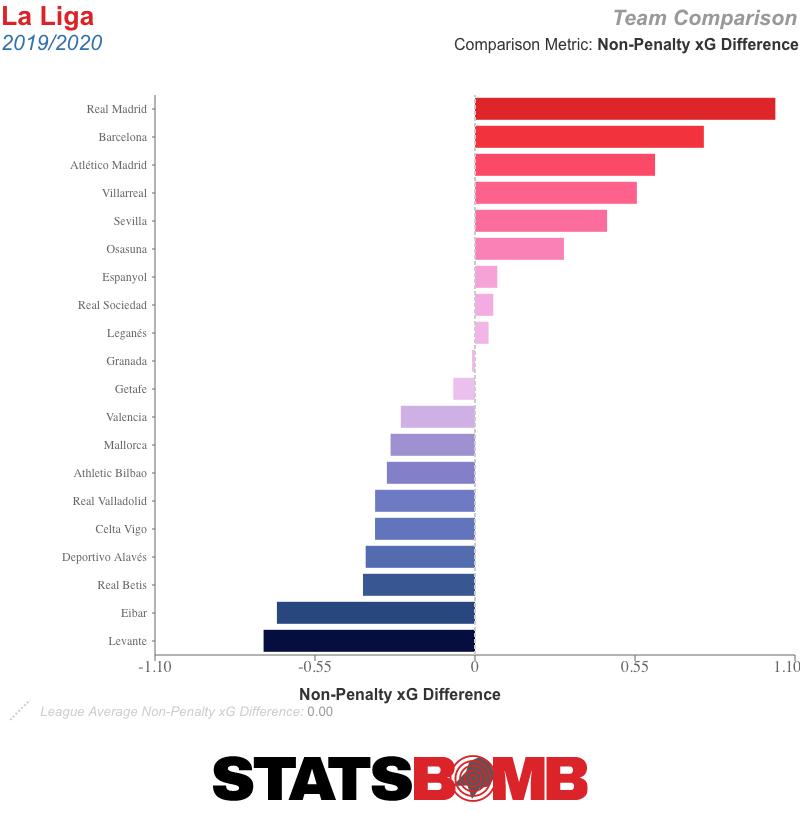 In the face of those top-line and underlying numbers, Celta had little choice but to remove Escribá from a position for which he was never really suited. After a series of unsuccessful and short-lived coaches, surely they would next seek stability in a proven operator like Abelardo or Quique Setién, the latter of whom seems tailor-made for their squad. Instead, they turned to Óscar García, the antonym of stability. Across seven previous coaching jobs, the longest the 46-year-old has ever remained in a position is his season and a half at Red Bull Salzburg. The others have lasted one season or less. His last two, at Saint-Étienne in France and Olympiacos in Greece, ended within 14 matches of taking charge. García’s possession-based approach certainly looks more apt for a squad that features midfield talents such as Stanislav Lobotka and Fran Beltrán, and apparently Celta have considered him before. But it is hard to get over the impression that he is still riding his earlier associations with Barcelona (where he acted as a youth coach), Johan Cruyff (whom he played under at Barcelona and worked with as an assistant during sporadic Catalonia national team matches) and Salzburg. To say that the jury’s out on him would almost be a generous appraisal. Celta had to do something. Simply removing the restrictions created by their previous system should nudge their attacking output up to an acceptable level. But this is also an appointment that could go very wrong indeed. The plan Celta once clung to so firmly appears to have gusted off into the Atlantic Ocean.
In the face of those top-line and underlying numbers, Celta had little choice but to remove Escribá from a position for which he was never really suited. After a series of unsuccessful and short-lived coaches, surely they would next seek stability in a proven operator like Abelardo or Quique Setién, the latter of whom seems tailor-made for their squad. Instead, they turned to Óscar García, the antonym of stability. Across seven previous coaching jobs, the longest the 46-year-old has ever remained in a position is his season and a half at Red Bull Salzburg. The others have lasted one season or less. His last two, at Saint-Étienne in France and Olympiacos in Greece, ended within 14 matches of taking charge. García’s possession-based approach certainly looks more apt for a squad that features midfield talents such as Stanislav Lobotka and Fran Beltrán, and apparently Celta have considered him before. But it is hard to get over the impression that he is still riding his earlier associations with Barcelona (where he acted as a youth coach), Johan Cruyff (whom he played under at Barcelona and worked with as an assistant during sporadic Catalonia national team matches) and Salzburg. To say that the jury’s out on him would almost be a generous appraisal. Celta had to do something. Simply removing the restrictions created by their previous system should nudge their attacking output up to an acceptable level. But this is also an appointment that could go very wrong indeed. The plan Celta once clung to so firmly appears to have gusted off into the Atlantic Ocean.
Stats of Interest
Barcelona lost away from home for the third time this season, at Levante on Saturday. While their underlying defensive numbers are slightly better on their travels, something bad happens to their attack the moment they leave the comfort of the Camp Nou. 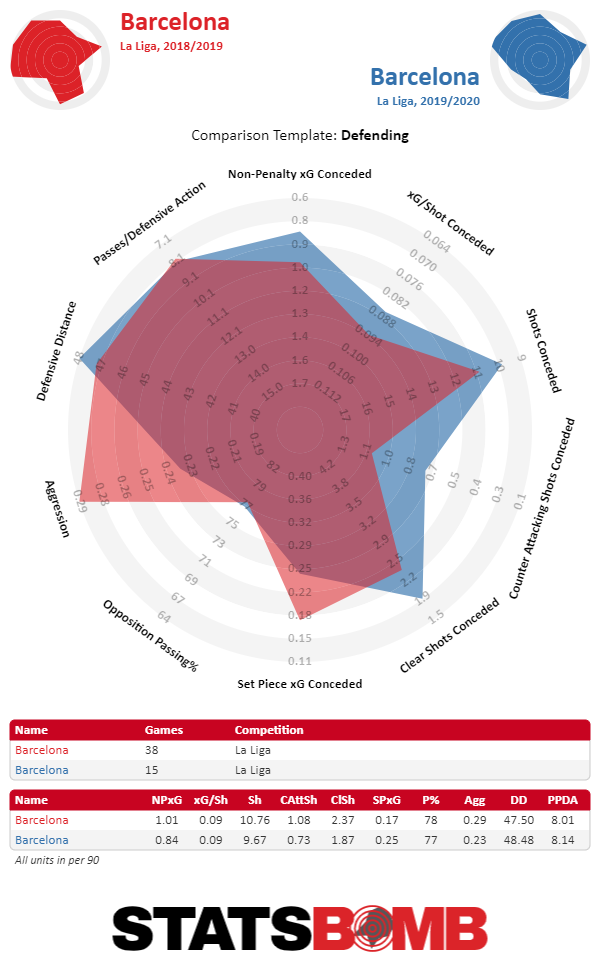 For some reason, La Liga defenders just can’t stop fouling Nabil Fekir. He has won 5.49 fouls per 90 minutes so far this season, over two more than Dani Parejo, the second-most fouled. He is tripped wherever he treads.
For some reason, La Liga defenders just can’t stop fouling Nabil Fekir. He has won 5.49 fouls per 90 minutes so far this season, over two more than Dani Parejo, the second-most fouled. He is tripped wherever he treads. 